
PUBLIC SCHOOLS OF NORTH CAROLINA
State Board of Education | Department of Public Instruction
Adopted 2017
Implementation 2018-19
GRADE
5
Understanding the NC English Language Arts
Standard Course of Study
ELA STANDARDS WITH CLARIFICATIONS AND GLOSSARY
STATE BOARD OF EDUCATION
SBE VISION: Every public school student, through access to needed resources and rigor, will graduate ready for post-secondary education and work, prepared to be
a globally engaged and productive citizen.
SBE MISSION: The State Board of Education will use its constitutional authority to lead and uphold the system of public education in North Carolina that guarantees
every student in this state an opportunity to receive a sound basic education.
NC DEPARTMENT OF PUBLIC INSTRUCTION
Mark Johnson, State Superintendent / 301 N. Wilmington Street / Raleigh, North Carolina 27601-2825
In compliance with federal law, the NC Department of Public Instruction administers all state-operated educational programs, employment activities and admissions without
discrimination because of race, religion, national or ethnic origin, color, age, military service, disability, or gender, except where exemption is appropriate and allowed by law.
Inquiries or complaints regarding discrimination issues should be directed to:
Maria Pitre-Martin, Ph.D., Deputy State Superintendent / 6307 Mail Service Center, Raleigh, NC 27699-6307 / Phone: (919) 807-3759 / Fax: (919) 807-4065
Visit us on the Web: www.ncpublicschools.org
WILLIAM COBEY
Chair: Chapel Hill – At-Large
A.L. COLLINS
Vice Chair: Kernersville – Piedmont Triad Region
DAN FOREST
Lieutenant Governor: Raleigh – Ex Officio
DALE FOLWELL
State Treasurer: Raleigh – Ex Officio
MARK JOHNSON
Secretary to the Board: Raleigh
BECKY TAYLOR
Greenville – Northeast Region
REGINALD KENAN
Rose Hill – Southeast Region
AMY WHITE
Garner – North Central Region
OLIVIA OXENDINE
Lumberton – Sandhills Region
GREG ALCORN
Salisbury – Southwest Region
TODD CHASTEEN
Blowing Rock – Northwest Region
WAYNE MCDEVITT
Asheville – Western Region
ERIC DAVIS
Charlotte – At-Large
PATRICIA N. WILLOUGHBY
Raleigh – At-Large
M0318

Grade 5 ELA Standards, Clarifications and Glossary
1
Understanding the English Language Arts Standard Course of Study for Grade 5
ELA Standards with Clarification and Glossary
Purpose
This document provides the Grade 5 NC Standard Course of Study for English Language Arts (2017) in a format that includes a
clarification of each standard and glossary. The standards define what students should know and be able to do. The clarifications
include an explanation of the standards, ideas for instruction, and examples. The standards appear in the left column with glossary
terms bolded. The middle column contains the clarification of the standard with ideas for “In the Classroom.” The right column is
the glossary.
These standards will be implemented in all North Carolina schools beginning in the 2018-19 school year.

Grade 5 ELA Standards, Clarifications and Glossary
2
GRADE 5
READING STRAND: K-12 Standards for Reading define what students should understand and be able to do by the end of each grade.
Students should demonstrate their proficiency of these standards both orally and through writing. For students to be college and
career ready, they must read from a wide range of high-quality, increasingly challenging literary and informational texts. One of the key
requirements of the Standards for Reading is that all students must be able to comprehend texts of steadily increasing complexity as
they progress through school. Students should also acquire the habits of reading closely and independently for sustained periods of
time. They need to connect prior knowledge and experiences to text. They must also show a steadily growing ability to discern more
from and make fuller use of text.
CCR Anchor Standards for Reading
Key Ideas and Evidence
1. Read closely to determine what the text says explicitly and to make logical inferences from it; cite specific textual evidence when writing
or speaking to support conclusions drawn from the text.
2. Determine central ideas (RI) or themes (RL) of a text and analyze their development; summarize the key supporting details and ideas.
3. Analyze how and why individuals, events, and ideas develop and interact over the course of a text.
Craft and Structure
4. Interpret words and phrases as they are used in a text and analyze how specific word choices shape meaning or tone.
5. Analyze the structure of texts, including how specific sentences, paragraphs, and larger portions of the text (e.g., a section, chapter, scene,
or stanza) relate to each other and the whole.
6. Assess how point of view, perspective, or purpose shapes the content and style of a text.
Integration of Ideas and Analysis
7. Integrate and evaluate content presented in diverse media and formats, including visually and quantitatively, as well as in words.
8. Delineate and evaluate the argument and specific claims in a text, including the validity of the reasoning as well as the relevance and
sufficiency of the evidence.
9. Analyze how two or more texts address similar themes or topics in order to build knowledge or to compare the approaches the authors take.
Range of Reading and Level of Complexity
10. Read and understand complex literary and informational texts independently and proficiently, connecting prior knowledge and experiences
to text.

Grade 5 ELA Standards, Clarifications and Glossary
3
Reading Standards for Literature
STANDARD
CLARIFICATION
GLOSSARY
Cluster: Key Ideas and Evidence
RL.5.1
Quote accurately from a text
when explaining what the text
says explicitly and when drawing
inferences from the text.
Students quote correctly from the text to support their
explanations of what the text clearly states as well as the
conclusions they have made from the text.
In the Classroom:
The teacher provides a text for students. He/she poses
text-dependent questions about the text. The teacher
models how to find the answers that are directly stated
in the text by highlighting the exact words.
The teacher chooses a poem. Students read the poem to
understand its meaning. Using two -column graphic
organizers, students write “what the text says” in the
first column, and “my inference” in the second column.
explicit, explicitly – stated clearly and directly,
leaving no room for confusion or interpretation
inference – a conclusion derived from logical
reasoning following an investigation of available
evidence
RL.5.2
Determine a theme of a story,
drama, or poem from details in
the text, including how characters
in a story or drama respond to
challenges or how the speaker in
a poem reflects upon a topic;
summarize the text.
Students establish the theme of a story, drama, or poem
by carefully examining key details. Students consider how
the characters in a story or a drama react to conflicts,
obstacles, and other challenges. Students also consider
what a poem’s speaker thinks about the subject. Students
provide a summary of the text by using key details.
In the Classroom:
The teacher uses an anchor chart as a graphic organizer
to model how students should analyze a character’s
response to a conflict in a story. Thinking aloud, the
teacher asks and answers questions such as, “What does
this author want me to think about?”, “What ideas stick
with me from this story?” or "What details does the
author use that provide clues to the theme?" The teacher
uses these ideas and models how to develop a theme.
Students begin by reading a text or the teacher reads the
selection. The teacher models how to look for key details
in the text to write a summary. The teacher highlights
drama – a genre or category of literature
generally designed to be presented to an audience
by actors on stage that relies heavily on dialogue
poem – a literary work, generally composed
in verse and using figurative language,
typically composed using a set structure
(i.e., organizational rules)
summary/summarize – a brief statement of the
main points of a larger work or text; the act of
providing such a statement or account
theme – the subject or underlying meaning that a
literary text directly or indirectly explains,
develops, and/or explores. In grades 1-3, theme is
often referred to as central message
topic – the subject or matter being discussed or
written about in a text, speech, etc.

Grade 5 ELA Standards, Clarifications and Glossary
4
STANDARD
CLARIFICATION
GLOSSARY
the opening statement in the beginning, key details in
chronological order in the middle, and the conclusion at
the end. The teacher and students determine what
information is irrelevant or unnecessary, and write the
summary using only the information that is important.
RL.5.3
Compare and contrast two or
more characters, settings, or
events in a story or drama,
drawing on specific details in
the text.
Students compare and contrast two or more characters,
settings, or events in a story or drama using specific
details. For example, students consider how characters
interact with one another, or how two settings influence
the events.
In the Classroom:
The teacher models using a Venn diagram to compare
and contrast two characters in a story. Thinking aloud,
the teacher asks and answers questions such as, “How
would I describe each character’s personality? How do I
know this?” or “How do these characters change in the
story? What details from the text support this?”
Students read a story or drama with several settings.
Using graphic organizers, the students record what is
similar and different about the settings. Students
describe what they noticed about the differences in
settings and explain what that observation reveals about
the characters.
compare – In a general sense, this is to measure
or note the similarities and differences between
or among objects, people, etc.; however, when
used together with contrast, this refers to the
highlighting of the ways in which two or more
objects, people, etc. are alike or similar.
drama – a genre or category of literature generally
designed to be presented to an audience by actors
on stage that relies heavily on dialogue
event – a thing that happens; an occurrence
setting – the time and place of the action in a
book, play, story, etc.
Cluster: Craft and Structure
RL.5.4
Determine the meaning of words
and phrases as they are used in a
text, recognizing specific word
choices that contribute to
meaning and tone.
Students examine the text to understand the meaning of
words or phrases, using the context to inform their
thinking. They identify words that add to the meaning
and tone of the text.
In the Classroom:
The teacher models encountering an unfamiliar word or
phrase in a text. He/she chooses one strategy and
models using it (for example, re-reading the paragraph
to find clues, looking at the pictures and the title, asking
phrase(s) – a small group of words representing a
conceptual unit, containing either a subject or a
verb, but not both. Both a subject and a verb
would constitute a clause (e.g., “Running through
the forest, she breathed in the fresh, crisp air.”)
tone – the attitude an author takes toward the
subject or topic of a text, generally revealed
through word choice, perspective, or point of view
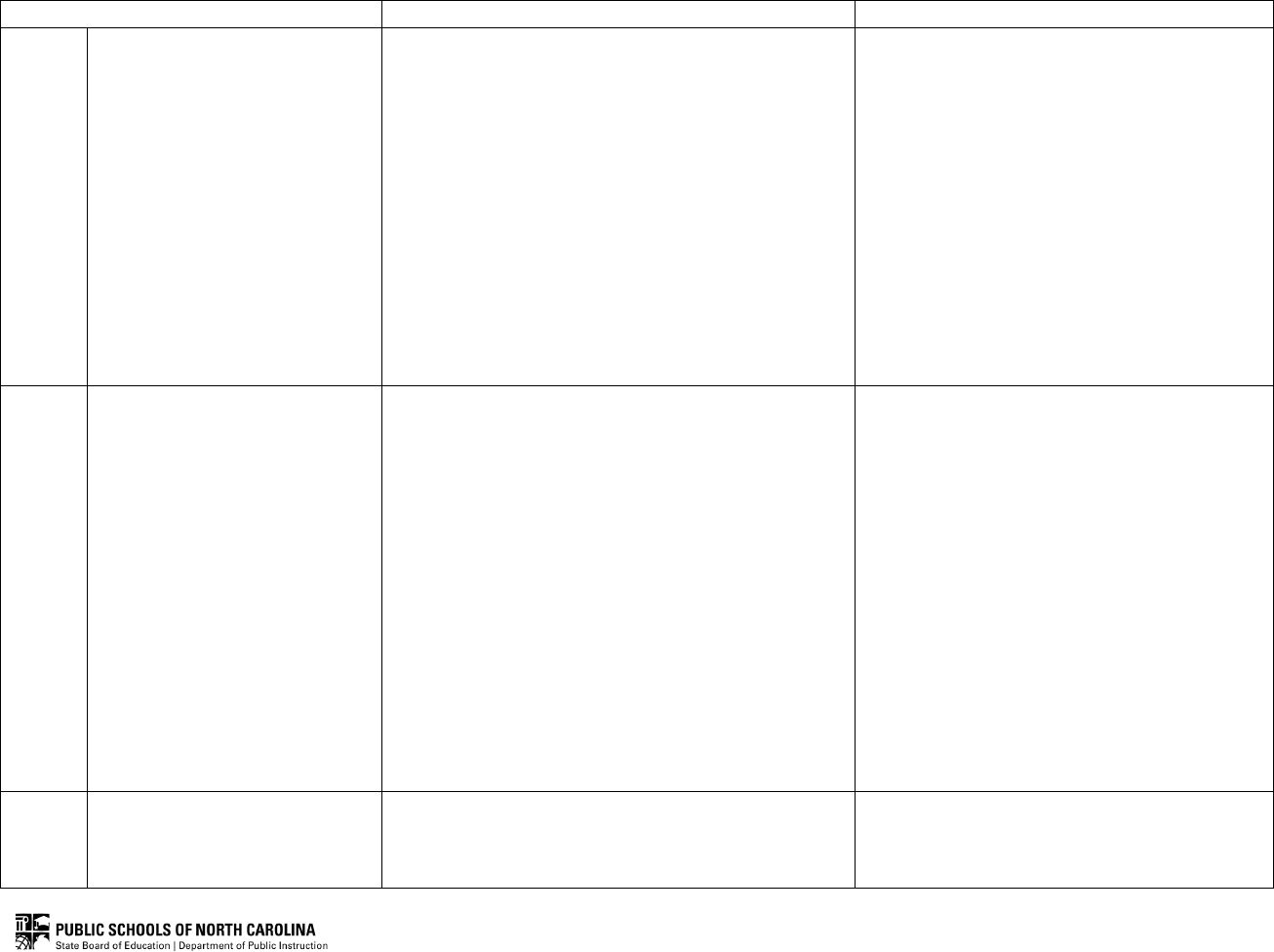
Grade 5 ELA Standards, Clarifications and Glossary
5
STANDARD
CLARIFICATION
GLOSSARY
questions about the rest of the paragraph). When the
class determines the meaning of the word or phrase, the
teacher uses guiding questions to assist students in
determining the meaning of the text.
Working in groups of four, students use a list of terms
that describe tone (gloomy, angry, tragic, etc.) to
generate words and phrases an author might use to
create that tone. These words and phrases should
describe the setting, characters, relationships among
characters, and the conflict. Next, students read a story
or drama. They highlight words and phrases that
describe the setting, characters, relationships among
characters, and the conflict. Using these words, groups
determine the tone of the piece.
RL.5.5
Explain how chapters, scenes, or
stanzas provide the overall
structure of a particular story,
drama, or poem.
Students describe how chapters, scenes, or stanzas fit
together to create the overall structure of a story,
drama, or poem.
In the Classroom:
Using a shared text (novel), teacher and students read
several chapters. Using graphic organizers, students
determine what each chapter is mostly about. Students
communicate how the chapters come together to
provide the structure of the story.
Students review the stanzas in a poem and explain how
they work together to provide a structure. They explain
the reason for each stanza and apply them to the poem
as a whole.
chapter – the main division within a book
drama – a genre or category of literature
generally designed to be presented to an
audience by actors on stage that relies heavily
on dialogue
poem – a literary work, generally composed
in verse and using figurative language,
typically composed using a set structure
(i.e., organizational rules)
stanza – the primary organizing structure in
poetry and verse that forms the basic recurring
measure, generally separating one main idea,
point, or event from another, similar to
paragraphs in prose writing
RL.5.6
Describe how a narrator’s or
speaker’s point of view influences
how events are described.
Students explain how a narrator/speaker views events in
a story and explain how the point of view impacts how
events are described.
describe, description, descriptive details –
to explain something in words; the details
necessary to give a full and precise account
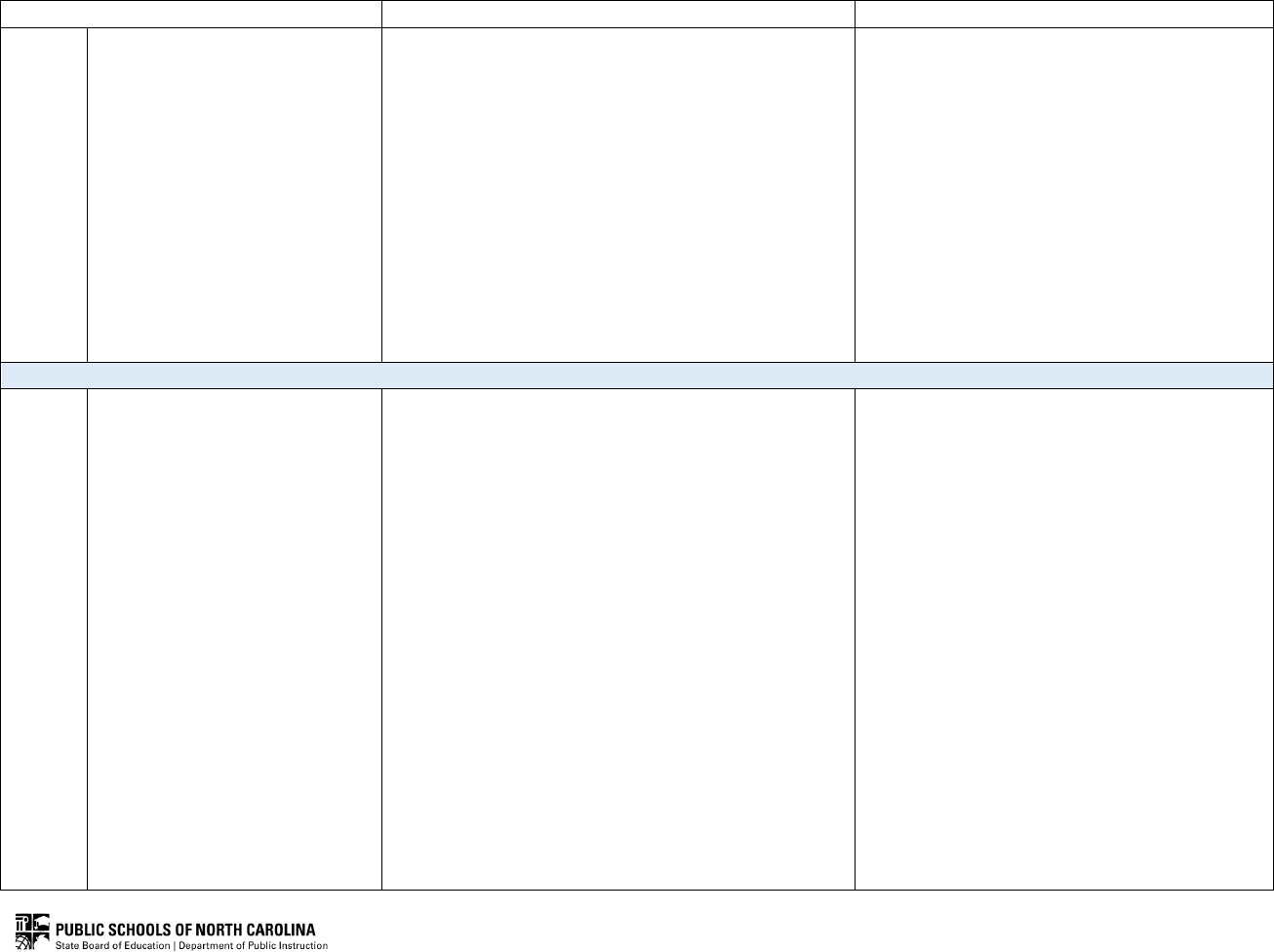
Grade 5 ELA Standards, Clarifications and Glossary
6
STANDARD
CLARIFICATION
GLOSSARY
In the Classroom:
The teacher reads aloud a text that has interesting
perspectives and points of view. The teacher pauses at
different points in the story and asks students to discuss
with partners some of the following types of questions:
Who is telling the story? How does this affect the events
of the story? Why do you think the narrator described
the events the way he/she did? This part of the story
made me think/feel _______, because_________.
Students select an event from the story told by a specific
character. Students write clear descriptions of the event,
describing how a character's point of view influenced
how he/she described the event.
event – a thing that happens; an occurrence
point of view – a narrator’s, writer’s, or speaker’s
position with regard to the events of a narrative;
one’s stance on events or information given
his/her orientation (physically and/or mentally) to
the events or information; the vantage point from
which one relates the events of a story or makes
an argument
Cluster: Integration of Ideas and Analysis
RL.5.7
Analyze how visual and
multimedia elements contribute
to the meaning, tone, or
aesthetics of a text.
Students examine visual elements (pictures, drawings,
cartoons) and multimedia elements (video, audio,
interactive images) to understand how these elements
add to the meaning, tone, or beauty of a text, such as a
graphic novel or multimedia presentation of fiction,
folktale, myth or poem.
In the Classroom:
Before reading aloud, the teacher previews the pages of
the text, modeling (thinking aloud) what he/she notices
in the visual or multimedia media elements. During the
read aloud, the teacher stops and analyzes the visual or
multimedia elements in the text. This modeling shows
students how to gather information and how that
information adds to or changes the meaning of parts of
the text.
The teacher reads aloud the words of a story without
showing the illustrations. Students discuss the overall
meaning and tone. The teacher reads the story again,
sharing the illustrations. Students describe to partners
aesthetics – concerning the nature and
appreciation of beauty
analyze – to critically examine the components of
a subject to understand its meaning and/or nature
as a whole

Grade 5 ELA Standards, Clarifications and Glossary
7
STANDARD
CLARIFICATION
GLOSSARY
how the illustrations changed or enhanced the meaning,
tone, or beauty of the text.
As students read independently, they stop and jot down
notes to explain how the illustrations or graphics helped
clarify their understanding of specific text details.
RL.5.8
Not applicable to literature.
RL.5.9
Compare and contrast stories
in the same genre on their
approaches to similar themes
and topics.
Students analyze the similarities and differences in
stories of the same genre (e.g., mysteries, adventure
stories) focusing on how they deal with similar themes
and topics.
In the Classroom:
The teacher selects two books of the same genre.
He/she reads aloud the texts to students. Students
discuss with partners how the themes in the stories are
similar. The teacher records their ideas on a class chart.
The teacher then models (think aloud) the approach the
author takes toward these themes that are similar.
Students work in pairs and read books of the same
genre. After each text is read, students record how each
text deals with and conveys the topic.
approaches – the particular decisions an author
makes when deciding how to present a topic
compare – In a general sense, this is to measure
or note the similarities and differences between
or among objects, people, etc.; however, when
used together with contrast, this refers to the
highlighting of the ways in which two or more
objects, people, etc. are alike or similar.
genre – a category or type of literature or
art characterized by similarities in form, style,
and subject
theme – the subject or underlying meaning that
a literary text directly or indirectly explains,
develops, and/or explores. In grades 1-3, theme
is often referred to as central message
topic – the subject or matter being discussed or
written about in a text, speech, etc.
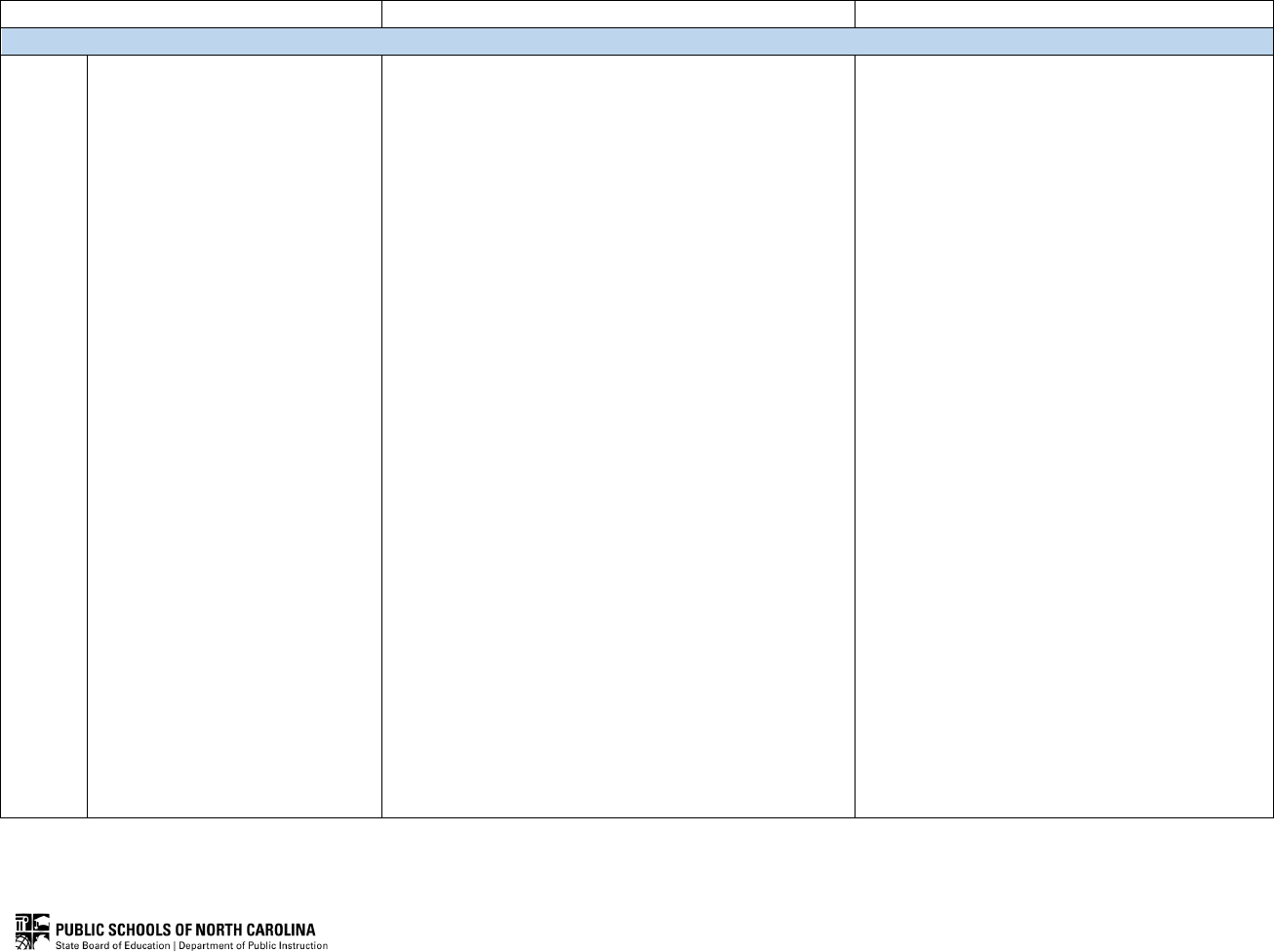
Grade 5 ELA Standards, Clarifications and Glossary
8
STANDARD
CLARIFICATION
GLOSSARY
Cluster: Range of Reading and Level of Complexity
RL.5.10
By the end of grade 5, read
and understand literature at
the high end of the 4-5 text
complexity band proficiently
and independently for sustained
periods of time. Connect prior
knowledge and experiences
to text.
By the end of grade 5, students competently read and
understand literary texts on the high end of the 4-5 text
complexity band (Lexile: 740-1010). They are able to
read independently for an extended time. Students
make connections to their background knowledge and
relevant experiences to engage with text.
In the Classroom:
The teacher provides students with opportunities to
select texts from a teacher-created text set. The teacher
also provides reading time for students to read the text
independently. While the students are reading, the
teacher confers with individual students and small
groups to learn what they do well, what they need to
work on, and what teaching skills or strategies would
help them become better readers.
The teacher provides in class time for students to talk
and write about the text they are reading independently.
Students keep interactive journals where they participate
in short written conversations with partners about what
they are reading.
The teacher confers with students and conducts small
reading groups while addressing a skill or strategy they
need help with.
Students engage in whole class close readings of literary
grade level text. The teacher models close reading
strategies for students. The teacher works through the
text gradually, having students take on more
responsibility for the reading and discussing.
independently – on one’s own, without aid from
another (such as a teacher)
proficient/proficiently – competent, skilled,
and/or showing knowledge and aptitude in doing
something; the level at which one is able to
complete a particular skill, such as reading
complex texts, with success
text complexity band – stratification of the
levels of intricacy and/or difficulty of texts,
corresponding to associated grade levels
(2-3, 4-5, 6-8, 9-10, 11-12), determined by three
factors: 1) qualitative dimensions (levels of
meaning, language complexity as determined by
the attentive reader), 2) quantitative dimensions
(word length and frequency, sentence length, and
cohesion), and 3) reader and task considerations
(factors related to a specific reader such as
motivation, background knowledge, persistence;
others associated with the task itself such as the
purpose or dema0nds of the task itself)
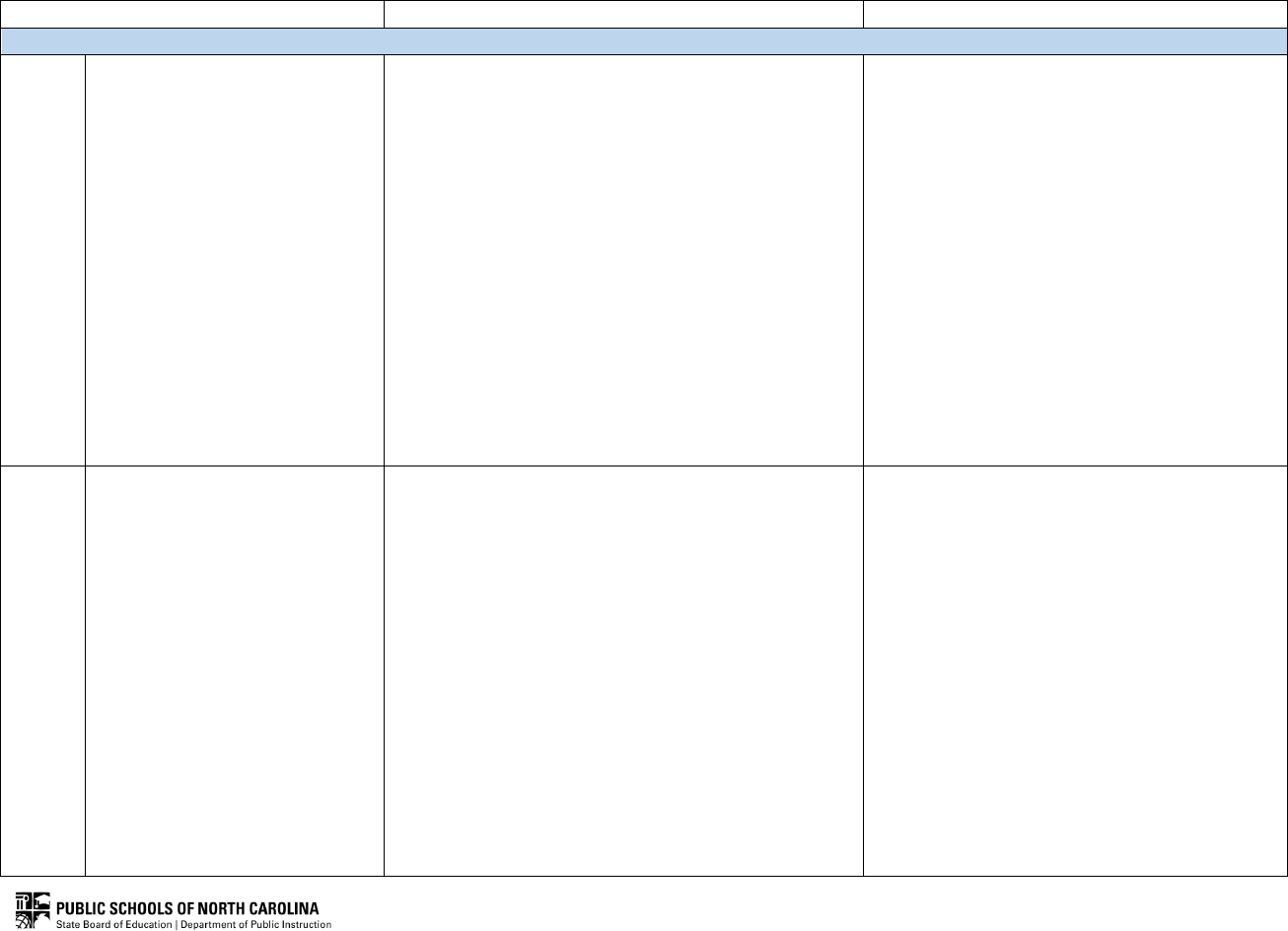
Grade 5 ELA Standards, Clarifications and Glossary
9
Reading Standards for Informational Text
STANDARD
CLARIFICATION
GLOSSARY
Cluster: Key Ideas and Evidence
RI.5.1
Quote accurately from a text
when explaining what the text
says explicitly and when drawing
inferences from the text.
Students quote correctly from the text to support their
explanations of what the text clearly states, as well as
the conclusions they have made.
In the Classroom:
The teacher provides examples of passages. Students
read each passage. Using graphic organizers, students
write what they know from the text, as well as what they
know from their own knowledge, and then students
combine these to make an inference, quoting accurately
from the text.
The teacher provides copies of a text for students to
read closely. Students read the text in chunks, and at
each chunk, the teacher asks a text-dependent question.
Students use highlighters to show where the question is
answered in the text.
explicit, explicitly – stated clearly and directly,
leaving no room for confusion or interpretation
inference – a conclusion derived from logical
reasoning following an investigation of available
evidence
RI.5.2
Determine two or more main
ideas of a text and explain how
they are supported by key details;
summarize the text.
Students establish two or more main ideas of a text
and point out how they are strengthened through key
details. Students provide a summary of the text using
key details.
In the Classroom:
Students work in groups of four to determine two main
ideas of a text. Then each group of four divides into
pairs. They highlight the key details of their assigned
portions of the text and determine the main idea.
Students share their findings as a group to establish
two main ideas for the text.
Using two-column notes, students write key details from
each section of a text in the left column and a summary
of that section in the right column. Working with
partners, they compare their two-column notes, making
event – a thing that happens; an occurrence
key details – specific and important parts of the
text that provide information, support, and
elaboration
main idea(s)/topic – the primary or central
topic(s) of a text or discussion that is supported
and developed by other, supporting points/ideas,
distinguishable from ideas and topics that can be
eliminated without changing the overall meaning
summary/summarize – a brief statement of the
main points of a larger work or text; the act of
providing such a statement or account
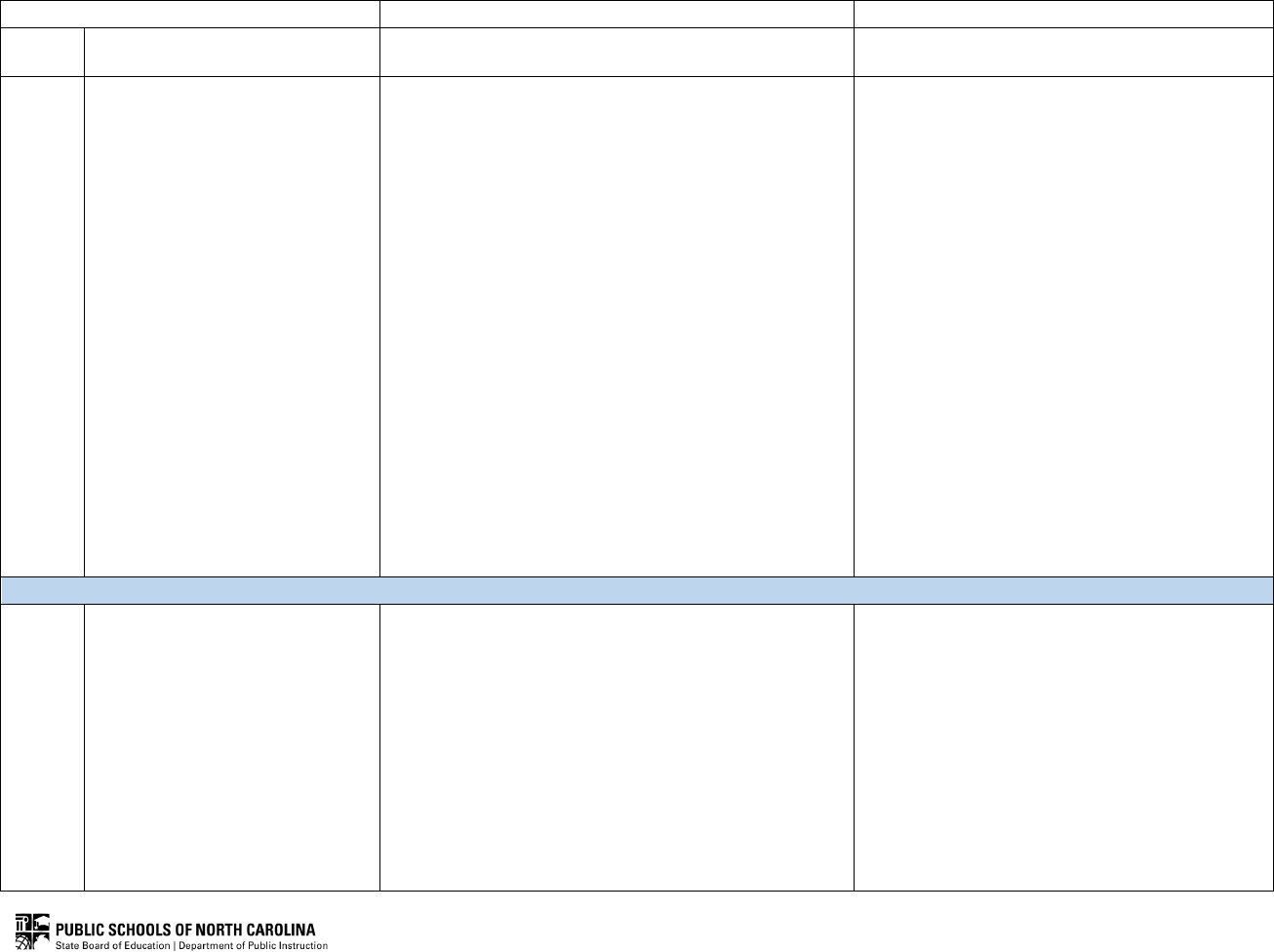
Grade 5 ELA Standards, Clarifications and Glossary
10
STANDARD
CLARIFICATION
GLOSSARY
revisions as necessary. Students combine the summaries
of the individual sections to summarize the entire text.
RI.5.3
Explain the relationships or
interactions between two or more
individuals, events, ideas, or
concepts in a historical, scientific,
or technical text based on specific
information in the text.
Students use the details in a historical, scientific, or
technical text to explain how two or more people,
events, ideas, or concepts are related or interact with
one another.
In the Classroom:
The teacher models using a double bubble map to
compare and contrast two concepts in a scientific text.
After the map is completed, the teacher uses guiding
questions to help students explain the relationship
between the two concepts.
Students read an account of a historical event. Using a
sequence chart, they draw diagrams or use specific
information from the text to show the sequence of
events. Between the events, students write how the
events are connected and what happened to cause the
next event. For example, students may explain how the
end of World War I led to the beginning of World War II,
or they may explain how the discovery of DNA impacted
the scientific community.
Cluster: Craft and Structure
RI.5.4
Determine the meaning of general
academic and domain-specific
words and phrases in a text
relevant to a grade 5 topic or
subject area.
Students examine the text to figure out the meaning of
words and phrases appropriate to fifth grade topics and
subject areas, using the context to inform their thinking.
In the Classroom:
The teacher identifies Tier 2 and Tier 3 words and phrases
in a text that students will be reading. He/she pre-teaches
the identified words or phrases that students will not be
able to figure out using context clues or word parts. As
students read, they apply the meanings of the pre-taught
words and phrases, and they use context to determine
the meanings of the other identified words and phrases.
domain-specific vocabulary/words/phrases –
Tier 3 words and phrases that are considered
unique to a particular subject or discipline that are
not typically used during informal conversation
general academic – Tier 2 academic words and
phrases that students encounter across multiple
subjects and disciplines (e.g., analyze, evaluate,
compare and contrast, etc.)
topic – the subject or matter being discussed or
written about in a text, speech, etc.

Grade 5 ELA Standards, Clarifications and Glossary
11
STANDARD
CLARIFICATION
GLOSSARY
Students read a science or social studies text,
highlighting the words and phrases that are unfamiliar
to them. Students use yellow to highlight words
they can define using context clues, green for those
they can define using root words, and orange for
those they can’t define using these skills. Students
complete Frayer models for the words and phrases
they have identified.
RI.5.5
Compare and contrast the overall
structure of events, ideas,
concepts, or information in two or
more texts.
Students find the similarities and differences in the
general structure of events, ideas, concepts, or
information in two or more texts including chronology,
comparison, cause/effect, and problem/solution.
In the Classroom:
The teacher uses an anchor chart that contains common
signal words for informational text structures (description,
sequence/chronology, cause/effect, problem/solution,
compare/contrast) to model identifying the structure of
a text by highlighting signal words.
Students work in pairs and read different articles on a
shared topic. The two articles utilize different text
structures. Students discuss the structures of their two
articles and how they identified each structure. They use
a Venn diagram to compare and contrast the structures
of the two articles, and then briefly explain why they
think the authors chose the structures that they used.
compare – In a general sense, this is to measure
or note the similarities and differences between
or among objects, people, etc.; however, when
used together with contrast, this refers to the
highlighting of the ways in which two or more
objects, people, etc. are alike or similar.
event – a thing that happens; an occurrence
RI.5.6
Analyze multiple accounts of the
same event or topic, noting
important similarities and
differences in the point of view
they represent.
Students examine two or more accounts of the same
event or topic. Students compare and contrast the
points of view represented.
In the Classroom:
The teacher selects texts that demonstrate how details
from texts on the same topic/event can provide similar
or different perspectives. The teacher reads the texts
aloud and models (think aloud) how to use the details to
analyze – to critically examine the components of
a subject to understand its meaning and/or nature
as a whole
point of view – a narrator’s, writer’s, or speaker’s
position with regard to the events of a narrative;
one’s stance on events or information given
his/her orientation (physically and/or mentally)
to the events or information; the vantage point

Grade 5 ELA Standards, Clarifications and Glossary
12
STANDARD
CLARIFICATION
GLOSSARY
analyze the authors’ perspectives. The teacher models
recording his/her thinking using a box (point of view)
and bullets (reasons and evidence to support the point
of view) graphic organizer. After reading more than one
text on the issue, the teacher models how to make point
of view comparisons across texts.
The teacher creates leveled text sets that address the
same issue or topic but provide similar and different
authors’ perspectives on the issues or topics. Students
select a few texts to read independently. For each text
that students read, they complete a three-column
graphic organizer identifying the point of view, reasons
(how I know this), and evidence (words and phrases that
provide information on the author’s point of view).
Students share with partners how two or more points of
view they identified were similar or different.
from which one relates the events of a story or
makes an argument
topic – the subject or matter being discussed or
written about in a text, speech, etc.
Cluster: Integration of Ideas and Analysis
RI.5.7
Draw on information from
multiple print or digital sources,
demonstrating the ability to locate
an answer to a question or to
solve a problem efficiently.
Students use information from several print or digital
sources to answer a question or solve a problem
completely.
In the Classroom:
The teacher poses a question or problem for students to
research. The teacher provides students with several print
and digital sources to research the answer to the question/
problem. The teacher provides students with a two-column
graphic organizer. One column is labeled “resources.” The
second column is labeled “information.” Students read
each resource and record information on the graphic
organizer that addresses the question or problem.
Students are presented with a question. They are given a
list of print and digital sources and locate the answer to
the question. In pairs, students determine which source
was the most efficient in finding the answer.
digital sources – refers to sources that present
information through digital media, such as digital
databases, online articles, websites, etc. Digital
sources are cited with a date of access as the
information may be dynamically changeable,
unlike print and other non-digital formats
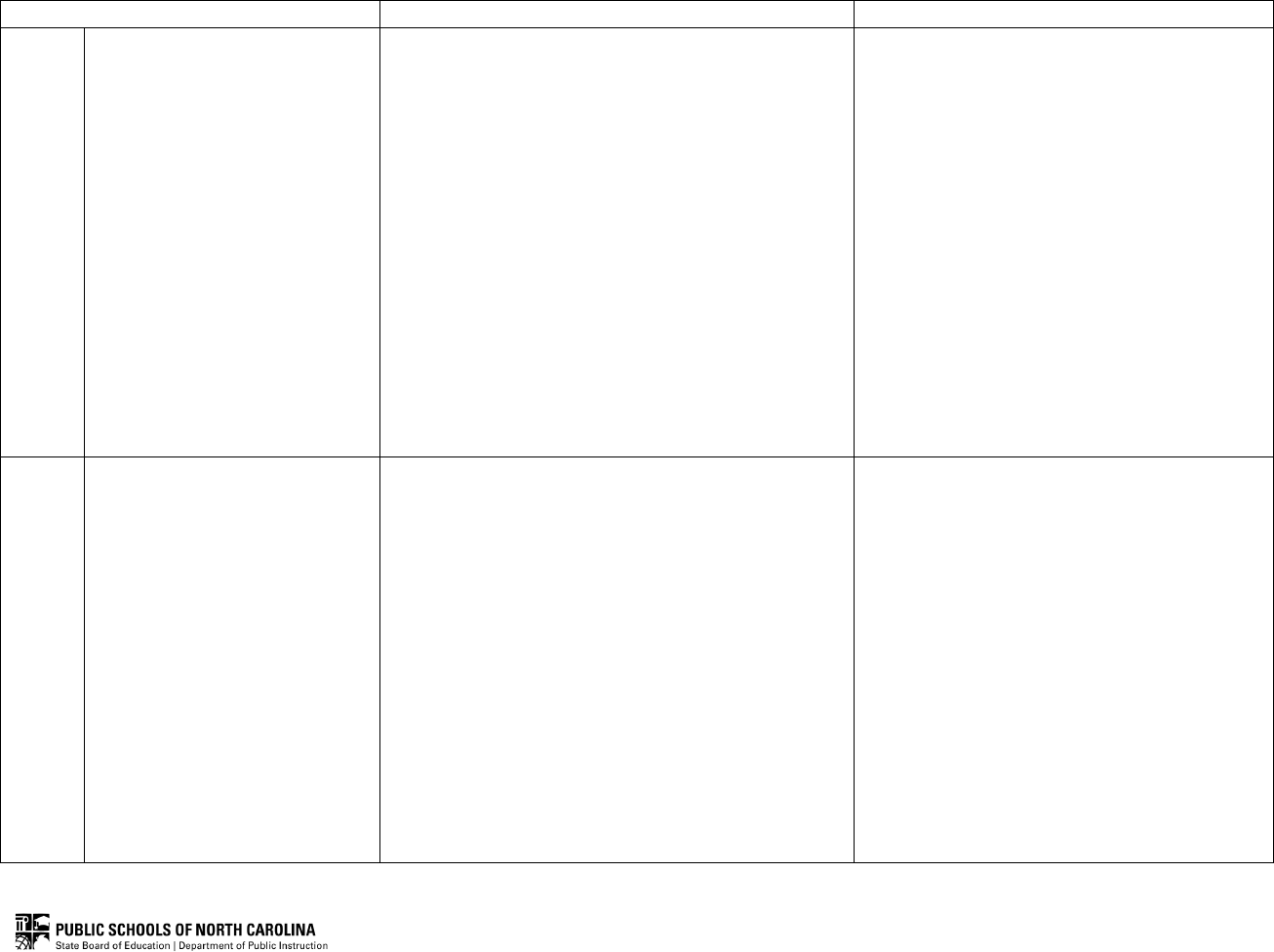
Grade 5 ELA Standards, Clarifications and Glossary
13
STANDARD
CLARIFICATION
GLOSSARY
RI.5.8
Explain how an author uses
reasons and evidence to support
particular points in a text,
identifying which reasons and
evidence support which point(s).
Students explain how the author supports specific points
in a text by using reasons and evidence. They recognize
which reasons and evidence support which points.
In the Classroom:
Using a short informational text, the teacher models for
the students how to read and identify the point that the
author is trying to make in the text. Using a “boxes and
bullets” graphic organizer, the teacher records the point
in the box. The teacher models for students how to go
back and reread the text to locate reasons or evidence in
the text to support the point (the bullets). Students then
determine if the reasons and evidence are sufficient.
The teacher uses a shared text. Students work with
partners to determine the point the author is making.
Partners examine the text features and find evidence
that supports the point.
evidence – facts and/or information (quotes,
statistics, graphs, etc.) presented together as a
body of support for a claim or value statement.
reasons/reasoning – an explanation or
justification for a claim, action, or value
statement; the process of thinking through an
argument, forming judgments, and drawing
conclusions using a process of logic
RI.5.9
Integrate information from
several texts on the same topic in
order to write or speak about the
subject knowledgeably.
Students combine information from multiple texts on
the same topic when writing or speaking to demonstrate
knowledge of the topic.
In the Classroom:
After the class closely reads several content-area
specific texts on the same topic, the teacher models
(think aloud) how to combine information from each
text in order to create a written text about the topic.
The teacher creates student research clubs. The teacher
provides each club with texts about a specific topic from
science or social studies. Students independently read
and group together facts and pieces of evidence from
the different texts to support their thinking about the
topic. Students meet as research groups and combine
their information.
topic – the subject or matter being discussed or
written about in a text, speech, etc.

Grade 5 ELA Standards, Clarifications and Glossary
14
STANDARD
CLARIFICATION
GLOSSARY
Cluster: Range of Reading and Level of Complexity
RI.5.10
By the end of grade 5, read and
understand informational texts at
the high end of the 4-5 text
complexity band proficiently and
independently for sustained
periods of time. Connect prior
knowledge and experiences to text.
By the end of grade 5, students competently read and
understand informational texts on the high end of
the 4-5 text complexity band (Lexile: 740-1010). They
are able to read independently for an extended time.
Students make connections to their background
knowledge and relevant experiences to engage with text.
In the Classroom:
Students engage in whole class close readings of
informational grade level texts. The teacher models for
students close reading strategies. He/she works through
the text, gradually having students take on more
responsibility for the reading and discussion.
The teacher provides students with different reasons for
reading specific texts and the appropriate instruction,
so students know what to expect when they encounter
these texts. Students keep track of which genres they
are reading so they can self-monitor as they read
future texts.
independently – on one’s own, without aid from
another (such as a teacher)
informational text – a nonfiction text whose
purpose is to provide information about or
explain a topic (e.g., infographic, advertisement,
documentary film, etc.)
proficient/proficiently – competent, skilled,
and/or showing knowledge and aptitude in doing
something; the level at which one is able to
complete a particular skill, such as reading
complex texts, with success
text complexity band – stratification of the
levels of intricacy and/or difficulty of texts,
corresponding to associated grade levels (2-3,
4-5, 6-8, 9-10, 11-12), determined by three
factors: 1) qualitative dimensions (levels of
meaning, language complexity as determined by
the attentive reader), 2) quantitative dimensions
(word length and frequency, sentence length, and
cohesion), and 3) reader and task considerations
(factors related to a specific reader such as
motivation, background knowledge, persistence;
others associated with the task itself such as the
purpose or demands of the task itself)

Grade 5 ELA Standards, Clarifications and Glossary
15
GRADE 5
READING FOUNDATIONAL SKILLS: The foundational skills are directed toward fostering students’ understanding and working
knowledge of concepts of print, the alphabetic principle, and other basic conventions of the English writing system, including
handwriting. These foundational skills are necessary and important components of an effective, comprehensive reading program
designed to develop proficient readers with the capacity to comprehend texts across a range of types and disciplines. A systematic
approach to handwriting instruction (manuscript and cursive) in the elementary grades is essential for students to communicate
their ideas clearly. To achieve handwriting proficiency, students need to apply their handwriting skills to authentic writing activities.
Instruction in the foundational skills should be differentiated. The point is to teach students what they need to learn and not what
they already know – to discern when particular children or activities warrant more or less attention.

Grade 5 ELA Standards, Clarifications and Glossary
16
Reading Standards for Foundational Skills
STANDARD
CLARIFICATION
GLOSSARY
Cluster: Handwriting
RF.5.2
Create readable documents
through legible handwriting
(cursive).
Students create documents in cursive that are easy for
others to read.
In the Classroom:
At the beginning of the year, the teacher pre-assesses
students by giving them copies of quotations or poems
and asking them to write them in cursive. This will guide
the teacher on how to target instruction in cursive.
In lessons, the teacher demonstrates and describes letter
and word formation to meet the needs of students.
He/she chooses an online resource that describes
handwriting strokes to form letters/words.
Cluster: Phonics and Word Recognition0
RF.5.4
Know and apply grade-level
phonics and word analysis skills in
decoding words.
a. Use combined knowledge
of all letter-sound
correspondences,
syllabication patterns,
and morphology to read
accurately unfamiliar
multisyllabic words in
context and out of context.
Students read words using grade-level appropriate
strategies.
• Students use what they know about letter-sound
correspondences to read words. They are able to decode
multisyllabic words by breaking the words into known
syllables and by using their knowledge of morphology
(e.g. roots and affixes) to break the word into known
parts. Students use these skills in context and in isolation.
In the Classroom:
The teacher reads a list of derivatives with a common
trait (e.g. adaptable, compressible, attachable,
comfortable) and guide students to notice the similar
sounds and sound-syllable correspondence. The teacher
then identifies and defines the affix and asks students to
articulate what they have learned.
Students highlight the root word in several multisyllabic
words. They use the root words, as well as any affixes, to
determine the unknown word.
analysis – a detailed examination of the
components of a subject to understand its
meaning and/or nature as a whole
morphology – the study of the form of words and
how words are formed, concerning the study of
roots (i.e., bases) and affixes (i.e., prefixes and
suffixes)
multisyllabic – having more than one syllable,
often requiring the application of phonics and
word analysis knowledge and skills
syllabication – the division of words into syllables
(e.g., syllable – syl – la – ble)

Grade 5 ELA Standards, Clarifications and Glossary
17
STANDARD
CLARIFICATION
GLOSSARY
Cluster: Fluency
RF.5.5
Read with sufficient accuracy
and fluency to support
comprehension.
a. Read on-level text with
purpose and understanding.
b. Read on-level prose and
poetry orally with accuracy,
appropriate rate, and
expression on successive
readings.
c. Use context to confirm or
self-correct word recognition
and understanding,
rereading as necessary.
Students read grade-level text smoothly and with enough
accuracy so that they understand the text.
• Students read and understand a variety of texts with
purpose (e.g. to learn new information, for
entertainment, etc.).
• Students read stories, poems, and other texts correctly,
maintain a suitable rate, and use their voices to show
changes and feelings on consecutive readings.
• Students reread or use surrounding pictures and words
to confirm, self-correct, and/or understand a word.
In the Classroom:
The teacher reads aloud often from a variety of genres to
model appropriate rate, phrasing, and expression.
Students engage in Reader’s Theatre, recite favorite
poems, or practice oral reading in small groups.
expression – the process of making one’s
thoughts, feelings, and ideas known to others; the
words, phrases, and clauses used to convey one’s
thoughts, feelings, and ideas; conveying emotion
and feeling when reading aloud through the use
of inflection, pacing, etc.
fluency, fluid reading – oral reading that occurs
easily and articulately and conveys an ease of
word movement; reading that is pleasing to listen
to where words are pronounced accurately,
punctuation cues are followed, and sentences are
read with expression
prose – language presented (either as written or
spoken) in its ordinary form, that is without
rhythm, rhyme, or meter
self-correct – one recognizes when he/she has
made an error (e.g., in the decoding of a word
being read) and fixes the error without
intervention from an external source, such as
a teacher

Grade 5 ELA Standards, Clarifications and Glossary
18
GRADE 5
WRITING STRAND: To be college and career ready, students should learn how to offer and support opinions/arguments,
demonstrate understanding of a topic under study, and convey real and/or imagined experiences. Students learn that a key purpose
of writing is to communicate clearly and coherently. The NC ELA Writing Standards emphasize the importance of writing routinely in
order to build knowledge and demonstrate understanding. The complete writing process (from prewriting to editing) is clear in the
first three writing standards. These standards define what students should understand and be able to do by the end of each grade.
CCR Anchor Standards for Writing Standards
Text Types, Purposes, and Publishing
1. Write arguments to support claims in an analysis of substantive topics or texts, using valid reasoning and relevant and sufficient evidence.
2. Write informative/explanatory texts to examine and convey complex ideas and information clearly and accurately through the effective
selection, organization, and analysis of content.
3. Write narratives to develop real or imagined experiences or events using effective technique, well-chosen details, and well-structured
event sequences.
4. Use digital tools and resources to produce and publish writing and to interact and collaborate with others.
Research
5. Conduct short as well as more sustained research projects based on focused questions, demonstrating understanding of the subject
under investigation.
6. Gather relevant information from multiple print and digital sources, assess the credibility and accuracy of each source, and integrate the
information while avoiding plagiarism.

Grade 5 ELA Standards, Clarifications and Glossary
19
Writing Guide for W.1, W.2 and W.3
W.5.1 Opinion writing is the first developing form of argument writing. Opinion writing has many purposes – to convince the reader
that the writer’s position is correct, to change the reader’s point of view, or to encourage the reader to take action. Writers use
reasons and information to support their points of view. At fifth grade, students are able to take a position on a topic or text and
provide logically ordered reasons with facts and details that support the position that has been taken.
The teacher supports the development of being able to write opinion pieces by exposing students to rich texts that clearly take a
position and provide logically ordered facts and details in support of this position. The teacher in fifth grade needs to model the
writing process for opinion pieces in order to help students understand how to take a position and support it with reasons presented
in a logical order that include facts and details. This starts by helping students clearly identify a topic where an opinion can be
stated. Students begin by gathering and organizing information to support their positions. The teacher involves students in both
group and individual research in order to find ideas to support the positions students wish to take on the topic. The teacher helps
students create graphic organizers to support their drafts with clear positions and supportive facts/details. He/she guides the
students to use linking words and phrases to connect opinions and reasons. Students write concluding statements or sections
connected to their opinions.
Students then revise and edit their writing to ensure their position has adequate support, follows writing conventions, and uses
correct grammar and spelling. Peer review and editing are important parts of this process. Additionally, the teacher conducts writing
conferences with students through the drafting and revising processes to help fifth grade students write clear and well-supported
opinion pieces. During the editing process, the teacher and peers guide students through rewriting or trying a new approach while
considering the task, purpose and audience of the piece. Guiding questions for this purpose might include "Do the facts and details
support my reasons and point of view?” and "Can my reader clearly understand my position and the reasons I took this position?"

Grade 5 ELA Standards, Clarifications and Glossary
20
W.5.2 Informative/explanatory writing communicates information. It has many purposes – to increase the reader’s understanding of
a topic, process, or procedure; to provide clarification on a topic, process, or procedure; and/or to answer “what,” “how,”
and “why” questions regarding the topic under study. Writers use previous knowledge and information from primary and
secondary sources in their pieces to increase the reader’s knowledge of a given topic. It is imperative for the teacher to make the
distinction between informative/explanatory writing and opinion writing. It is important for the teacher to emphasize that
Informative/explanatory writing is not meant to convince people of a belief or influence people’s behaviors. Fifth graders write
informative/explanatory pieces to investigate a topic and clearly communicate ideas and information about the topic.
The teacher supports the development of being able to write informative/explanatory texts by exposing students to relevant,
interesting, detailed texts that provide information that can be clearly and easily understood. The teacher in fifth grade
needs to model the writing process for informative/explanatory texts in order to help students understand the structure of
informative/explanatory writing. This begins by helping students identify a topic they can write an informative/explanatory piece
about. The teacher involves students in both group and individual research in order to assist students with gathering information
and ideas related to their topics.
The teacher helps students create graphic organizers during the research process in order to organize the information that will be
presented. The teacher ensures that students gather facts, definitions, concrete details, quotations, or any other additional
information and examples related to the topic to include in their writing.
The teacher guides students’ writing so it is organized to introduce and explain the identified topic clearly, as well as to provide a
general overview and focus for their pieces. Student writing provides sufficient information in support of this explanation. This
information is organized in a logical manner that groups related information together. Students are also encouraged to use precise
language to describe the topic under study. In addition, students need to be familiar with the domain-specific vocabulary related
to their topic and use it appropriately in their writing. Throughout the text, students also use linking words, phrases, and clauses
to connect ideas within a category of information as well as across categories of information. To provide closure to their
informative/explanatory pieces, students write conclusions in the form of statements or paragraphs that connect to the
information or explanation presented. Throughout their writing, students may include formatting (e.g. headings, sections, etc.),
use illustrations, and/or use multimedia to help the reader’s understanding of the topic.

Grade 5 ELA Standards, Clarifications and Glossary
21
Students then revise and edit their writing to ensure their position has adequate support, follows writing conventions, and uses
correct grammar and spelling. Peer review and editing are important parts of this process. Additionally, the teacher conducts writing
conferences with students through the drafting, revising, and editing processes to support students at fifth grade with writing a
piece that includes a clearly identified topic with multiple facts, definitions, concrete details, quotations, precise language, domain-
specific vocabulary, and any additional information necessary in order to explain the identified topic. During the editing process, the
teacher and peers guide students and consider the task, purpose, and audience the writing addresses. Guiding questions for this
might include “Do I clearly identify and introduce my topic?” and “Do I achieve my purpose and clearly explain my topic so the
reader can understand what I am explaining?” Students are encouraged to revise and edit more than once, so they learn that writing
is a recursive process that sometimes requires rewriting or trying a new approach.

Grade 5 ELA Standards, Clarifications and Glossary
22
W.5.3 Narratives share an experience, either real or imagined, and use time as their core structures. Narratives can be stories,
novels, and plays, or they can be personal accounts, like memoirs, anecdotes, and autobiographies. Narrative writing has many
purposes—to inform, teach, persuade, or entertain readers. Writers utilize event sequencing and pacing, create characters, use vivid
sensory details and other literary elements to evoke reactions from and create effects on the reader. Fifth graders write narratives
to unfold and share real or imagined experiences or events using effective narrative techniques, illustrative details, and a clear
sequence of events.
The teacher supports the development of narrative writing by exposing students to narrative stories that use rich sensory details to
describe an event. The fifth-grade teacher needs to model the writing process for narrative pieces in order to help students
understand how to write a story that moves in sensible order and uses concrete details. This begins by helping students generate
lists of events they have experienced or can imagine experiencing in order to identify topics for their narrative pieces. The teacher
provides the students with graphic organizers to help them sequence story events and identify relevant details to include.
Students begin composing their drafts by acquainting the reader with the circumstances surrounding their chosen topics, including
the narrator and/or characters. Students then unfold the sequence of events in a manner that is unforced. Students use dialogue,
description, and pacing so the reader pictures the story unfolding as it is read. To signal the order of events, students use temporal
transition words, phrases, and clauses to maintain the progression of events. To develop their characters, students use dialogue and
describe character thoughts, feelings, and actions to show their responses to other characters and circumstances in the narratives.
Students also use words, phrases, and imagery to tell the story in a way that is more tangible or realistic. Students end their
narratives in a way that connects to the experiences or events shared in the narrative.
Students then revise their writing to ensure that their narrative uses effective narrative techniques, concrete details, and a natural
order of events. Students edit their writing to ensure their narrative follows writing conventions, uses correct grammar, and contains
proper spelling. Peer review and editing are important parts of this process. Additionally, the teacher conducts writing conferences
with students through the drafting, revising, and editing processes to support fifth grade students with narrative writing. During the
editing process, the teacher and peers guide students through rewriting and trying a new approach as well as considering the task,
purpose, and audience of the piece. Guiding questions for this purpose might include “Does the order of this story make sense?” and
“Do the details in my narrative specifically describe the events?”
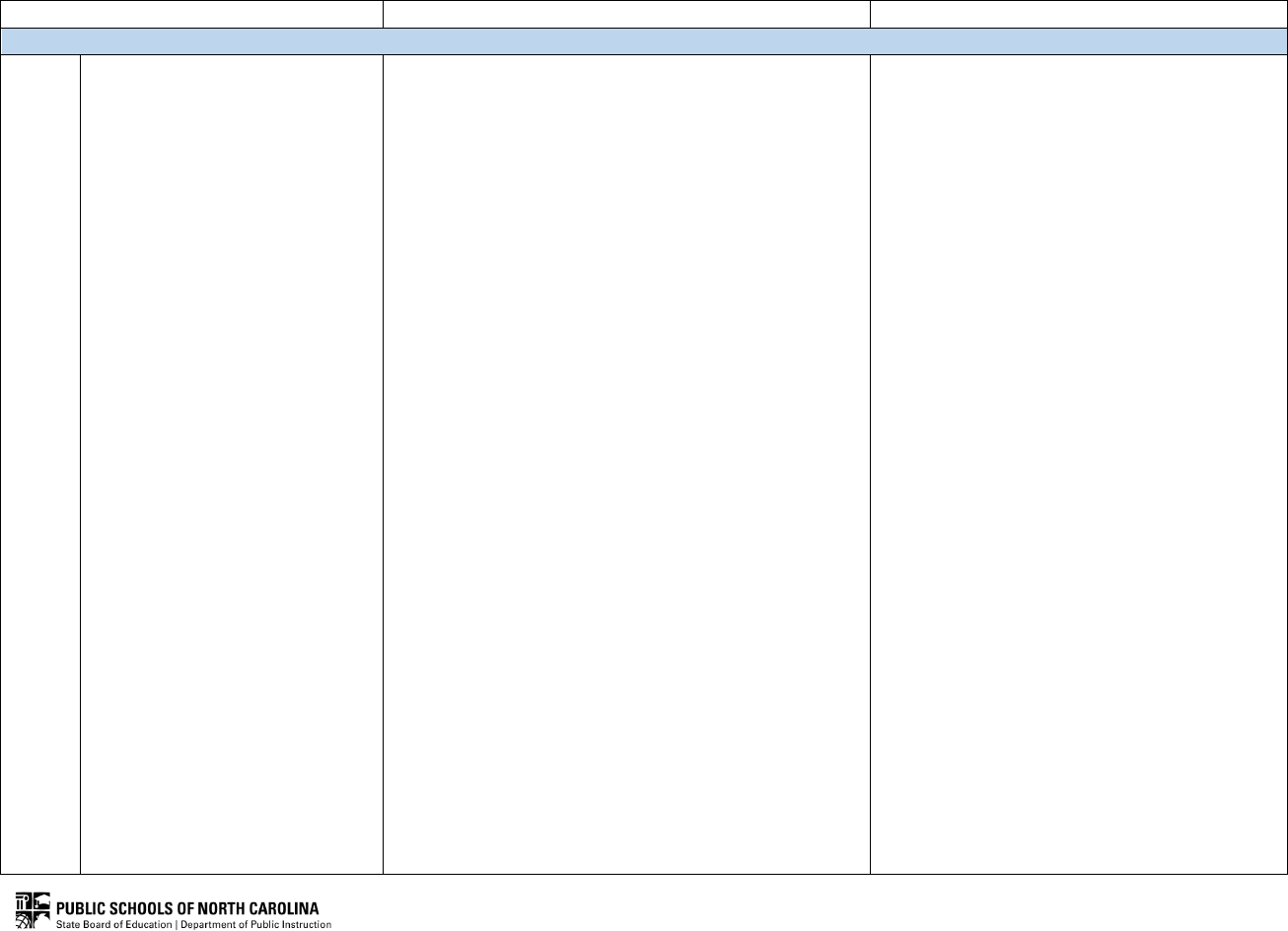
Grade 5 ELA Standards, Clarifications and Glossary
23
Writing Standards
STANDARD
CLARIFICATION
GLOSSARY
Cluster: Text Types, Purposes, and Publishing
W.5.1
Write opinion pieces on topics or
texts, supporting a point of view
with reasons and information.
a. Organize information and ideas
around a topic to plan and
prepare to write.
b. Introduce a topic or text
clearly, state an opinion, and
create an organizational
structure in which ideas are
logically grouped to support
the writer’s purpose.
c. Provide logically ordered
reasons that are supported by
facts and details.
d. Link opinion and reasons using
words, phrases, and clauses.
e. Provide a concluding statement
or section related to the
opinion presented.
f. With guidance and support
from peers and adults, develop
and strengthen writing as
needed by revising, editing,
rewriting, or trying a new
approach, with consideration
to task, purpose, and audience.
See Writing Guide
editing – the process by which an author
improves a text by correcting errors in grammar
and/or conventions, (e.g., grammatical,
structural, etc.), verifying precision of language,
eliminating redundancy, and more.
phrase(s) – a small group of words representing a
conceptual unit, containing either a subject or a
verb, but not both. Both a subject and a verb
would constitute a clause (e.g., “Running through
the forest, she breathed in the fresh, crisp air.”)
point of view – a narrator’s, writer’s, or speaker’s
position with regard to the events of a narrative;
one’s stance on events or information given
his/her orientation (physically and/or mentally)
to the events or information; the vantage point
from which one relates the events of a story or
makes an argument
purpose – the reason for a particular action or
creation (e.g., literary work or speech); the reason
for which something exists (e.g., to persuade, to
inform, to express, and/or to entertain)
reasons/reasoning – an explanation or
justification for a claim, action, or value
statement; the process of thinking through an
argument, forming judgments, and drawing
conclusions using a process of logic
revision/revising – the process of rereading
something that has been produced and
making changes in order to clarify meaning,
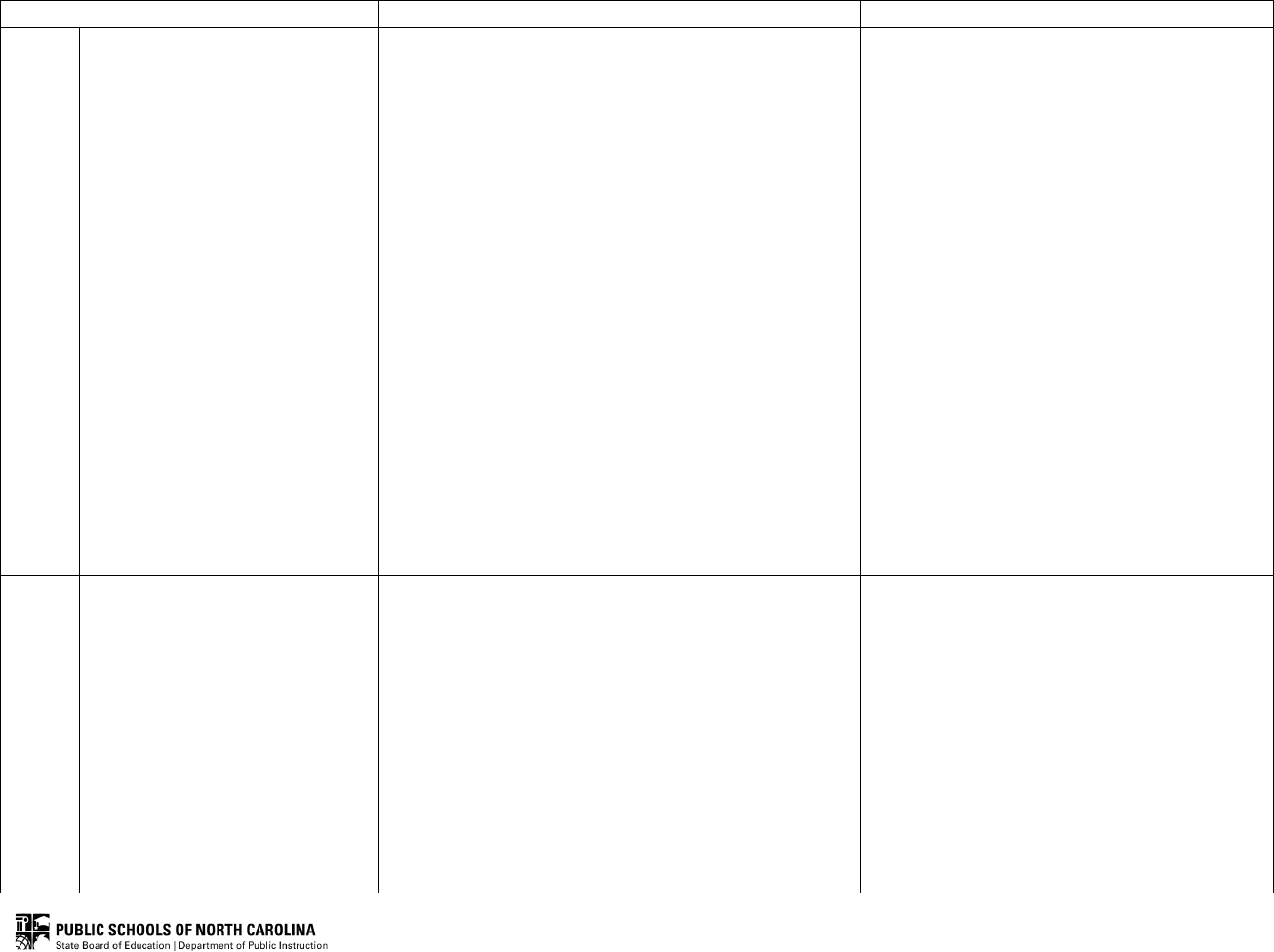
Grade 5 ELA Standards, Clarifications and Glossary
24
STANDARD
CLARIFICATION
GLOSSARY
improve cohesion, evaluate the effectiveness
of information and evidence, etc.; distinguished
from editing which is largely related to
correcting errors
strengthen – to increase the rhetorical and/or
argumentative impact of a written or spoken
work by revising for concision, clarity, and
cohesion; providing better and/or more evidence
as support for claims and value statements;
eliminating wordiness, redundancy, and
confusion; etc.
task – (as part of the task, purpose, and audience
relationship) – the specific product or type of
product one is completing (e.g., editorial article,
friendly letter, etc.), which greatly influences the
choices an author makes (e.g., one would likely
adopt an informal register when writing a
friendly letter)
topic – the subject or matter being discussed or
written about in a text, speech, etc.
W.5.2
Write informative /explanatory
texts to examine a topic and convey
ideas and information clearly.
a. Organize information and ideas
around a topic to plan and
prepare to write.
b. Introduce a topic clearly,
provide a general observation
and focus, and group related
information logically; include
formatting, illustrations, and
multimedia when useful to
aiding comprehension.
See Writing Guide
concrete details – information, examples, data,
etc. used as support or evidence for claims,
generally during an argument or a persuasive or
informational essay
domain-specific vocabulary/words/phrases –
Tier 3 words and phrases that are considered
unique to a particular subject or discipline that
are not typically used during informal
conversation
editing – the process by which an author
improves a text by correcting errors in grammar

Grade 5 ELA Standards, Clarifications and Glossary
25
STANDARD
CLARIFICATION
GLOSSARY
c. Develop the topic with facts,
definitions, concrete details,
quotations, or other
information and examples
related to the topic.
d. Link ideas within and across
categories of information using
words, phrases, and clauses.
e. Use precise language and
domain-specific vocabulary
to inform about or explain
the topic.
f. Provide a concluding statement
or section related to the
information or explanation
presented.
g. With guidance and support
from peers and adults, develop
and strengthen writing as
needed by revising, editing,
rewriting, or trying a new
approach, with consideration
to task, purpose, and audience.
and/or conventions, (e.g., grammatical,
structural, etc.), verifying precision of language,
eliminating redundancy, and more.
formatting – the physical presentation of written
work used to highlight organization, categories,
and topics and to provide consistency to the look
of the work (e.g., font size, headers, etc.)
illustration – a picture or drawing used for
explanatory and/or aesthetic purposes; can also
refer to an example used as evidence for a claim
phrase(s) – a small group of words representing a
conceptual unit, containing either a subject or a
verb, but not both. Both a subject and a verb
would constitute a clause (e.g., “Running through
the forest, she breathed in the fresh, crisp air.”)
purpose – the reason for a particular action or
creation (e.g., literary work or speech); the reason
for which something exists (e.g., to persuade, to
inform, to express, and/or to entertain)
revision/revising – the process of rereading
something that has been produced and making
changes in order to clarify meaning, improve
cohesion, evaluate the effectiveness of
information and evidence, etc.; distinguished
from editing which is largely related to
correcting errors
strengthen – to increase the rhetorical and/or
argumentative impact of a written or spoken
work by revising for concision, clarity, and
cohesion; providing better and/or more evidence
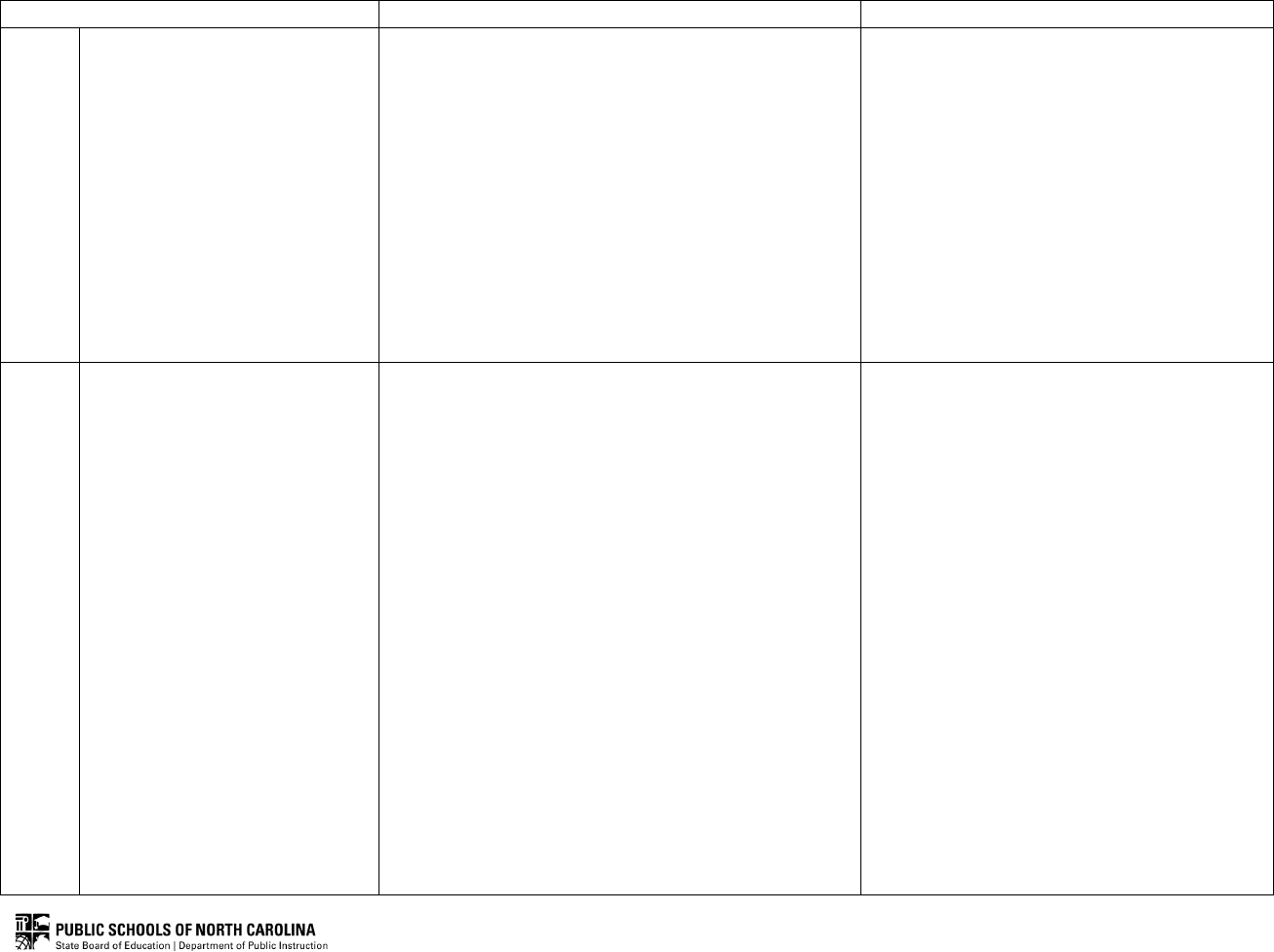
Grade 5 ELA Standards, Clarifications and Glossary
26
STANDARD
CLARIFICATION
GLOSSARY
as support for claims and value statements;
eliminating wordiness, redundancy, and
confusion; etc.
task – (as part of the task, purpose, and audience
relationship) – the specific product or type of
product one is completing (e.g., editorial article,
friendly letter, etc.), which greatly influences
the choices an author makes (e.g., one would
likely adopt an informal register when writing a
friendly letter)
topic – the subject or matter being discussed or
written about in a text, speech, etc.
W.5.3
Write narratives to develop real or
imagined experiences or events
using effective technique,
descriptive details, and clear event
sequences.
a. Organize information and ideas
around a topic to plan and
prepare to write.
b. Orient the reader by
establishing a situation and
introducing a narrator, and/or
characters; organize an event
sequence that unfolds
naturally.
c. Use narrative techniques, such
as dialogue, description, and
pacing to develop experiences
and events or show the
responses of characters to
situations.
d. Use a variety of transitional
words, phrases, and clauses to
See Writing Guide
describe, description, descriptive details –
to explain something in words; the details
necessary to give a full and precise account
editing – the process by which an author
improves a text by correcting errors in grammar
and/or conventions, (e.g., grammatical, structural,
etc.), verifying precision of language, eliminating
redundancy, and more.
event – a thing that happens; an occurrence
pacing – the speed at which a story progresses,
evidence is presented, and/or information is
delineated, affecting the overall tone of a literary
work (e.g., a rapid, clipped pace inspires a sense
of urgency)
phrase(s) – a small group of words representing a
conceptual unit, containing either a subject or a
verb, but not both. Both a subject and a verb
would constitute a clause (e.g., “Running through
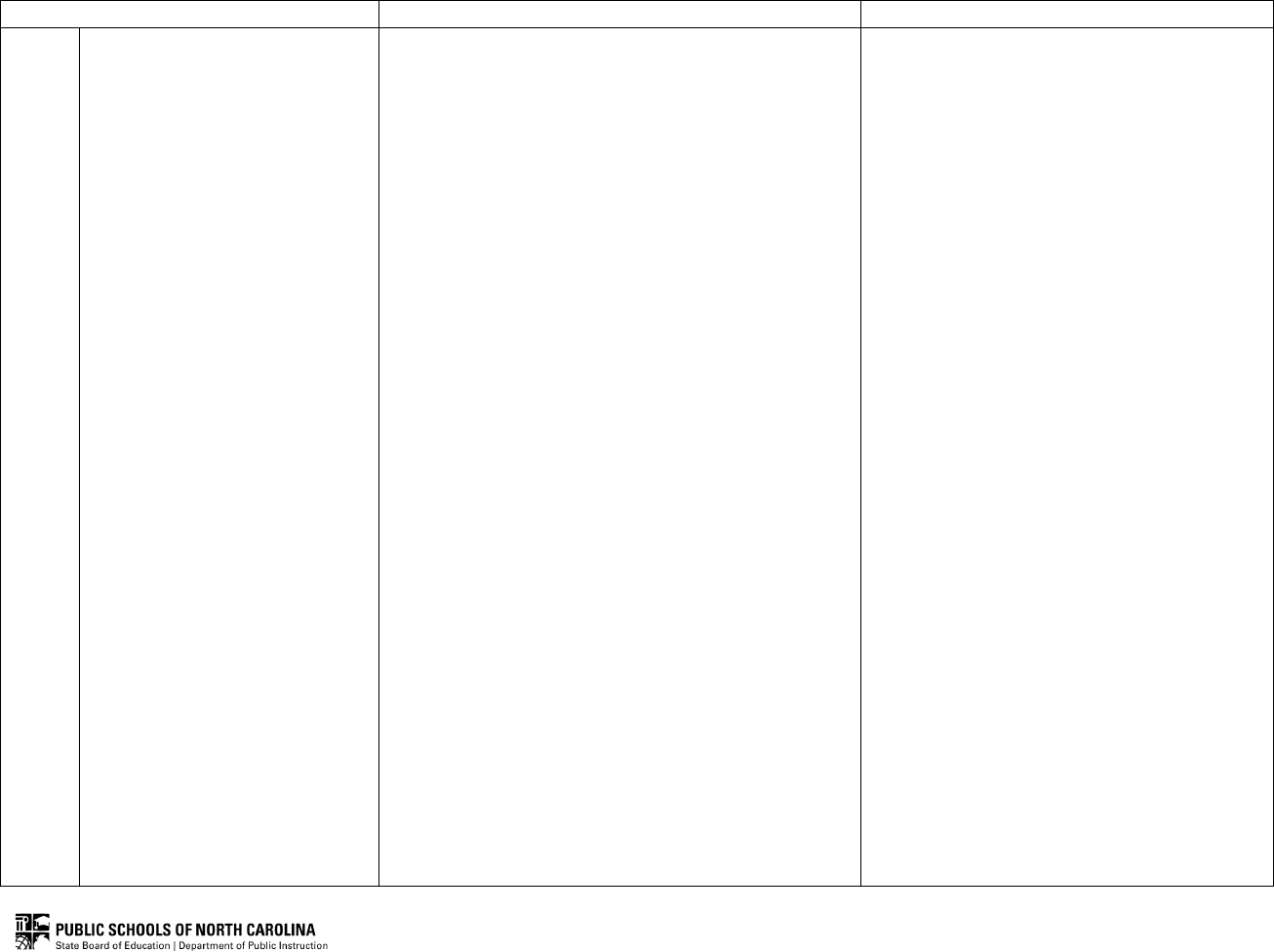
Grade 5 ELA Standards, Clarifications and Glossary
27
STANDARD
CLARIFICATION
GLOSSARY
manage the sequence of
events.
e. Use concrete words and
phrases and sensory details to
convey experiences and events
precisely.
f. Provide a conclusion that
follows from the narrated
experiences or events.
g. With guidance and support
from peers and adults, develop
and strengthen writing as
needed by revising, editing,
rewriting, or trying a new
approach, with consideration
to task, purpose, and audience.
the forest, she breathed in the fresh, crisp air.”)
purpose – the reason for a particular action or
creation (e.g., literary work or speech); the reason
for which something exists (e.g., to persuade, to
inform, to express, and/or to entertain)
revision/revising – the process of rereading
something that has been produced and making
changes in order to clarify meaning, improve
cohesion, evaluate the effectiveness of
information and evidence, etc.; distinguished
from editing which is largely related to
correcting errors
sensory language/details – words or details
(e.g., descriptions) in a literary work that relate
to the way things are perceived by the senses
sequence/sequence of events – a particular
(e.g., chronological, logical, etc.) way in which
events, ideas, etc. follow each other
strengthen – to increase the rhetorical and/or
argumentative impact of a written or spoken
work by revising for concision, clarity, and
cohesion; providing better and/or more evidence
as support for claims and value statements;
eliminating wordiness, redundancy, and
confusion; etc.
task – (as part of the task, purpose, and audience
relationship) – the specific product or type of
product one is completing (e.g., editorial article,
friendly letter, etc.), which greatly influences the
choices an author makes (e.g., one would likely
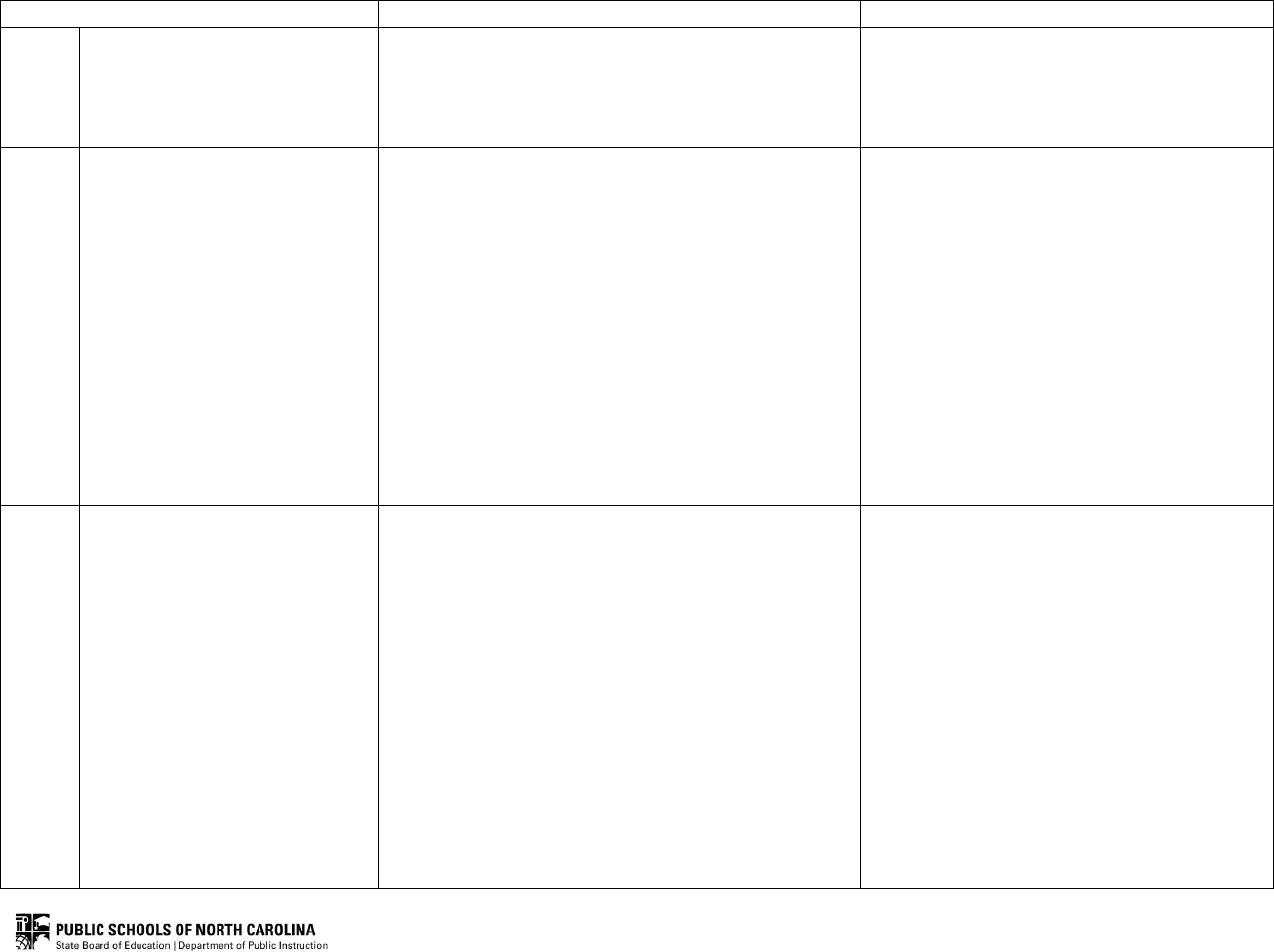
Grade 5 ELA Standards, Clarifications and Glossary
28
STANDARD
CLARIFICATION
GLOSSARY
adopt an informal register when writing a
friendly letter)
topic – the subject or matter being discussed or
written about in a text, speech, etc.
W.5.4
With some guidance and support
from adults, use digital tools and
resources to produce and publish
writing as well as to interact and
collaborate with others;
demonstrate sufficient command
of word processing skills.
Students use digital tools and resources to compose
and publish original writing. They use these tools and
resources to collaborate with peers. Students exhibit
effective word processing skills. The teacher provides
limited support and guidance.
In the Classroom:
The teacher models how to use digital tools, such as an
online message board, to interact and collaborate on a
piece of writing. Students use these tools to comment on
each other’s work.
Students put a previously completed writing assignment
into a word processing document. They practice changing
fonts, adding titles, embedding images, adding charts, etc.
digital tools – tools which are often web-based
through which students can dynamically create,
share, and collaborate, including tablets,
websites, video recording and editing software,
cloud-based applications, etc.
interact – to act in such a manner as to
influence another
publish – to prepare and distribute for
consumption (i.e., reading, viewing, listening,
etc.) by the public; to print, either physically or
digitally in order to make something generally
known or available
W.5.5
Conduct short research projects
that use several sources to build
knowledge through investigation
of different aspects of a topic.
Students investigate different angles of a topic using
a variety of sources. They use the information to
complete short research projects that build knowledge
about the topic.
In the Classroom:
Students use student-friendly search engines, printed
texts, images, etc. to investigate a research question.
They use graphic organizers to collect their thinking.
Using the notes from the graphic organizers, the students
create infographics explaining their research.
Students choose a topic (from teacher created list) that
they would like to research. They brainstorm different
aspects of that topic and place them on a graphic
organizer. Beside the noted aspect, students write what
topic – the subject or matter being discussed or
written about in a text, speech, etc.
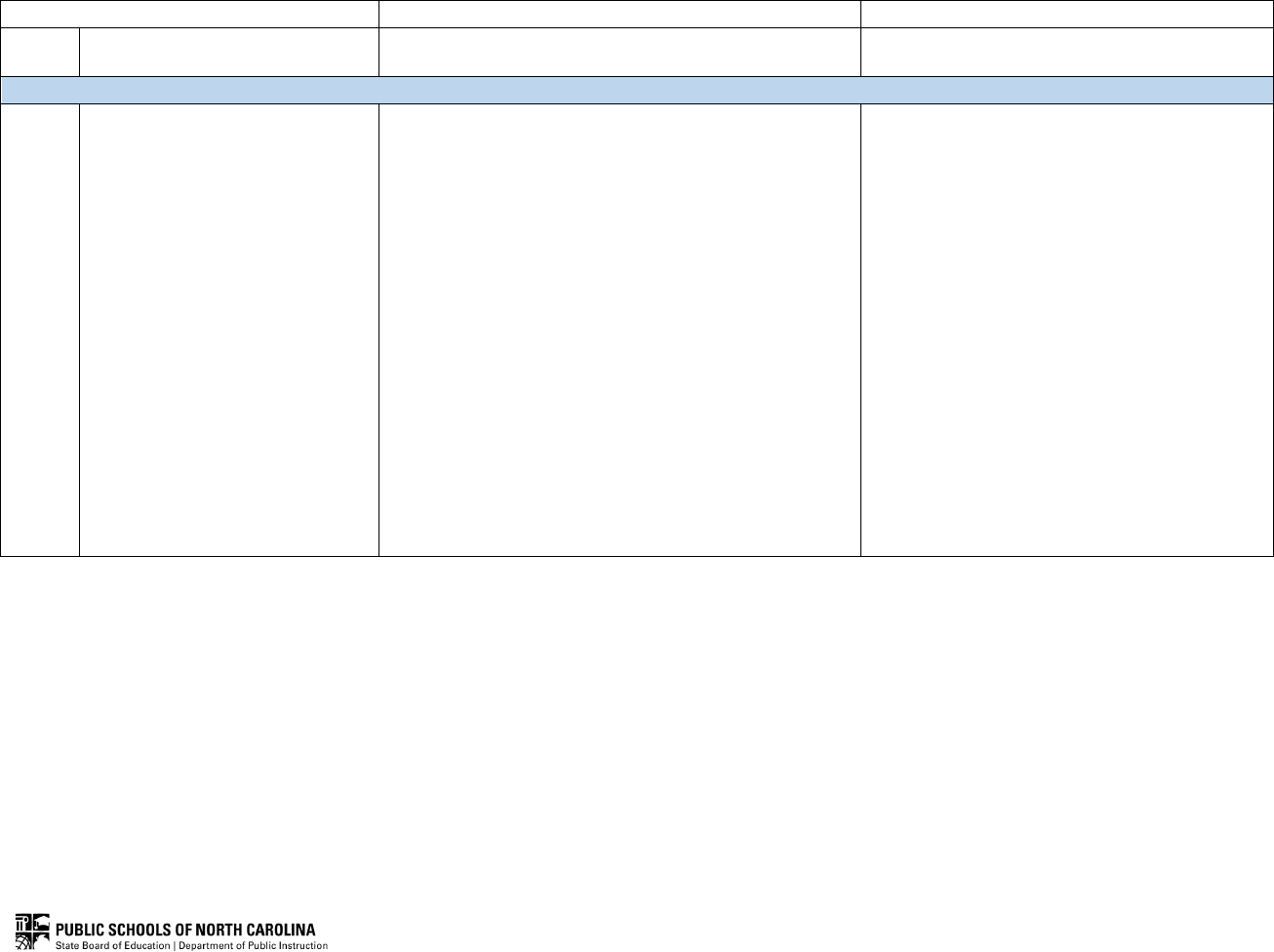
Grade 5 ELA Standards, Clarifications and Glossary
29
STANDARD
CLARIFICATION
GLOSSARY
source they are going to begin with to learn more about
that aspect of the topic.
Cluster: Research
W.5.6
Recall relevant information from
experiences or gather relevant
information from print and digital
sources; summarize or paraphrase
information in notes and finished
work and provide a list of sources.
Students think about and use pertinent personal
experiences and/or pertinent information collected from
print and digital resources. Students summarize or
paraphrase information as they take notes, as well as in
their final drafts. They also provide lists of sources they
used.
In the Classroom:
The teacher models how to summarize or paraphrase
while note taking. He/she highlights important sentences
from a section of text, and on the side of the paper or on a
notecard, summarizes or paraphrases the information. In
partners, students practice summarizing or paraphrasing
information from different sections of the same text.
The teacher writes a short piece on a studied topic.
He/she includes relevant and irrelevant information about
the topic. As a class, the students read the teacher’s
writing and discuss and highlight the relevant information.
digital sources – refers to sources that present
information through digital media, such as digital
databases, online articles, websites, etc. Digital
sources are cited with a date of access as the
information may be dynamically changeable,
unlike print and other non-digital formats.
paraphrase – express the meaning of something
written or spoken using different words, generally
for the purpose of clarification or understanding

Grade 5 ELA Standards, Clarifications and Glossary
30
GRADE 5
SPEAKING AND LISTENING STRAND: The K-12 Speaking and Listening Standards define what students should understand and be
able to do by the end of each grade. To become college and career ready, teachers must provide students with ample opportunities
to communicate their thinking orally through a variety of rich, structured conversations either in whole group or in small group
settings, or with a partner. To be a productive part of these conversations, students need to contribute accurate information,
respond and build on the ideas of others, use data and evidence effectively, and listen attentively to others.
CCR Anchor Standards for Speaking and Listening
Collaboration and Communication
1. Prepare for and participate effectively in a range of conversations and collaborations with diverse partners, building on others’ ideas
and expressing their own clearly and persuasively.
2. Integrate and evaluate information presented in diverse media and formats, including visually, quantitatively, and orally.
3. Evaluate a speaker’s point of view, reasoning, and use of evidence and rhetoric.
Presentation of Knowledge and Ideas
4. Present information, findings, and supporting evidence such that listeners can follow the line of reasoning and the organization,
development, and style are appropriate to task, purpose, and audience.
5. Make strategic use of digital media and visual displays of data to express information and enhance understanding of presentations.
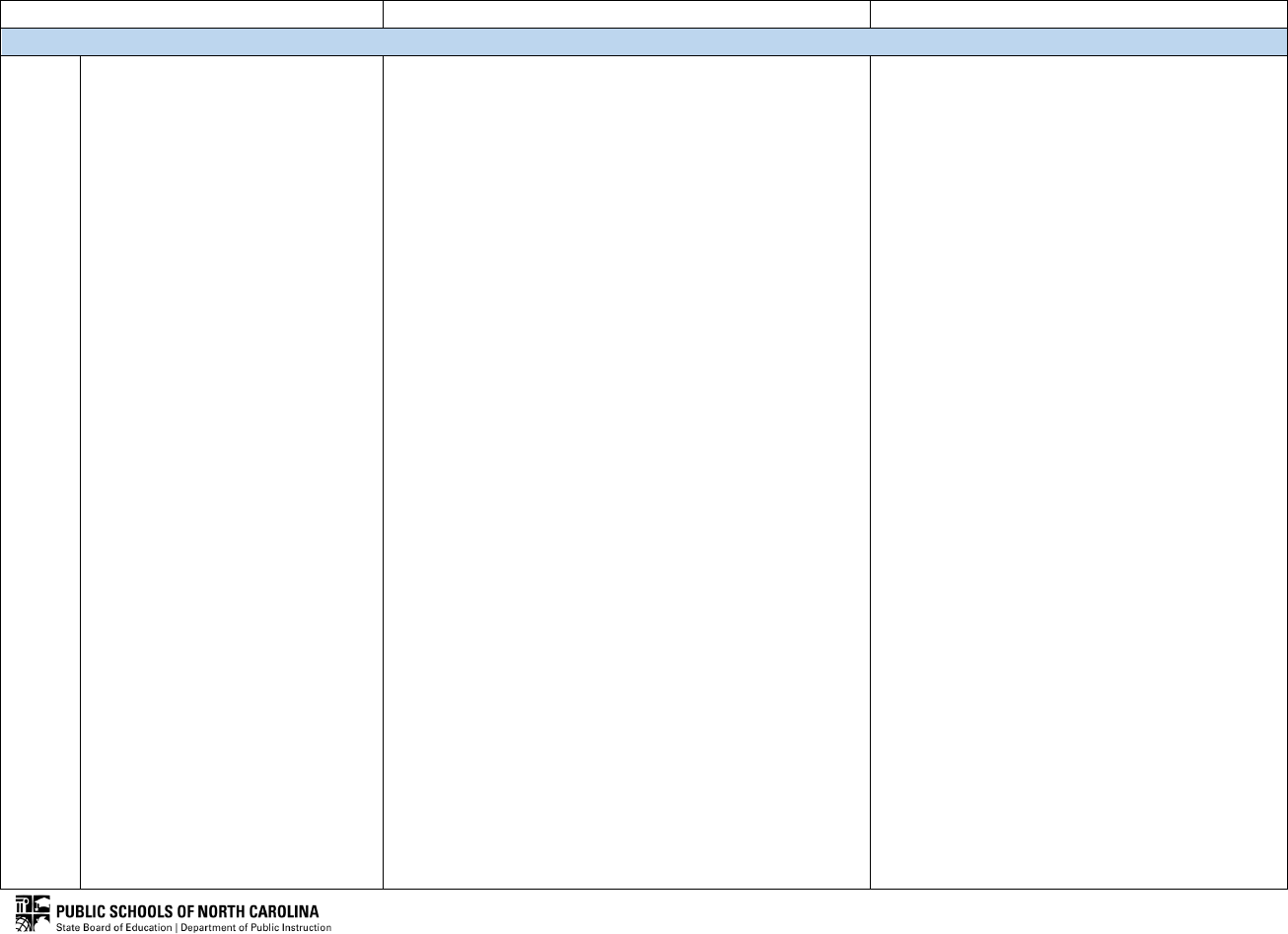
Grade 5 ELA Standards, Clarifications and Glossary
31
Speaking and Listening Standards
STANDARD
CLARIFICATION
GLOSSARY
Cluster: Collaboration and Communication
SL.5.1
Engage effectively in a range of
collaborative discussions (one-on-
one, in groups, and teacher-led)
with diverse partners on grade 5
topics and texts, building on
others’ ideas and expressing their
own clearly.
a. Come to discussions prepared,
having read or studied
required material; explicitly
draw on that preparation and
other information known
about the topic to explore
ideas under discussion.
b. Follow agreed-upon rules for
discussions and carry out
assigned roles.
c. Pose and respond to specific
questions by making comments
that contribute to the
discussion and elaborate on
the remarks of others.
d. Review the key ideas
expressed and draw
conclusions in light of
information and knowledge
gained from the discussions.
Students participate in discussions (one-on-one, in
groups, and teacher-led) with different peers on a variety
of fifth grade topics and texts. They communicate their
own ideas and add to what others are saying.
• Students prepare for discussions ahead of time by
reading texts and researching assigned material. During
the discussions, they use what they know about the
topic and what they learned (citing textual evidence).
• Students know the rules for class discussions and take
on meaningful roles by following those guidelines.
• Students ask and answer specific questions that add to
the discussion and expand on what others are saying
about the topic.
• Following a discussion, students review key ideas made
during the discussion and draw conclusions about the
knowledge they gained.
In the Classroom:
To teach students how to elaborate and make
connections, the teacher provides sentence stems, such
as: “I agree with ____ because ____” and “I was thinking
about what ____ said, and now I am wondering ____.”
The teacher might also ask students to use nonverbal
cues to indicate the type of comment they want to make
(e.g. a thumb up for building on an idea, holding up a
pointer finger to ask a question, or the hang loose sign for
introducing a new idea).
Using a shared text, the teacher models for students how
to make marks in the margins or in the text to prepare for
a discussion. Notes may include asking a question for
clarity, highlighting important information, and making
note of something new. The teacher shows students how
to use the notes in a discussion.
key ideas – most important thoughts addressed
in a text or discussion.
topic – the subject or matter being discussed or
written about in a text, speech, etc.
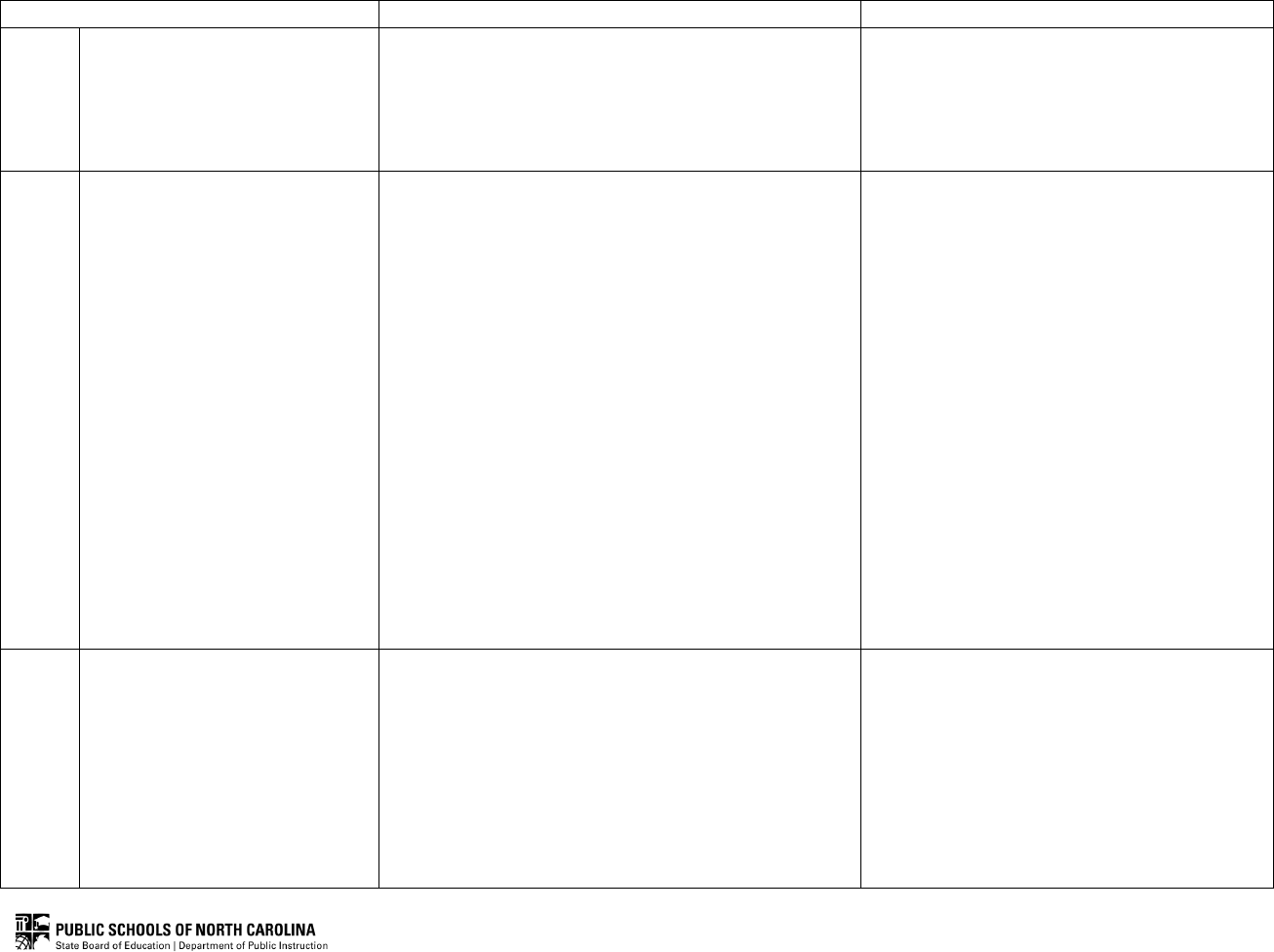
Grade 5 ELA Standards, Clarifications and Glossary
32
STANDARD
CLARIFICATION
GLOSSARY
During a group or class discussion, students track key
ideas expressed. At the close of the discussion, students
review these ideas and draw conclusions based on what
they learned from the information shared during the
discussion. They share conclusions in a whole-class review
and reflection.
SL.5.2
Summarize a written text read
aloud or information presented in
diverse media and formats,
including visually, quantitatively,
and orally.
Students give accounts of the main points from a written
text that has been read aloud or information that is
presented to them in various ways and forms, such
as visuals (images, videos, art, graphics), text with
numbers or measures (charts, tables, graphs), and oral
presentations (speeches, audios, videos).
In the Classroom:
The teacher reads aloud a text and students collect main
ideas and supporting details on graphic organizers. They
share what they have collected with the whole class. The
teacher records what they found. As a class, students take
turns stating a summary out loud using their notes.
Students use graphic organizers to record main ideas and
details as they listen to or view different kinds of texts,
such as: a live or recorded speech, presentation, chart,
pie or bar graph, map, photograph, video clip, or political
cartoon. They present a summary of the information to a
partner using their graphic organizers as a guide.
quantitatively – in such a manner that allows
something to be measured by numbers and/or
ranking; (contrast with qualitatively – in such a
manner that allows something to be measured in
terms of descriptive experience and reflection)
SL.5.3
Summarize the points a speaker
makes and explain how each
claim is supported by reasons
and evidence.
Students summarize the speaker’s ideas and explain how
each claim is backed up by reasons and evidence.
In the Classroom:
The teacher selects an engaging speech for students to
hear. Throughout the speech, the teacher models on a
chart how he/she recognizes the main points the speaker
is making, as well as noting the supporting reasons and
evidence. The teacher asks questions such as: What do
you think the speaker wants us to know? How does the
claim(s) – an assertion(s) of the truth of
something, often a value statement; generally,
an author uses evidence to support the assertion
of truth.
evidence – facts and/or information (quotes,
statistics, graphs, etc.) presented together as a
body of support for a claim or value statement.
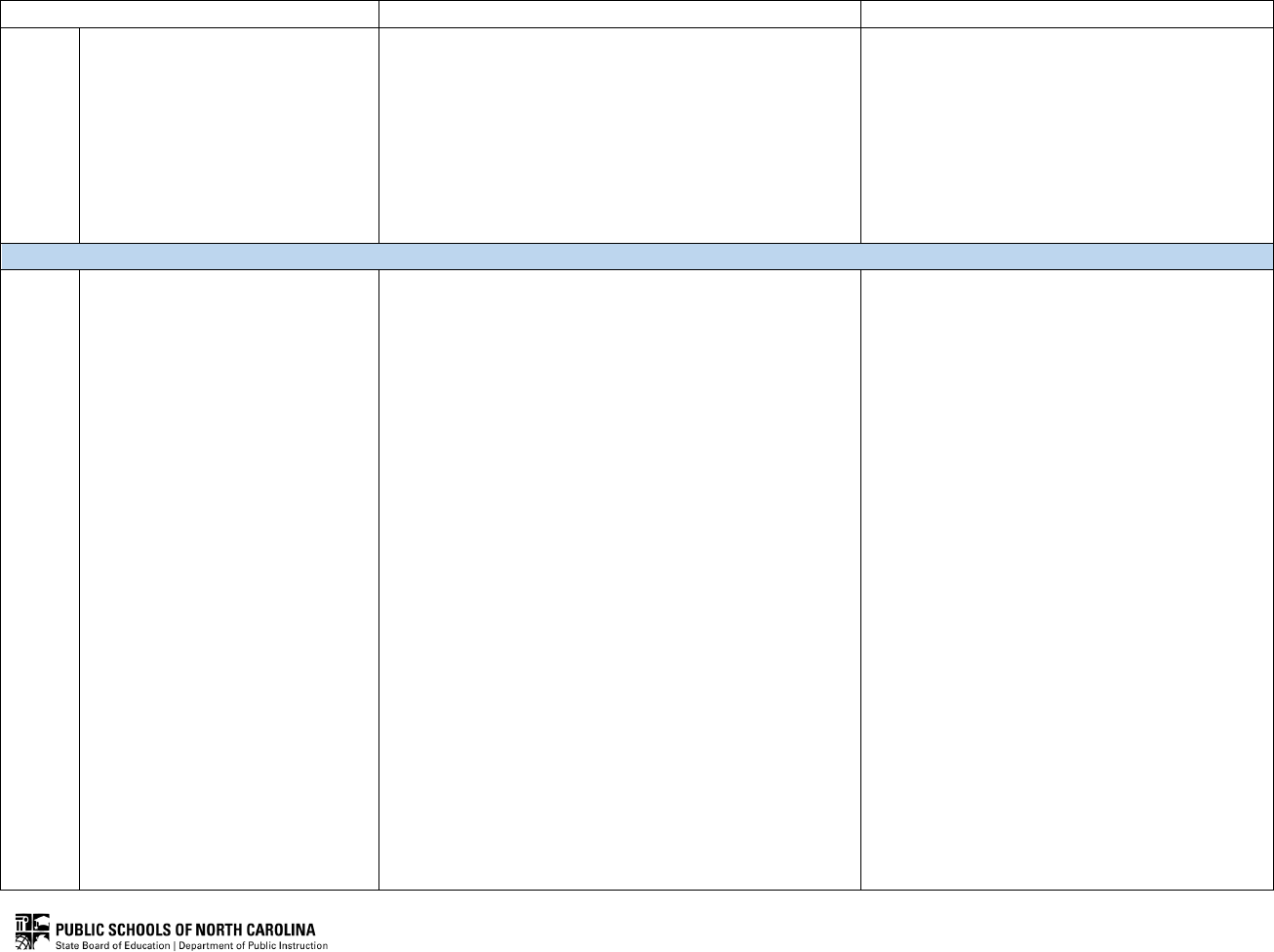
Grade 5 ELA Standards, Clarifications and Glossary
33
STANDARD
CLARIFICATION
GLOSSARY
speaker support that idea? The teacher and students
summarize the information orally using the information
from the chart.
In pairs, students listen to a speech and track the main
points the speaker makes. They listen to the speech a
second time and list reasons and evidence for each main
point. As a team, they recite a summary of the
information using their charts.
reasons/reasoning – an explanation or
justification for a claim, action, or value
statement; the process of thinking through an
argument, forming judgments, and drawing
conclusions using a process of logic
Cluster: Presentation of Knowledge and Ideas
SL.5.4
Report on a topic or text or
present an opinion, sequencing
ideas logically and using
appropriate facts and relevant,
descriptive details to support
main ideas or themes; adapt
speech to a variety of contexts
and tasks.
Students use a logical order when presenting information
or opinions. They use relevant facts, and vivid, related
details that support main ideas or themes. They modify
their speech to suit different situations and assignments.
In the Classroom:
To teach students to logically order their ideas, the
teacher gives a speech that is not in order. Students work
in partners to reorder the text. The teacher shares the
correct order and together they discuss why this is the
best order. Students review a speech of their own to
evaluate the order of the ideas they used.
To practice adapting speech to different situations, the
teacher asks students to give impromptu speeches to the
class on a variety of familiar topics. The teacher leads a
class discussion on how the speeches were suitable for
that audience. He/she then asks students to think about
how their speeches would be different if they were giving
the speech in a different setting/situation (antagonistic
audience, very young audience, uninterested audience,
very knowledgeable audience).
main idea(s)/topic – the primary or central
topic(s) of a text or discussion that is supported
and developed by other, supporting points/ideas,
distinguishable from ideas and topics that can be
eliminated without changing the overall meaning
relevant evidence, observations, ideas,
descriptive details – details and other elements
that are closely connected and appropriate to
that which is being considered, argued, or
explained; when making claims, authors choose
evidence, details, etc. that are closely related to
the idea being expressed by the claim
task – (as part of the task, purpose, and audience
relationship) – the specific product or type of
product one is completing (e.g., editorial article,
friendly letter, etc.), which greatly influences the
choices an author makes (e.g., one would likely
adopt an informal register when writing a
friendly letter)
theme – the subject or underlying meaning that
a literary text directly or indirectly explains,
develops, and/or explores. In grades 1-3, theme
is often referred to as central message
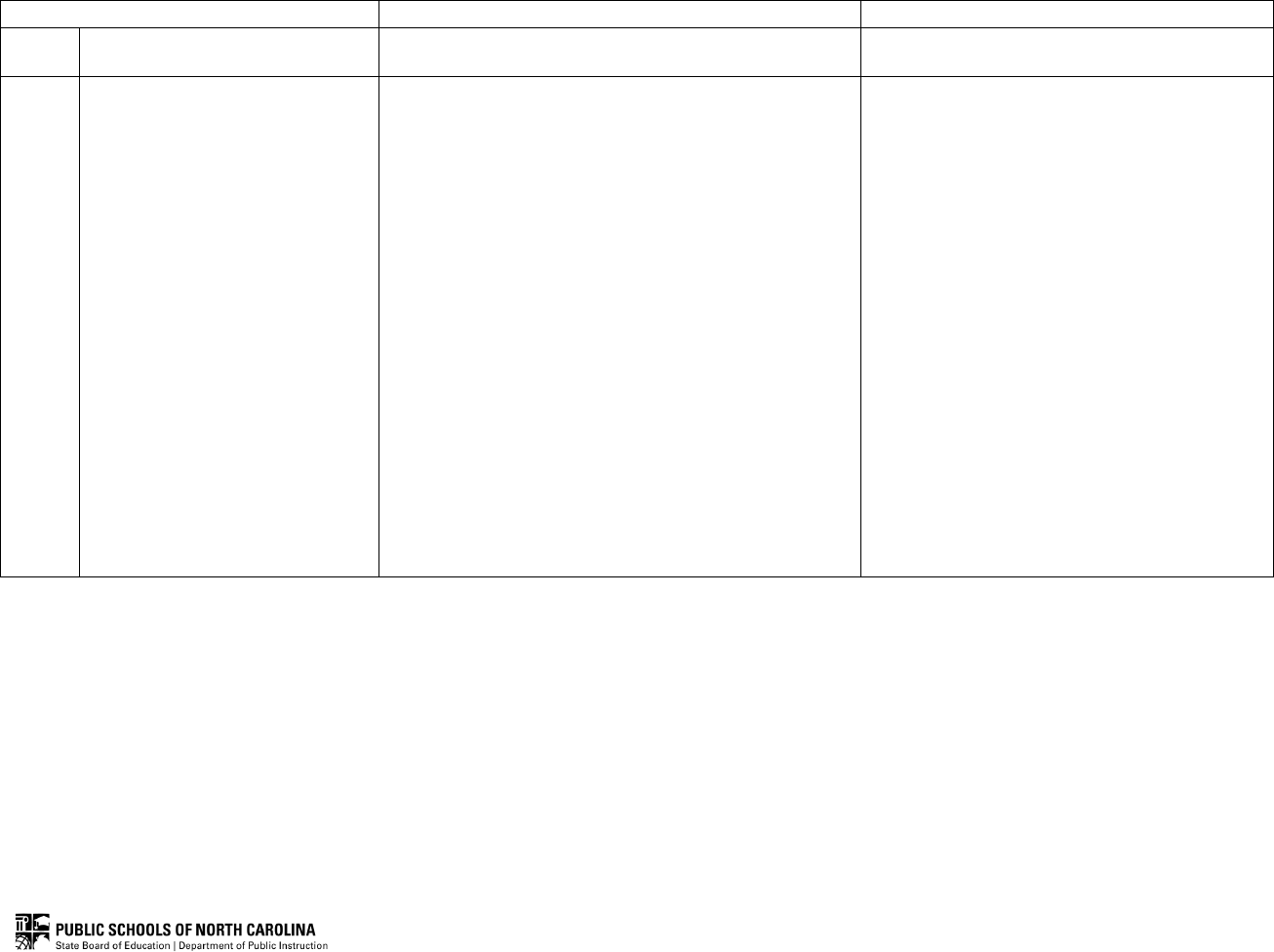
Grade 5 ELA Standards, Clarifications and Glossary
34
STANDARD
CLARIFICATION
GLOSSARY
topic – the subject or matter being discussed or
written about in a text, speech, etc.
SL.5.5
Include multimedia components
and visual displays in presentations
when appropriate to enhance
the development of main ideas
or themes.
Students include visual and multimedia elements in their
presentations to strengthen the development of main
ideas and themes.
In the Classroom:
The teacher emphasizes the importance of choosing
multimedia carefully to support main ideas. To do this,
the teacher creates a presentation that includes
distracting fonts or animation, extended video clips, poor
image quality, and/or distracting sound effects. The class
discusses why these effects were ineffective and the
importance of deliberate design. Students review their
presentations and identify which parts can better be
supported more clearly and effectively by the use of
multimedia components or visual displays.
Students and teacher co-construct a list of guidelines to
use when choosing multimedia and visual components to
enhance the development of main ideas/themes. They
consider do’s and don’ts. Students apply these guidelines
to their presentations.
main idea(s)/topic – the primary or central
topic(s) of a text or discussion that is supported
and developed by other, supporting points/ideas,
distinguishable from ideas and topics that can be
eliminated without changing the overall meaning
multimedia component – the part or piece of
a larger whole (e.g., a speech or presentation)
that is constructed using more than one medium
of expression (e.g., a piece that combines audio
and video)
theme – the subject or underlying meaning that
a literary text directly or indirectly explains,
develops, and/or explores. In grades 1-3, theme
is often referred to as central message

Grade 5 ELA Standards, Clarifications and Glossary
35
GRADE 5
LANGUAGE STRAND: Language skills are inseparable from and vital to reading, writing, speaking, and listening. Even though these
skills are in a separate strand, it is important for students to use effective and correct language skills in all contexts. The NC ELA
Language Standards emphasize the use of accurate language skills, not just the identification of accurate language skills. The
Grammar and Conventions Grade Band Continuums allow for differentiation and re-teaching as needed. It is important that students
begin to demonstrate proficiency in the lower grade(s) of each band, while students in the highest grade of the band should
demonstrate proficiency of the listed language skills by the end of the school year.
CCR Anchor Standards for Language
Conventions of Standard English
1. Demonstrate command of the conventions of standard English grammar and usage when writing or speaking; demonstrate proficiency
within the appropriate grade band grammar continuum.
2. Demonstrate command of the conventions of standard English capitalization, punctuation, and spelling when writing; demonstrate
proficiency within the appropriate grade band conventions continuum.
Knowledge of Language
3. Apply knowledge of language to understand how language functions in different contexts, to make effective choices for meaning or style,
and to comprehend more fully when reading or listening.
Vocabulary Acquisition and Use
4. Determine and/or clarify the meaning of unknown and multiple-meaning words and phrases by using context clues, analyzing meaningful
word parts, word relationships, and consulting general and specialized reference materials, as appropriate.
5. Demonstrate understanding of figurative language and nuances in word meanings.
6. Acquire and use accurately a range of general academic and domain-specific words and phrases sufficient for reading, writing, speaking, and
listening at the college and career readiness level; demonstrate independence in developing vocabulary knowledge when encountering an
unknown term important to comprehension or expression.

Grade 5 ELA Standards, Clarifications and Glossary
36
K-5 Language Continuums Guide
What are the Language Continuums?
Language Standards 1 and 2 include two continuums, one for grammar and one for conventions. The skills within each continuum are arranged
by grade band rather than by grade to allow for multiple years of practice, differentiation, and scaffolding as needed. In the lower grade of the
band, the teacher is introducing and modeling the skill. In the higher grade(s) of the band, students are applying the skill to more complex text as
they work toward mastery. Some skills, such as subject-verb agreement, may require continued attention each year.
How do I read them?
The Language Continuums, when read horizontally, show the progression of the grade level bands in grammar and conventions. When read
vertically, they show the skills taught in the specific grade band. The supporting clarifications include suggestions for how to introduce, model,
build, and recognize mastery for each skill.
What does instruction look like in the classroom?
The skills are arranged by grade band to allow for two years of practice and eventual mastery.
● The use of formative assessment allows teachers to determine how well students have acquired learning and where they fall in
the continuum.
● Teachers provide scaffolding based on formative assessments to meet students’ needs within the continuum. In the lower grade of the
band, the teacher introduces and models new skills allowing students to practice with teacher guidance. In the higher grade(s) of the band,
the teacher provides students with opportunities to independently practice these skills, use the skills with increasingly complex text, and
apply the skills to their writing and speaking.
How do I know where my students fall within the grade band?
Pre-assessments and formative assessments throughout the year can be helpful in determining where students fall within the band. One type of
assessment might be a writing sample completed without assistance.
Formative assessments should provide teachers with an understanding of students’ prior knowledge on a given skill. Teachers may build on this
prior knowledge rather than reintroducing the skill each year. Teachers may find they do not need to begin with the suggestions in the “How to
Introduce and Model” column of the continuum clarification document.

Grade 5 ELA Standards, Clarifications and Glossary
37
How do I talk about the Language Continuums with colleagues?
Teacher communication and discussion within each grade level and among the grade levels is a vital component for ensuring student success.
Through PLC work, teachers should develop a shared understanding of the skills and how the continuums and support documents can be used to
support instruction.
Grade level PLCs
• Discuss and develop pre-assessments for each skill, or group of skills, to determine student readiness. Consider using flexible grouping after
reviewing pre-assessment results.
• Revisit the continuum clarification document for suggested teaching strategies. Consider possible mentor texts.
• Discuss providing feedback to students about specific skill use within their writing. Consider developing a standards-based rubric.
• Reflect on student work to plan for next steps. Consider students who need scaffolding as well as those who need enrichment.
Vertical PLCs
• Discuss how each grade level can build on the previous grade level’s instruction.
• Discuss the mentor texts and the strategies used to introduce and build skills.
• Look at the previous grade band in the Language Continuums to determine which skills have been introduced.
• Look at the previous grade band in the Language Continuums to determine which skills are being introduced for the first time.

Grade 5 ELA Standards, Clarifications and Glossary
38
L1 – Grammar Continuum
SKILL
K-1
2-3
4-5
6-8
9-12
Subject/Verb
Agreement
• Use singular and plural
nouns with matching verbs
in basic sentences
• Ensure subject/verb
agreement
• Continue to ensure
subject/verb agreement
• Continue to ensure
subject/verb agreement
Students apply grammar and
usage skills to create a unique
style and voice when writing
or speaking with increasing
sophistication and effect in
grades 9-12. Skills taught in
previous grades should be
reinforced and expanded.
Nouns
• Form frequently occurring
nouns; form regular plural
nouns (/s/ or /es/)
• Use common, proper, and
possessive nouns
• Explain the function
of nouns
• Use collective nouns
(such as group)
• Form and use frequently
occurring regular and
irregular plural nouns
• Use abstract nouns (such as
courage)
• Continue to use regular and
irregular plural nouns
Verbs
• Form frequently occurring
verbs
• Convey sense of time
• Explain the function
of verbs
• Form and use past tense
of frequently occurring
irregular verbs
• Form and use regular
and irregular verbs
• Form and use simple
verb tenses
• Form and use the perfect
verb tenses
• Convey sense of various
times, sequences
• Recognize inappropriate
shifts in verb tense
• Form and use progressive
verb tenses
• Use modal auxiliaries (such
as may or must)
• Continue to form and use
the perfect verb tenses
• Convey sense of various
times, sequences, states,
and conditions
• Recognize and correct
inappropriate shifts in verb
tense
• Explain the function of
verbals (such as gerunds
or participles)
• Form and use verbs in
active and passive voice
• Form and use indicative,
imperative, interrogative,
conditional moods
• Recognize and correct
inappropriate shifts in voice
and mood
• Form and use
transitive/intransitive verbs
Adjectives
• Use frequently occurring
adjectives
• Explain the function
of adjectives
• Accurately choose which to
use – adjective or adverb
• Form and use comparative
and superlative adjectives
and accurately choose
which to use —adjective
or adverb
• Order adjectives within
sentences according to
conventional patterns
• Form and use compound
adjectives

Grade 5 ELA Standards, Clarifications and Glossary
39
SKILL
K-1
2-3
4-5
6-8
9-12
Conjunctions
• Use frequently occurring
conjunctions
• Explain the function of
conjunctions
• Use coordinating and
subordinating conjunctions
• Continue to use
coordinating and
subordinating conjunctions
• Use correlative conjunctions
(such as either/or)
Students apply grammar and
usage skills to create a unique
style and voice when writing
or speaking with increasing
sophistication and effect in
grades 9-12. Skills taught in
previous grades should be
reinforced and expanded.
Adverbs
• Accurately choose which to
use – adjective or adverb
• Explain the function
of adverbs
• Form and use
comparative adverbs
• Form and use comparative
and superlative adverbs
• Use relative adverbs
• Use adverbs that modify
adjectives
• Use adverbs that modify
adverbs
Sentences
• Produce and expand
simple, compound,
declarative, interrogative,
imperative, and
exclamatory sentences
• Understand and use
question words
• Produce, expand, and
rearrange simple and
compound sentences
• Produce complete
sentences, while
recognizing and correcting
inappropriate fragments
and run-on sentences
• Produce, expand, and
rearrange simple,
compound, and
complex sentences
• Continue to produce
complete sentences, while
recognizing and correcting
inappropriate fragments
and run-on sentences
• Choose among simple,
compound, complex, and
compound-complex
sentences to signal
differing relationships
among ideas
Prepositions
• Use frequently occurring
prepositions
• Explain the function of
prepositions
• Form and use
prepositional phrases
Pronouns
• Use personal, possessive,
and indefinite pronouns
• Explain the function of
pronouns
• Continue to use personal,
possessive, and indefinite
pronouns
• Use reflexive pronouns
• Ensure pronoun-
antecedent agreement
• Use relative pronouns
• Ensure that pronouns are
in the proper case
(subjective, objective,
possessive)
• Use intensive pronouns
• Recognize and correct
inappropriate shifts in
pronoun number and
person

Grade 5 ELA Standards, Clarifications and Glossary
40
SKILL
K-1
2-3
4-5
6-8
9-12
• Recognize and correct
vague pronouns
• Continue to ensure
pronoun-antecedent
agreement
• Recognize and apply the
nominative case and
objective case
Students apply grammar and
usage skills to create a unique
style and voice when writing
or speaking with increasing
sophistication and effect in
grades 9-12. Skills taught in
previous grades should be
reinforced and expanded.
Determiners
• Use determiners
• Correctly use a, an,
and the
Commonly
Confused
Words
• Correctly use common
homophones
• Correctly use frequently
confused words (such as to,
two, too)
• Continue to correctly use
frequently confused words
Interjections
• Explain the function of and
use interjections
• Continue to use
interjections
Phrases and
Clauses
• Explain the function of
phrases and clauses
• Recognize independent
and dependent phrases
and clauses
• Explain the function of
phrases and clauses in
general and their function
in specific sentences
• Place phrases and
clauses within a
sentence and recognize/
correct misplaced and
dangling modifiers
• Form and use
indirect/direct objects
Usage
• Recognize variations from
standard English in their
own and others’ writing
and speaking
• Identify and use strategies
to improve expression in
conventional language
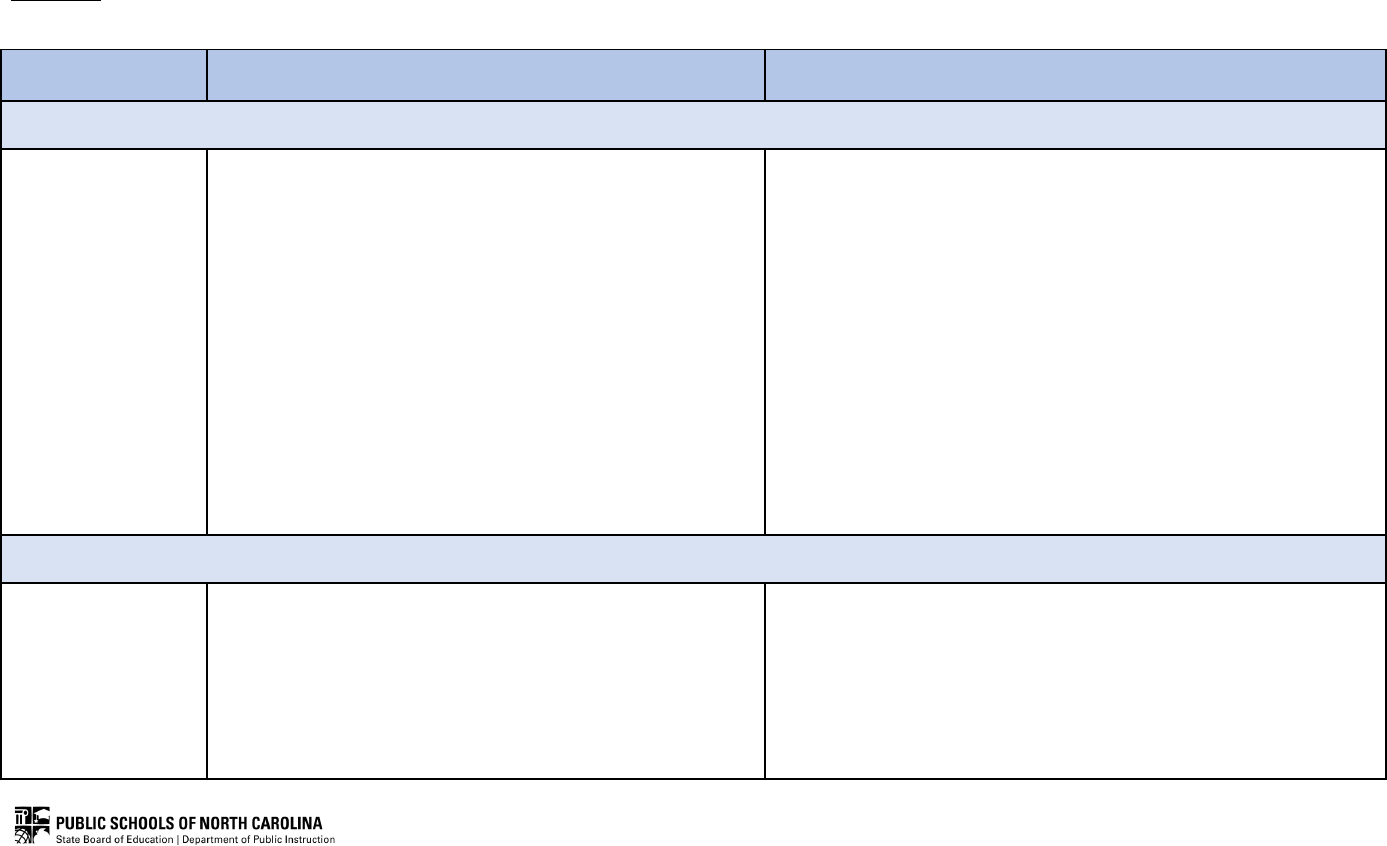
Grade 5 ELA Standards, Clarifications and Glossary
41
CLARIFICATIONS
L.1 Demonstrate command of the conventions of standard English grammar and usage when writing or speaking; demonstrate
proficiency within the 4-5 grammar continuum.
Mastery: Teachers recognize and assess student mastery of the skills in the L.1 Continuum through student writing and speaking.
Students’ writing and speaking are assessed by the student, peers, and the teacher.
4-5 Skill
How to Introduce and Model
How to Build
Subject/Verb Agreement
Continue to ensure
subject/verb
agreement
The teacher reviews subject/verb agreement by providing
sentences. Students identify the sentences that model correct
subject/verb agreement. Students correct the sentences that do
not have subject/verb agreement.
The teacher writes several sentences with missing verbs and
several with missing subjects. Students complete each sentence
using correct subject/verb agreement.
To build understanding of subject/verb agreement, the teacher
introduces more complex examples such as ensuring agreement with
compound subjects (Sugar and Flour), indefinite pronouns (each, both)
and collective nouns (around). The students create examples of each.
Students identify and form sentences with compound subjects using
correct subject/verb agreement (i.e. John and Amy played basketball
last night.).
Students identify and form sentences that use or/nor within the subject
and have correct subject/verb agreement (i.e. Either John or Amy is
playing basketball today.).
Students create a visual representation of subject/verb agreement.
They find pictures of nouns/verbs and create sentences or stories.
Nouns
Use abstract nouns
(such as courage)
The teacher introduces abstract nouns by providing a list of
nouns. Students evaluate whether each noun can be experienced
with one or more of the senses. Students identify those that
cannot be experienced with the senses as abstract nouns.
The teacher lists several nouns. Students create charts that list
the five senses and determine which of the provided nouns fits in
The teacher helps build knowledge of abstract nouns by providing a list of
nouns, and students identify which ones are abstract, providing reasons
for their identification.
The teacher helps build knowledge of abstract nouns by providing a list
of suffixes that are common in abstract nouns (i.e. –tion, -hood, -ness,
-ance, -ence, -ship, -ment). Students use these suffixes to help determine

Grade 5 ELA Standards, Clarifications and Glossary
42
4-5 Skill
How to Introduce and Model
How to Build
each column. The remaining nouns are placed in an abstract noun
chart, and students write sentences using each abstract noun.
whether a noun is abstract. Students use abstract nouns with suffixes in
dialogues with partners.
Students select an abstract noun, such as hope or courage, and create a
visual that represents that abstract noun.
Continue to use
regular and irregular
plural nouns
The teacher reviews regular and irregular plural nouns by
providing a list of singular nouns and then working with students
to list the plural forms. Students recall standard plural rules
(i.e. adding –s; adding –es) and apply them in their writing.
The teacher writes singular and plural nouns on cards, and
students are each given one. Students play “I have…Who has?”,
receiving new cards each round.
The teacher helps build knowledge of regular and irregular nouns by
providing a list of nouns that take on irregular spellings when made plural.
Students work with the teacher to determine irregular plural rules and
apply them (i.e. consonant + y = change the y to i and add –es; vowel + y
= add s; o = add –es; change f to v and add –es).
The teacher creates a list of regular and irregular plural nouns and gives
students only the singular forms. Students create foldables by writing the
singular form on short sentence strips. They fold the strip over to cover
the singular form at the point the change is made to turn it into a plural
noun. Students create the plural form on the folder portion of the strip.
Students use the words in sentences.
Verbs
Form and use
progressive verb
tenses
The teacher explains that the progressive verb tense is used to
show action in progress at some point in time. There is: present
progressive (I am walking), past progressive (I was walking),
future progressive (I will be walking).
The teacher explains that progressive verbs use a form of “to be”
along with an “ing” verb.
Students write sentences using progressive verbs. I am walking to
the ball game.
Students identify and form sentences correctly using past, present, and
future progressive verb tenses in a paragraph about an event.
Students work in pairs. Each student writes a sentence about his/her
week. One student uses past progressive tense, and the other uses future
progressive. They trade sentences and revise the sentence from past to
future or future to past.
Students work in pairs. They interview each other about their favorite
sports event, vacation, or weekend trip. They write up the interviews,
using examples of all three progressive verb tenses.
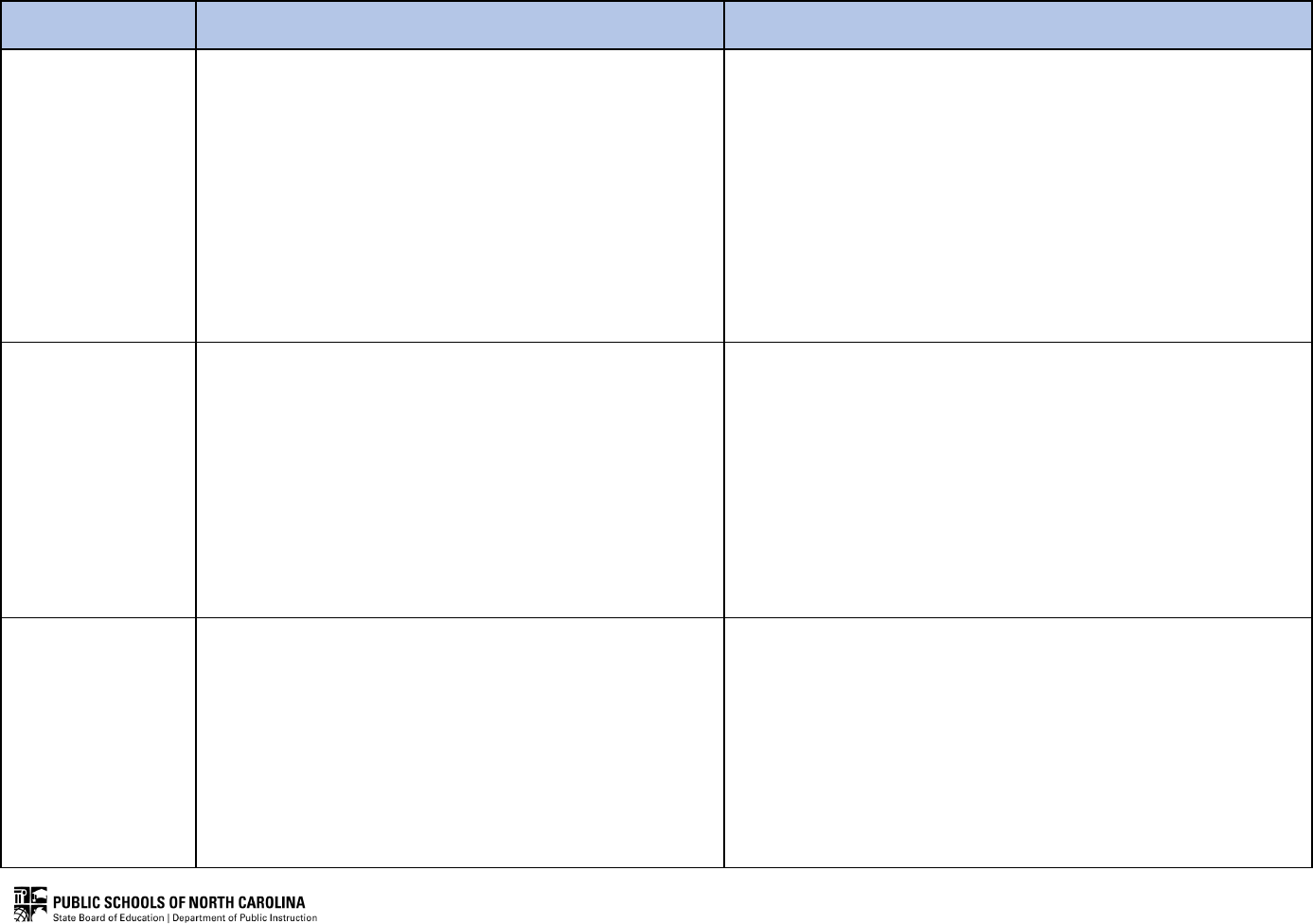
Grade 5 ELA Standards, Clarifications and Glossary
43
4-5 Skill
How to Introduce and Model
How to Build
Use modal auxiliaries
(such as may or must)
The teacher introduces modal auxiliaries (i.e. may/might, must,
can/could, shall/should, will/would) and discusses the function of
modalities (i.e. to show necessity, ability, willingness, possibility).
Students begin to identify correct modal choice based upon
function (i.e. May/Can I go to the movie?).
The teacher provides students with several sentences. Students
identify modal auxiliary phrases and discuss the function for
each modal.
Students begin to identify and differentiate between past, present, and
future modals as well as which ones show necessity, ability, willingness,
or possibility.
The teacher writes the functions necessity, ability, willingness, and
possibility multiple times on small cards. Students take turns selecting
function cards and creating sentences with modal verbs that correctly
reflect that function.
The teacher provides students with several sentences that are missing
the modal verb. Students complete the sentences and give justification
for their choice.
Continue to form
and use the perfect
verb tenses
The teacher introduces past, present, and future perfect verb
tenses and models how to use each tense. Students recognize
verbs used in the perfect tense (i.e. have, has, had) and
understand the function of perfect verb tense.
The teacher provides sentences with missing verbs, and students
correctly complete each sentence with a perfect verb phrase.
Students create sentences using the perfect verb tense.
The teacher builds knowledge of the prefect verb tense by introducing
past, present, and future perfect progressive verb tenses. Students
recognize verbs used in the perfect progressive tense (i.e. have/had/has
been) and understand the function of the perfect progressive tense.
Students recognize the difference between perfect and perfect
progressive verbs and their functions.
The teacher writes numerous activities on index cards. Students draw one
activity and create sentences for each perfect verb tense that includes
their chosen activities.
Convey sense of
various times,
sequences, states,
and conditions
The teacher introduces time and sequence verbs and models how
to correctly use them. Students recognize that different tenses of
verbs indicate times and sequences.
The teacher provides sentences using verbs that show sequence.
Students underline the verb phrases and then create a timeline
based upon these sentences.
The teacher introduces verbs that convey a state or condition. He/
she explains that these verbs express a state rather than an action.
The teacher builds knowledge by reviewing verbs that show states and
conditions. Students create sentences with stative verbs (i.e. those that
show feeling, thought, sense, possession) and conditional verbs (would
have succeeded) that express something that might happen.
The teacher writes numerous verbs that show states on index cards.
Students use cards to play charades. Once a student guesses the
correct verb, he/she must identify whether it shows feeling, thought,
sense, or possession.
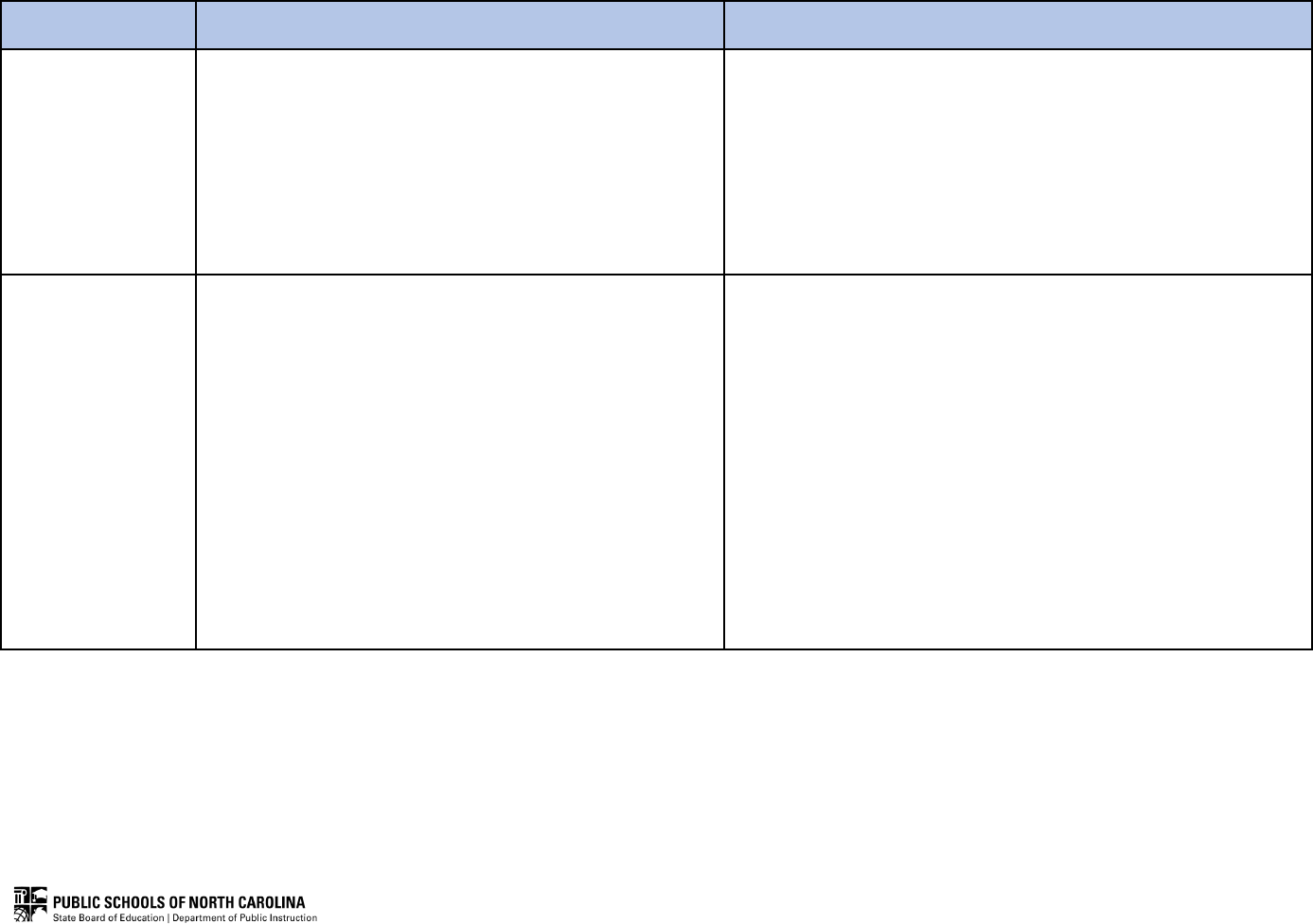
Grade 5 ELA Standards, Clarifications and Glossary
44
4-5 Skill
How to Introduce and Model
How to Build
Candice feels sick today.
Conditional verbs help express something that might happen if a
particular condition is met. “If” is often used.
She could have won if she had practiced more.
Students work with partners to create sentences using verbs that
convey states and sentences with verbs that convey conditions.
The teacher provides students with a list of unlikely future events.
Students use this list to create sentences with conditional verbs.
The teacher builds the use of verb tense to convey various times and
sequences by having student partners write about events in history and
use verbs that convey time and sequence.
The teacher helps students find time, sequence, state, and condition
verbs in standard classroom texts.
Recognize and
correct inappropriate
shifts in verb tense
The teacher introduces incorrect shifts in verb tense by explaining
that verbs in a sentence or paragraph should be in the same
tense. Shifting between verb tenses can confuse readers.
The teacher writes many correct and incorrect examples of verb
tense shifts. Each student is given one example. The teacher
places a line down the center of the room. One side is labeled
correct, while the other side is labeled incorrect. Students go to
the appropriate side of the room based upon their sentences.
Students take turns sharing their sentences and explaining their
reasoning for choosing which side of the room to stand on.
The teacher provides students with a list of sentences containing
verb shifts. Students identify which ones are incorrect and alter
the sentences in order to show correct shifts.
The teacher helps build knowledge of inappropriate verb shifts by
providing sentences that show verb shifts. Students recognize incorrect
shifts and correct these sentences, articulating the reasons behind
the corrections.
Each student writes a sentence containing a verb tense shift and then
places it in a basket. Taking turns, each student pulls one sentence out
of the basket and reads it. He/she then states whether it shows an
appropriate verb shift. If the sentence is incorrect, the student states the
reason for this and provides a correct example.
Students review their writing for inappropriate shifts in verb tense and
correct them as needed.
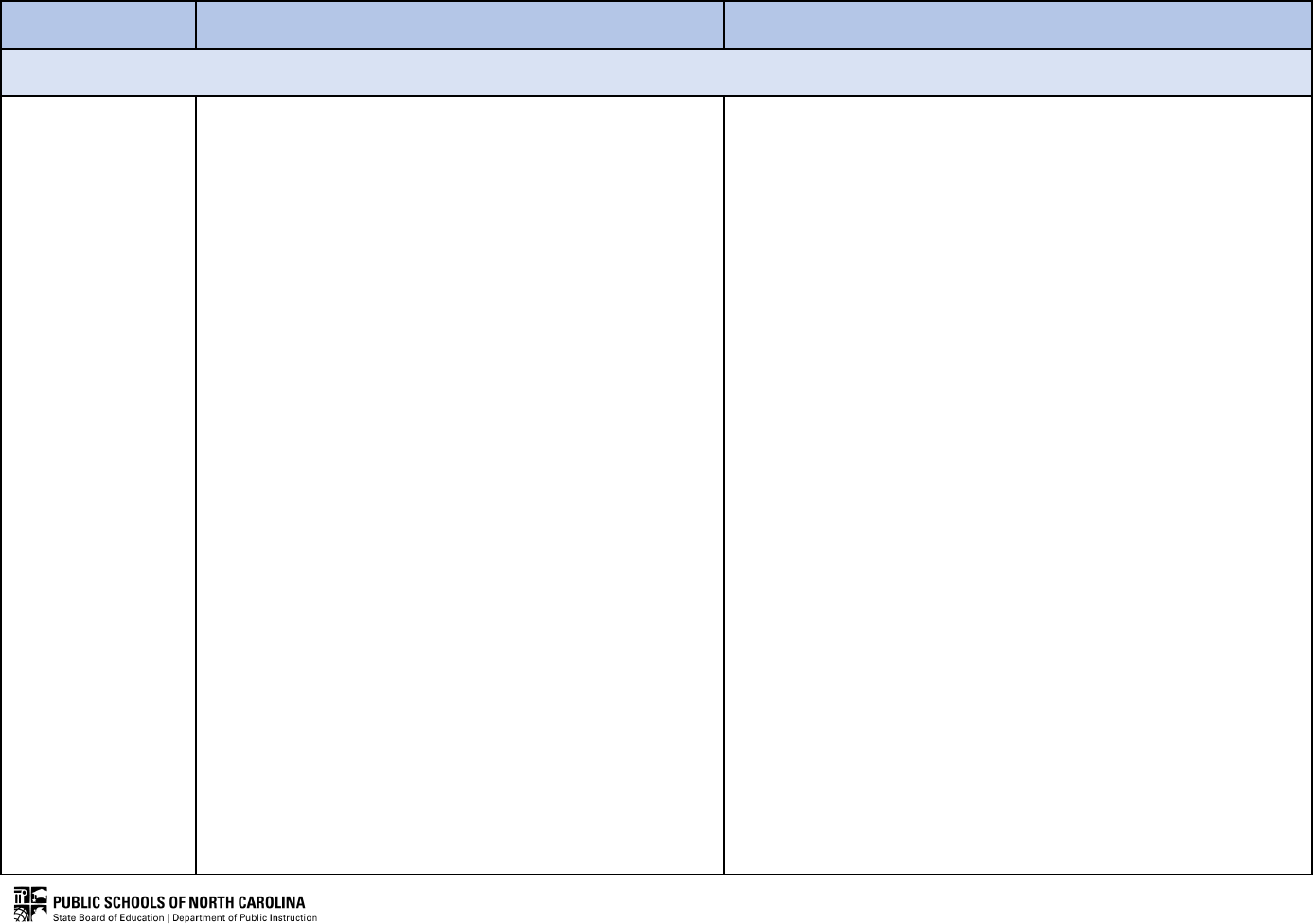
Grade 5 ELA Standards, Clarifications and Glossary
45
4-5 Skill
How to Introduce and Model
How to Build
Adjectives
Form and use
comparative and
superlative adjectives
and accurately choose
which to use –
adjective or adverb
The teacher introduces regular comparative and superlative
adjectives, as well as the rules for forming them, and models
how to use them in sentences. The teacher explains that
comparative adjectives compare differences between two
objects, people, places or ideas, and superlative adjectives are
used when a subject is compared to more than two or a group.
Adjectives modify nouns. Example: tall, comparative – taller;
(The redwood tree is taller than the spruce tree). superlative –
tallest. (The redwood tree is the tallest in the yard).
The teacher provides students with a list of nouns. Students
write sentences about the nouns, using comparative and
superlative adjectives. Then, students illustrate the sentences
to show the comparison.
Example: sister – Students might write: My sister is tall. My
sister is taller than me. My sister is the tallest of all the siblings in
my family.
The teacher introduces adverbs, as well as the rules for
forming them, and models how to use them in sentences.
The teacher explains that adverbs may end in -ly, but not all.
Adverbs answer the questions how, when, where and why
about a verb.
The teacher provides students with a simple sentence. Students
add an adverb to the sentence, then form the comparative and
superlative of the adverb to complete the sentence.
Example: Simple sentence: John works quietly. Comparative:
John works more quietly than his friend. Superlative: John works
the most quietly of all his friends.
To choose which to use – adjective or adverb: The teacher
The teacher helps build knowledge of comparative and superlative
adjectives and adverbs by introducing irregular comparative and
superlative adjectives and adverbs. The teacher and students co-
construct a chart that provides examples for each.
The teacher presents a survey to the class (i.e. age, number of siblings,
bed time, pets) and students answer survey questions. The teacher and
students tally the survey, and students use the results to write sentences
that contain comparative and superlative adjectives and adverbs.
Students highlight the modifying word.
The teacher projects and reads aloud tall tales that contain comparative
and superlative adjectives. Students choose characters from the tall tales
to make comparative and superlative sentences about them. Examples of
tall tales: “Pecos Bill”, and “I Love You the Purplest”.

Grade 5 ELA Standards, Clarifications and Glossary
46
4-5 Skill
How to Introduce and Model
How to Build
projects examples of sentences with either the verb underlined or
the noun underlined. The teacher instructs students to modify the
word that has been underlined by choosing either an adjective or
an adverb to complete the sentences.
Order adjectives
within sentences
according to
conventional patterns
The teacher introduces the correct order for denoting attributes
[quantity/number; quality/opinion; size; age; shape; color; proper
adjective (nationality, origin, or material); qualifier/purpose] and
models how to write phrases and sentences that contain one-two
adjectives. Students identify which sentences are correct and help
fix ones that are incorrect.
The teacher explains that sometimes you might use more than
one or two adjectives to describe a noun. It is important to put
the adjectives in the correct determined order:
1. Opinion (ugly)
2. Size (big)
3. Age (old)
4. Shape (round)
5. Color (blue)
6. Origin (American)
7. Material (cotton)
8. Purpose (sewing - like in sewing machine)
The teacher models ordering adjectives as she describes objects
in the room. Students practice ordering adjectives as they
describe outside objects.
The teacher provides students with a variety of sentences
containing one or two adjectives. Students determine which
sentences correctly describe the nouns and are in the proper
order. Students fix sentences that are incorrect.
The teacher helps build knowledge of adjective order by introducing a
list of adjective phrases. Students identify correct phrases and fix those
that are incorrect.
Students select two or more adjectives that correctly describe a
noun and place those in a sentence in a way that follows standard
grammatical ordering.
The teacher shows several images to students. Students use those
images to create sentences that include two or more adjectives
ordered correctly.
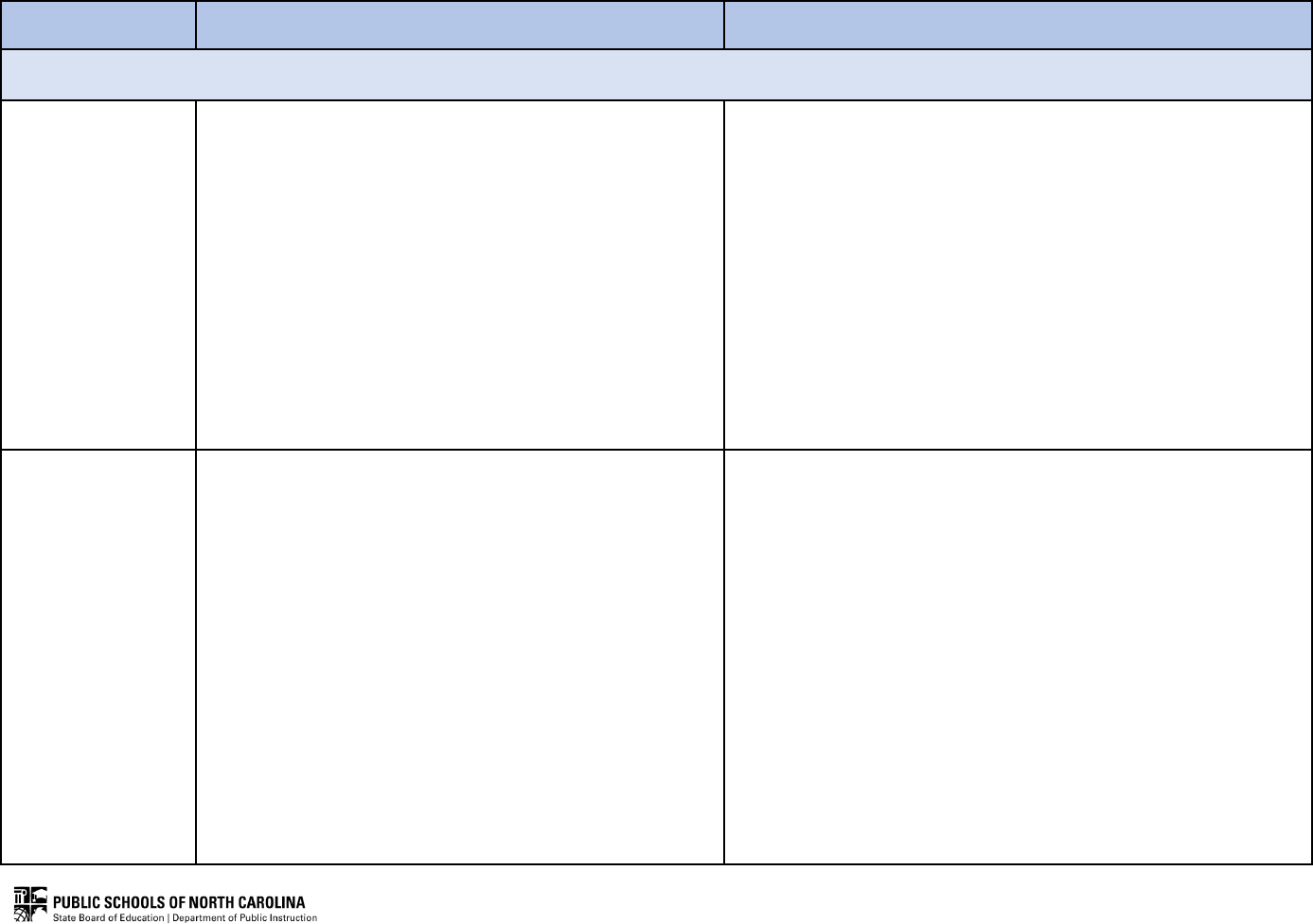
Grade 5 ELA Standards, Clarifications and Glossary
47
4-5 Skill
How to Introduce and Model
How to Build
Conjunctions
Continue to use
coordinating and
subordinating
conjunctions
The teacher reviews coordinating conjunctions (for, and, nor, but,
or, yet, so - “FANBOYS”), as well as the rules for using them, and
models how to make compound sentences. Students form
compound sentences using independent clauses and coordinating
conjunctions.
The teacher helps build knowledge of conjunctions by introducing
subordinating conjunctions, as well as the rules for using them,
and models how to make complex sentences. Students form
complex sentences using independent clauses and subordinating
conjunctions.
The teacher helps build knowledge of coordinating and subordinating
conjunctions by modeling how to build compound and complex
sentences using conjunctions. Students review their writing and
expand simple sentences into compound or complex sentences using
coordinating and subordinating conjunctions.
Working in pairs and using a list of independent clauses, students
build compound and complex sentences using coordinating and
subordinating conjunctions.
The teacher writes numerous independent clauses on sentence strips
and different subordinating conjunctions on index cards. Students
work together to join the clauses by using appropriate subordinating
conjunctions. Students write the completed compound sentences on paper.
Use correlative
conjunctions
(such as either/or)
The teacher introduces simple correlative conjunctions and explains
that they work as pairs: (i.e. either/or, neither/nor, both/and,
not/but). The teacher explains that the two elements the correlative
conjunctions connect are similar in length and grammatical structure
(i.e., nouns are correlative to nouns, adjectives to adjectives).
Examples: Both soccer and baseball are popular in my town.
There are not three, but four students who want to attend the
performance.
Students form compound sentences using correlative conjunctions.
The teacher writes numerous sentences using correlative
conjunctions on sentence strips. The teacher cuts apart sentences
so that the clauses and correlative conjunctions are separate.
Students work in groups to correctly put sentences back together.
Students write completed sentences on paper.
The teacher helps build knowledge of conjunctions by introducing more
complex correlative conjunctions (i.e. not only/but also, no sooner/than),
as well as the rules for using them, and models how to use them in
sentences. Students form sentences using correlative conjunctions.
The teacher lists topics for discussion on the board (i.e. food, pets,
sports). Students discuss the topics with partners. Once the discussions
are complete, partners work together to write sentences containing
correlative conjunctions, using the information from the discussions.

Grade 5 ELA Standards, Clarifications and Glossary
48
4-5 Skill
How to Introduce and Model
How to Build
Adverbs
Form and use
comparative and
superlative adverbs
The teacher defines comparative and superlative adverbs by using
examples. Comparative adverbs compare two or more things (i.e.
harder, better, more easily). Superlative adverbs compare three
or more things (i.e. hardest, worst, most easily).
The teacher models and provides examples of rules and forms of
comparative and superlative adverbs (i.e. some two syllable
adverbs that end in “y” will require you to change the “y” to “i”
and add “er” when using the comparative form or add “est” when
using the superlative form).
Students work with partners to create a chart of adverbs,
followed by the comparative and superlative forms of the adverb.
Together, they compose sentences using the words.
The teacher helps students build knowledge of forming and using
comparative and superlative adverbs by providing independent or small
group practice that differentiates between the use of regular and irregular
comparative and superlative adverbs. The student may be given an
adverb such as “quietly.” The student will need to form a comparative
adverb such as “more quietly” and a superlative adverb such as “most
quietly.” The student will need to use each of these correctly in sentences.
The teacher helps students build knowledge of forming and using
comparative and superlative adverbs by encouraging students to take
turns identifying adverbs in sentences that the teacher provides.
The teacher helps students build knowledge of forming and using
comparative and superlative adverbs by having the students write
sentences about a sporting event and describe the action using
comparative and superlative adverbs.
Use relative adverbs
The teacher introduces the relative adverbs when, where, and
why and models how these adverbs introduce relative clauses.
The teacher differentiates between the three adverbs of where,
when, and why by using examples.
The desk where I sat last year, is gone.
I can remember a time when I was shorter than you.
Tell us why you missed the party
Students create sentences with partners using relative adverbs.
One student begins the sentence, and the other completes it.
The teacher helps students build knowledge of using relative adverbs by
providing two or more sentences or clauses and having the students
combine them using relative adverbs.
I remember the day.
It was the day I first met Sam.
I remember the day when I first met Sam.

Grade 5 ELA Standards, Clarifications and Glossary
49
4-5 Skill
How to Introduce and Model
How to Build
Sentences
Produce complete
sentences, while
recognizing and
correcting
inappropriate
fragments and
run-on sentences
The teacher introduces the parts of a sentence (subject and
predicate). Students identify the parts of a sentence as being the
subject or predicate.
The teacher identifies sentence fragments and run-on sentences
in a text. The teacher models by sharing strategies to correct
sentences (reading the sentence, questioning if the sentence has
a subject and a predicate).
The teacher helps students build knowledge of producing complete
sentences while recognizing and correcting inappropriate fragments and
run-on sentences by providing examples of sentences. The students use
their fingers (one finger for subject and two fingers for predicate) to
identify the part of the sentence that the teacher points to.
The teacher provides one part of a sentence (subject or predicate) and
students complete the sentence by writing the missing piece.
The teacher writes sentences on the board, modeling how experienced
writers write and correct sentence fragments and run-on sentences.
Students review and correct their writing.
Produce, expand,
and rearrange simple,
compound, and
complex sentences
The teacher reviews how to add words to a simple sentence to
expand it. He/she demonstrates how to create a compound
sentence and a complex sentence from the simple sentence.
The teacher differentiates between simple sentences
(a sentence with a single independent clause), compound
sentences (two independent clauses combined by a conjunction),
and complex sentences (an independent clause joined by one or
more dependent clauses) by giving the students definitions
and examples. The teacher also models identifying the different
kinds of sentences.
The teacher models how to rearrange and expand sentences.
Students practice expanding and rearranging sentences
with partners.
The teacher helps students build knowledge of producing, expanding,
and rearranging simple, compound, and complex sentences by sharing
examples of different sentences that may be simple, compound, or
complex, and displaying examples for students.
Students work with partners. One student writes an independent clause.
The second student draws a coordinating conjunction from a container
and uses it, along with another independent clause, to complete the
compound sentence.
Students work with partners. Each pair has a deck of index cards with an
independent clause on each one. A student draws a card and creates a
complex sentence by adding one or more dependent clauses.
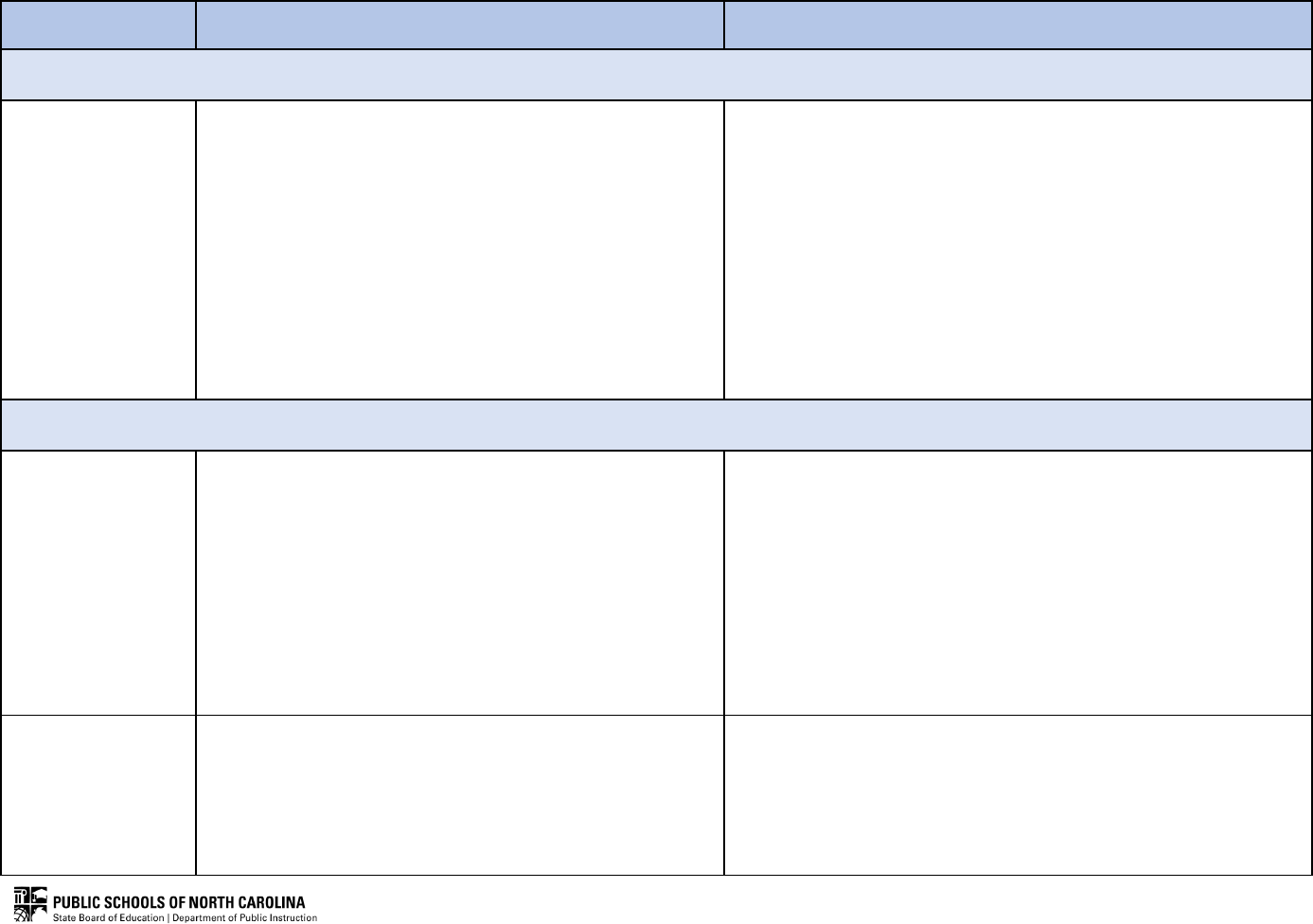
Grade 5 ELA Standards, Clarifications and Glossary
50
4-5 Skill
How to Introduce and Model
How to Build
Prepositions
Form and use
prepositional phrases
The teacher introduces students to prepositional phrases, the
questions prepositional phrases can answer, what they do in a
sentence, and what information they give. Students complete
graphic organizers about prepositional phrase uses.
Students take turns choosing a preposition from a list generated
by the class and create or act out a prepositional phrase.
The teacher helps students build knowledge of forming and using
prepositional phrases by identifying prepositional phrases in a
mentor text.
The teacher helps students build knowledge of forming and using
prepositional phrases asking questions. For example, “Where is the pencil
sharpener in the classroom?” Students reply using a prepositional phrase.
Students recall a routine that they complete (coming to school, going
shopping, eating dinner, etc.). The students orally say their routines
and then write the steps. Students include prepositional phrases in
their writing.
Pronouns
Ensure pronoun-
antecedent
agreement
The teacher introduces/reviews pronouns and their purpose to
replace nouns and make sentences less repetitive and bulky.
The teacher defines antecedent and explains that the pronoun
must agree with its antecedent in gender and number.
The teacher models identifying and connecting antecedents to
the relating pronouns by reading aloud sentences identifying the
pronouns and corresponding antecedents.
Students provide thumbs up or down about the agreement.
The teacher helps students build knowledge of pronoun-antecedent
agreement by modeling and providing examples for the students to
review for pronoun and antecedent agreement.
The teacher helps students build knowledge of ensuring pronoun-
antecedent agreement by having the students use rough drafts they
are currently working on to identify and check agreement between
pronouns and their antecedents.
Use relative pronouns
The teacher introduces the five relative pronouns (that, which,
who, whom, and whose).
He/she explains: who, whom, whose – refers only to people or
pets mentioned by name; that – refers to objects and sometimes
people; which – refers to objects.
The teacher reviews the five relative pronouns.
The teacher provides sentences with the relative pronoun missing, and
students decide which relative pronoun correctly completes the sentence.
Marcus, _____ is a very fast runner, plays first base.
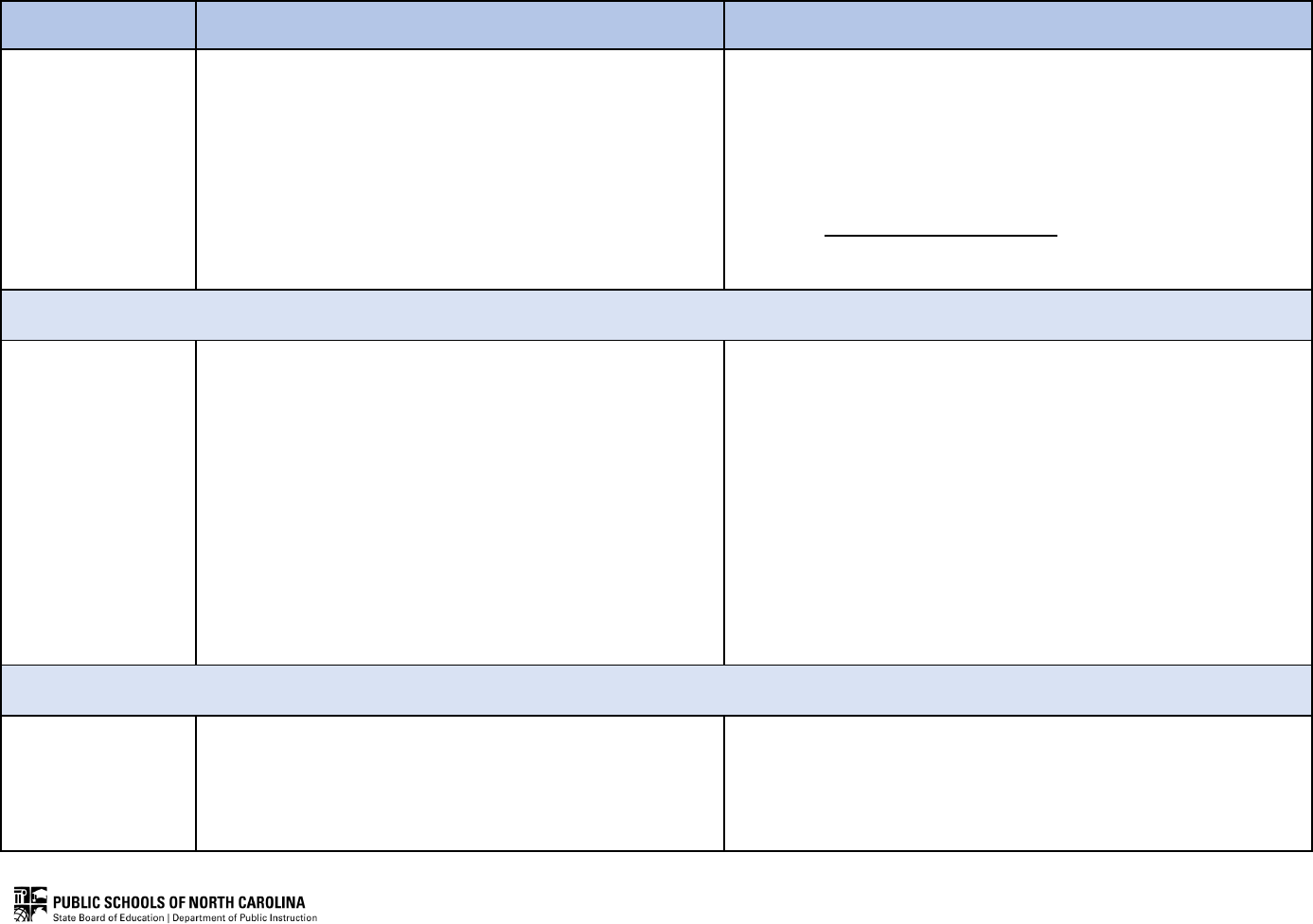
Grade 5 ELA Standards, Clarifications and Glossary
51
4-5 Skill
How to Introduce and Model
How to Build
The teacher provides sentences that are missing the relative
pronouns, and the students use the list to complete them. For
example: The bike ____ belongs to Fred is fast.
The teacher explains that relative pronouns show a relationship between
a noun and a clause. The clause provides descriptive information about
the noun. Share an example: Broccoli, which is my favorite vegetable,
tastes best with cheese.
Which is the relative pronoun?
The clause, which is my favorite vegetable, provides more information.
Students practice writing sentences using relative pronouns correctly.
Commonly Confused Words
Correctly use
frequently confused
words (such as to,
two, too)
The teacher introduces words that are commonly confused such
as to, two, and too and models the correct use of each word.
The teacher uses a poster or visual to support students in
distinguishing between the different words
Students practice writing sentences using the words correctly.
Students collect words in a “word journal” and use pictures to
help them remember the differences.
The teacher helps students build knowledge of correctly using confused
words by modeling forming or using sentences that use more than
one. The students create sentences that use pairs of often-confused
words correctly.
Examples:
The bee wanted to be on the flower.
No, I don’t know everything.
The teacher provides a list containing pairs of often-confused words.
Students work with partners to write sentences correctly using these
words. One student will write a sentence using one of the words correctly.
The partner will write a sentence using the second word correctly.
Interjections
Continue to use
interjections
The teacher reviews interjections (a word used to express strong
feelings such as a sudden emotion: “Wow”).
Working with partners, students create a list of interjections.
The teacher helps students build knowledge in using interjections by
providing sentences and asking students to add interjections.
Students review their writing for places they could appropriately insert
interjections.

Grade 5 ELA Standards, Clarifications and Glossary
52
4-5 Skill
How to Introduce and Model
How to Build
Phrases and Clauses
Explain the function
of phrases and
clauses
The teacher introduces phrases and clauses. A clause contains
both a subject and a verb. A phrase is a group of words that does
not have a subject/verb combination.
The teacher models by brainstorming phrases and clauses.
Students contribute to the list.
The teacher uses a mentor text to show examples in context.
The teacher provides definitions and examples of independent and
dependent clauses, as well as adjective and noun clauses. As a class,
students create a poster that explains the function of all four.
The teacher explains the function of phrases and clauses – they are the
building blocks of sentences. The teacher demonstrates using sentence
strip “blocks.” Students “build” sentences using phrases and clauses the
teacher has provided.
Recognize
independent and
dependent phrases
and clauses
The teacher introduces dependent clauses and independent
clauses by explaining that all sentences are made up of one or
more clauses. Clauses can be dependent or independent.
Independent clauses express a complete thought. They have
a subject and a verb. They can stand alone as a sentence.
John fixed my bike. Students brainstorm other examples.
Phrases do not have a subject and a verb. Phrases are not
complete sentences but groups of words that add additional
information and bring meaning to a sentence. The teacher
provides an example, such as “broken into a thousand pieces.”
Students brainstorm other examples.
Dependent clauses do not express a complete thought. They
cannot stand alone as a sentence. They begin with words like:
after, before, if, since, when, because.
When I get home, I am going to have a snack.
Marty won’t be going because she got sick.
Students brainstorm other examples.
The teacher helps students build knowledge of recognizing independent
and dependent clauses by guiding the students to produce examples
of sentences with independent and dependent clauses. Students
review their writing and highlight independent clauses in one color
and dependent clauses in another. Students recognize and underline
phrases in their writing that need additional information to make the
sentences complete.
The teacher projects and reads aloud a mentor text. Students raise
their hands when they see/hear a dependent clause. The teacher
asks a student to come to the smartboard/board and underline the
dependent clause.
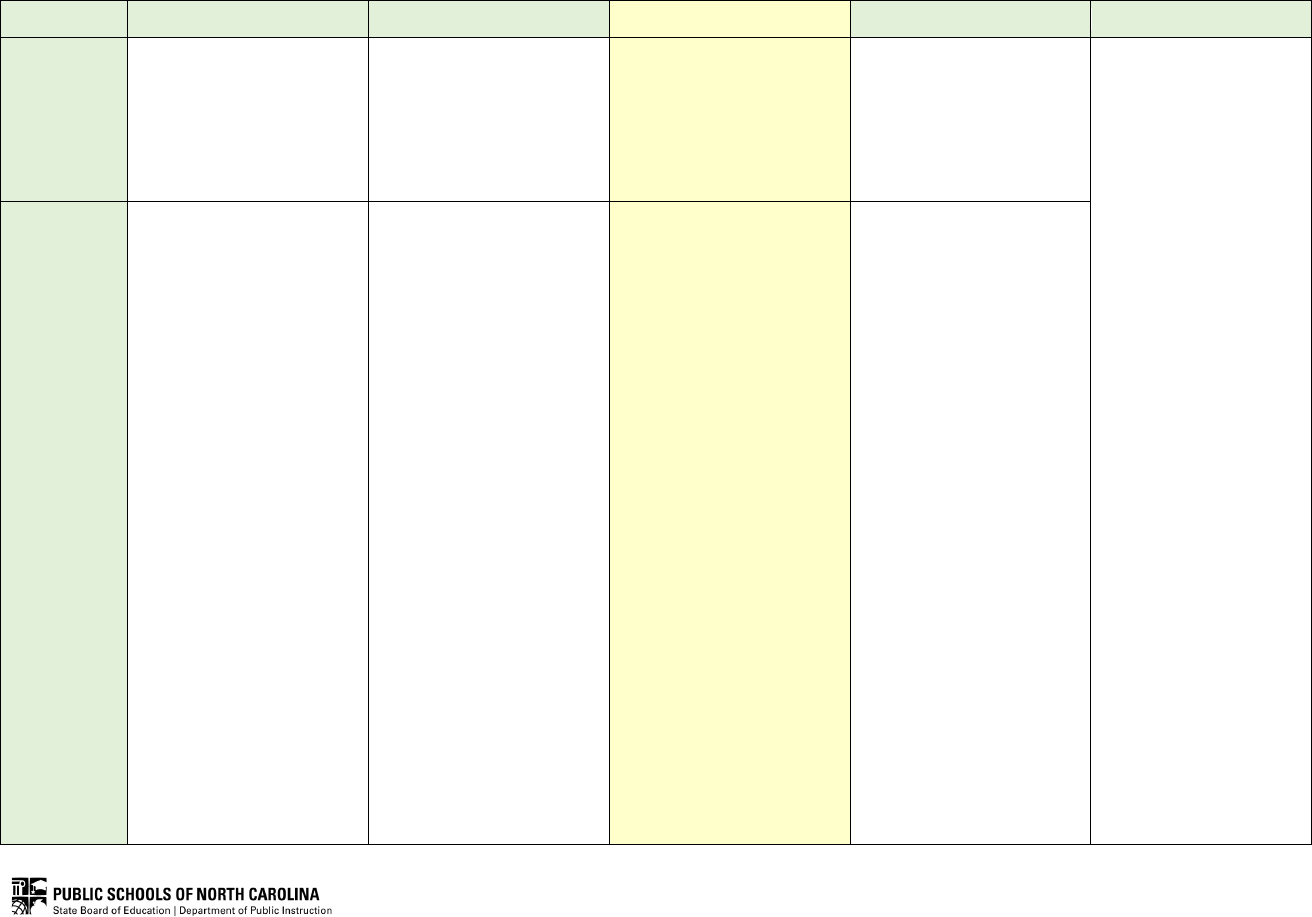
Grade 5 ELA Standards, Clarifications and Glossary
53
L2 – Conventions Continuum
Skill
K-1
2-3
4-5
6-8
9-12
Capitalization
• Capitalize the first word in a
sentence
• Capitalize the pronoun “I”
• Capitalize dates and names
of people
• Capitalize holidays
• Capitalize product names
• Capitalize geographic names
• Capitalize appropriate
words in titles
• Use correct capitalization
• Capitalize appropriate
words in titles
• Continue to use correct
capitalization
Students apply conventions
to create a unique style
and voice when writing or
speaking with increasing
sophistication and effect in
grades 9-12. Skills taught in
previous grades should be
reinforced and expanded.
Punctuation
• Recognize end punctuation
• Name end punctuation
• Use end punctuation for
sentences
• Use commas in dates
• Use commas to separate
single words in a series
• Use commas in greetings
and closings of letters
• Use an apostrophe to form
contractions
• Use an apostrophe to form
frequently occurring
possessives
• Use commas in addresses
• Use commas in dialogue
• Form and use possessives
• Use quotation marks in
dialogue
• Use punctuation to
separate items in a series
• Continue to use commas in
addresses
• Continue to use commas in
dialogue
• Continue to use quotation
marks in dialogue
• Use a comma before a
coordinating conjunction in
a compound sentence
• Use commas and quotations
to mark direct speech and
quotations from a text
• Use a comma to separate
an introductory element
from the rest of a sentence
• Use a comma to set off the
words yes and no
• Use a comma to set off a
tag question from the rest
of the sentence
• Use a comma to indicate a
direct address
• Use underlining, quotation
marks, or italics to indicate
titles of works
• Use punctuation to set off
nonrestrictive/parenthetical
elements
• Use a comma to separate
coordinate adjectives
• Use punctuation to indicate
a pause or break
• Use an ellipsis to indicate an
omission
• Use a semicolon to link two
or more closely related
independent clauses
• Use a colon to introduce a
list or quotation
• Apply hyphen conventions
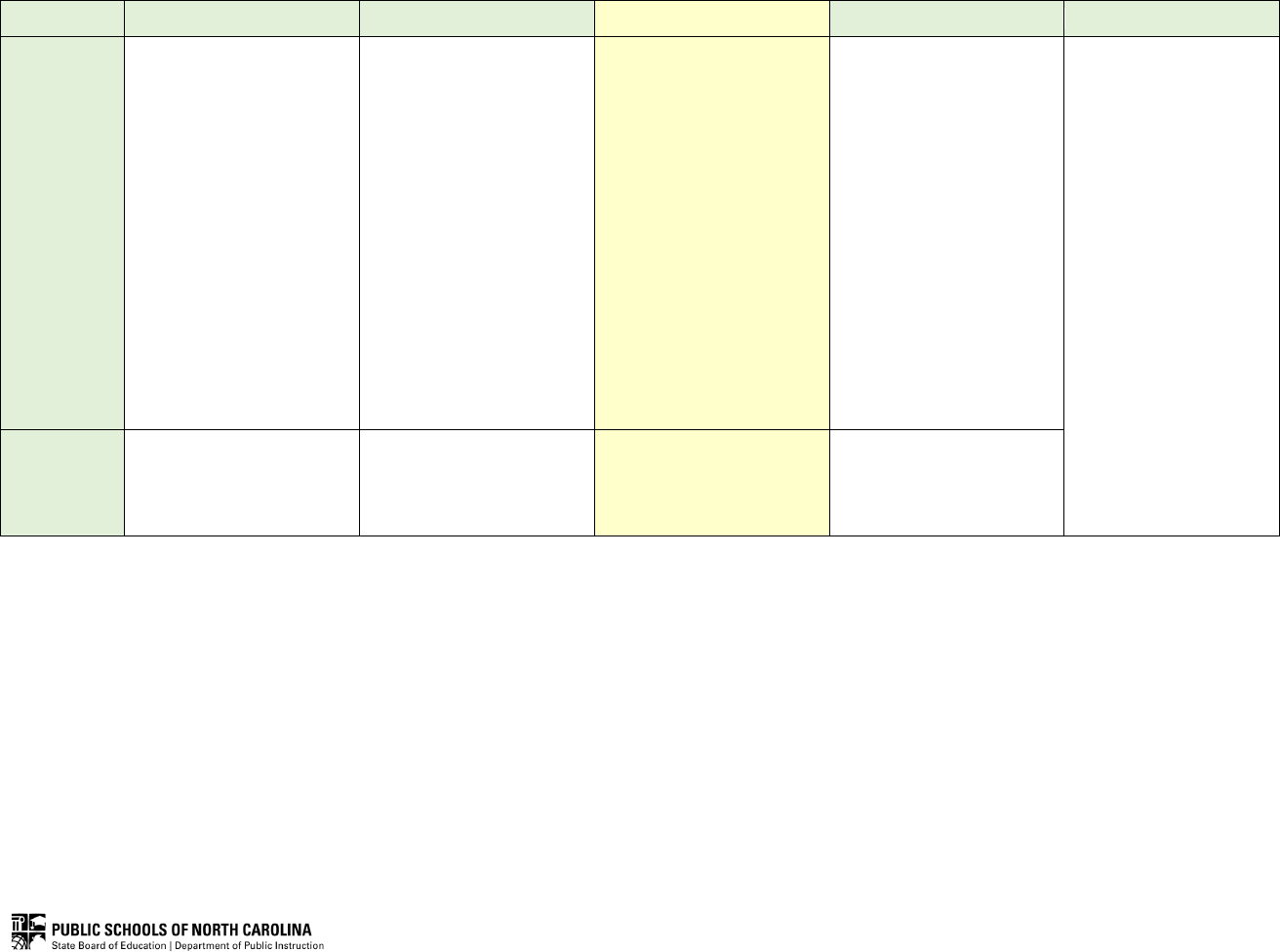
Grade 5 ELA Standards, Clarifications and Glossary
54
Skill
K-1
2-3
4-5
6-8
9-12
Spelling
• Write a letter or letters for
most consonant and short-
vowel sounds
• Spell simple words
phonetically, drawing on
knowledge of sound-letter
relationships
• Spell untaught words
phonetically, drawing on
knowledge of phonemic
awareness and spelling
conventions
• Use conventional spelling
for words with common
spelling patterns and for
frequently occurring grade
appropriate irregular words
• Use conventional spelling
for high frequency and
other studied words
and for adding suffixes to
base words
• Use spelling patterns and
generalizations (such as
word families, position-
based spellings, syllable
patterns, ending rules, and
meaningful word parts)
when writing words
• Continue to use
conventional spelling for
high frequency words and
other studied words
• Continue to use
conventional spelling
for adding suffixes to
base words
• Continue to use spelling
patterns and generalizations
when writing words
• Spell grade-appropriate
words correctly
• Consistently apply
conventional rules to
spell words correctly
Students apply conventions
to create a unique style
and voice when writing or
speaking with increasing
sophistication and effect in
grades 9-12. Skills taught in
previous grades should be
reinforced and expanded.
References
• Consult reference materials
as needed to check and
correct spellings
• Continue to consult
reference materials as
needed to check and
correct spellings
• Continue to consult
reference materials as
needed to check and
correct spellings
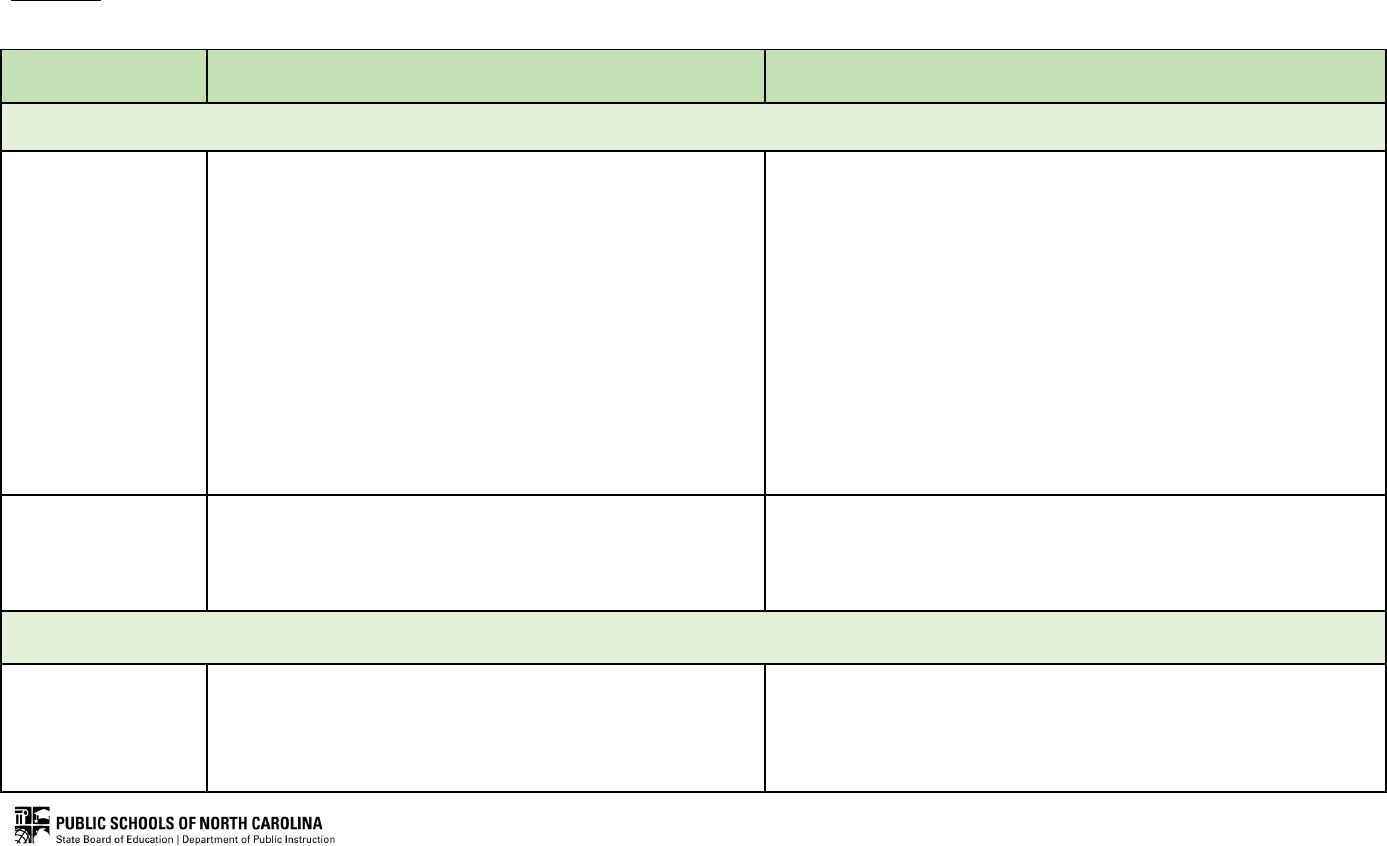
Grade 5 ELA Standards, Clarifications and Glossary
55
CLARIFICATIONS
L.2 Demonstrate command of the conventions of standard English grammar and usage when writing or speaking; demonstrate
proficiency within the 4-5 conventions continuum.
Mastery: Teachers recognize and assess student mastery of the skills in the L.2 Continuum through student writing and speaking.
Students’ writing and speaking are assessed by the student, peers, and the teacher.
4-5 Skill
How to Introduce and Model
How to Build
Capitalization
Capitalize appropriate
words in titles
The teacher introduces titles and explains that “titles” include the
names of books, articles, musical compositions, paintings, etc.
Using a text, such as a newspaper, have students identify all the
titles they can find.
Examine and discuss what the titles have in common and which
words are always capitalized. Point out that the first and last
words of the titles are always capitalized. Examine which words
are not capitalized. Words such as a, the, for, an, and, with, from,
by, of, etc. are not capitalized because they are not needed to
understand the meaning. The remaining words contribute to the
meaning of the text and are capitalized.
Students create “rule” posters/charts for capitalizing titles.
Students write about their favorite books, TV shows, or movies and
correctly capitalize titles. They exchange with peers.
Continue to use
correct capitalization
The teacher reviews capitalization by reminding students to use
a capital letter at the beginning of sentences and to capitalize
proper nouns using examples from grade appropriate text.
Students review their writing for capitalization. Is the first word of each
sentence capitalized? Are the proper nouns capitalized? Students make
corrections as needed.
Punctuation
Use punctuation
to separate items in
a series
The teacher introduces use of commas to separate items in a
series. The teacher models using commas to separate items in a
list of three or more items.
The teacher helps students build this skill by using sentence strips. The
teacher creates a sentence with a list of three items and commas. Cut the
strip so there is a word or punctuation mark on each strip. Students will
put the words and punctuation marks together correctly.
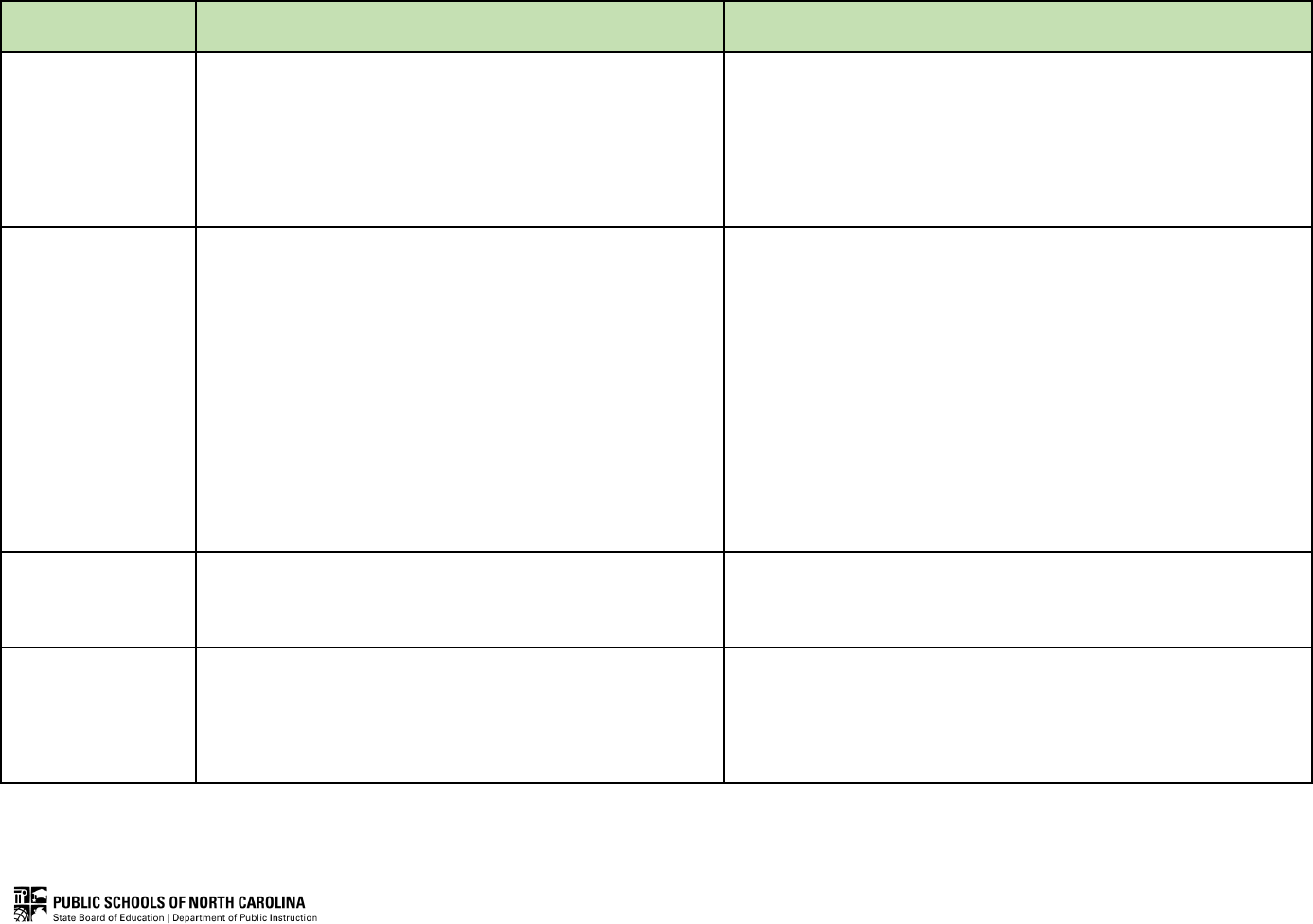
Grade 5 ELA Standards, Clarifications and Glossary
56
4-5 Skill
How to Introduce and Model
How to Build
Brainstorm with students when we create lists (shopping, to do)
and explain that when we are writing a sentence with a list,
commas must be used correctly to separate the items. Create a
list with students. An example might be, “Our favorite school
lunches are…” Model taking the list and turning it into a sentence
with correct punctuation.
Provide students with item lists and have them write sentences using
the lists.
Have students respond to questions creating their own lists.
An example might be, “What three items would you pack for an
overnight trip?”
Continue to use
commas in addresses
The teacher reviews the use of commas in addresses by sharing
examples with students that show the correct use.
The teacher explains how to separate each item in an address
with a comma when including it in a sentence. House numbers
and street names are not separated by commas, nor are states
and zip codes. When addressing an envelope, a comma is only
used between the city and state.
For example:
John Smith
328 Post Avenue
Raleigh, North Carolina 10010
The teacher builds using commas in addresses by asking students to write
their address in complete sentences on notecards, omitting the commas.
(Example: I live on 123 Park Street Aspen Colorado 00011.) Students
trade notecards with peers and add the commas in the correct places.
Notecards are returned to original owners, and addresses are reviewed
for accuracy.
Continue to use
commas in dialogue
The teacher reviews comma uses in dialog using a mentor text.
Together they write a how-to for comma usage in dialogue.
Students apply to their own writing.
The teacher helps students build their understanding of punctuation of
dialogue by creating a comic strip. Students include dialogue using
appropriate punctuation.
Continue to use
quotation marks in
dialogue
The teacher reviews that quotation marks should be used before
and after a character’s words in a dialogue.
Using a mentor text, a teacher shows how quotation marks
are used.
Students work in pairs and have a written “chat” with their partners. They
ask each other written questions and reply in writing using quotation
marks correctly.

Grade 5 ELA Standards, Clarifications and Glossary
57
4-5 Skill
How to Introduce and Model
How to Build
Use a comma before
a coordinating
conjunction in a
compound sentence
The teacher introduces using a comma before a coordinating
conjunction in a compound sentence by explaining that a
coordinating conjunction is a part of speech that connects two
independent clauses into a compound sentence. Coordinating
conjunctions include for, and, nor, but, or, yet, and so. Students
can use the acronym “fanboys” to remember the conjunctions.
A comma is placed after the first independent clause and before
the coordinating conjunction.
Students practice putting together two independent clauses
using a conjunction and correct punctuation.
The teacher helps students build this skill by using sentence strips and
providing small groups with each of the following: an independent clause,
a conjunction, a comma, and a period. Students put the compound
sentences together using the strips and then write the final sentences.
The teacher can use multiple sentences so that groups can switch strips
and complete multiple examples.
Students revise their writing to include compound sentences with a
coordinating conjunction.
Use commas and
quotations to mark
direct speech and
quotations from
a text
The teacher introduces the use of commas and quotations to
mark direct quotations by explaining that students may choose to
include information quoted directly from another source in their
writing. Quotation marks should be used to identify quotations
from another text.
Students are given a question from a text they are currently
reading. The teacher models how to use a direct quote from the
text in their answer by placing a comma and quotation marks to
set off the quotation.
The teacher helps students build this skill by selecting a famous individual
and choosing one or two quotes from the individual. (You can provide a
list of appropriate quotes.) Students write a paragraph about the
individual, including the quotes and using correct comma placement.
Students answer text dependent questions using direct quotations from
the material.
Use a comma to
separate an
introductory
element from the
rest of a sentence
The teacher introduces using commas to separate an introductory
element from the main clause of a sentence by explaining that
introductory elements can include words, a phrase, or a clause
that appear before the main clause. These elements are included
to assist the reader in making sense of or understanding what the
sentence is about.
Create an anchor chart of possible introductory elements using a
comma after each.
The teacher helps students build their understanding of comma usage by
providing students with an introductory element, and then they complete
the sentence, placing a comma correctly after the introductory element.
Students create their own introductory elements and write them on
paper. Each student passes his/her paper to the next student who adds a
comma and completes the sentence. Next, students begin a new sentence
with an introductory element to pass on etc.
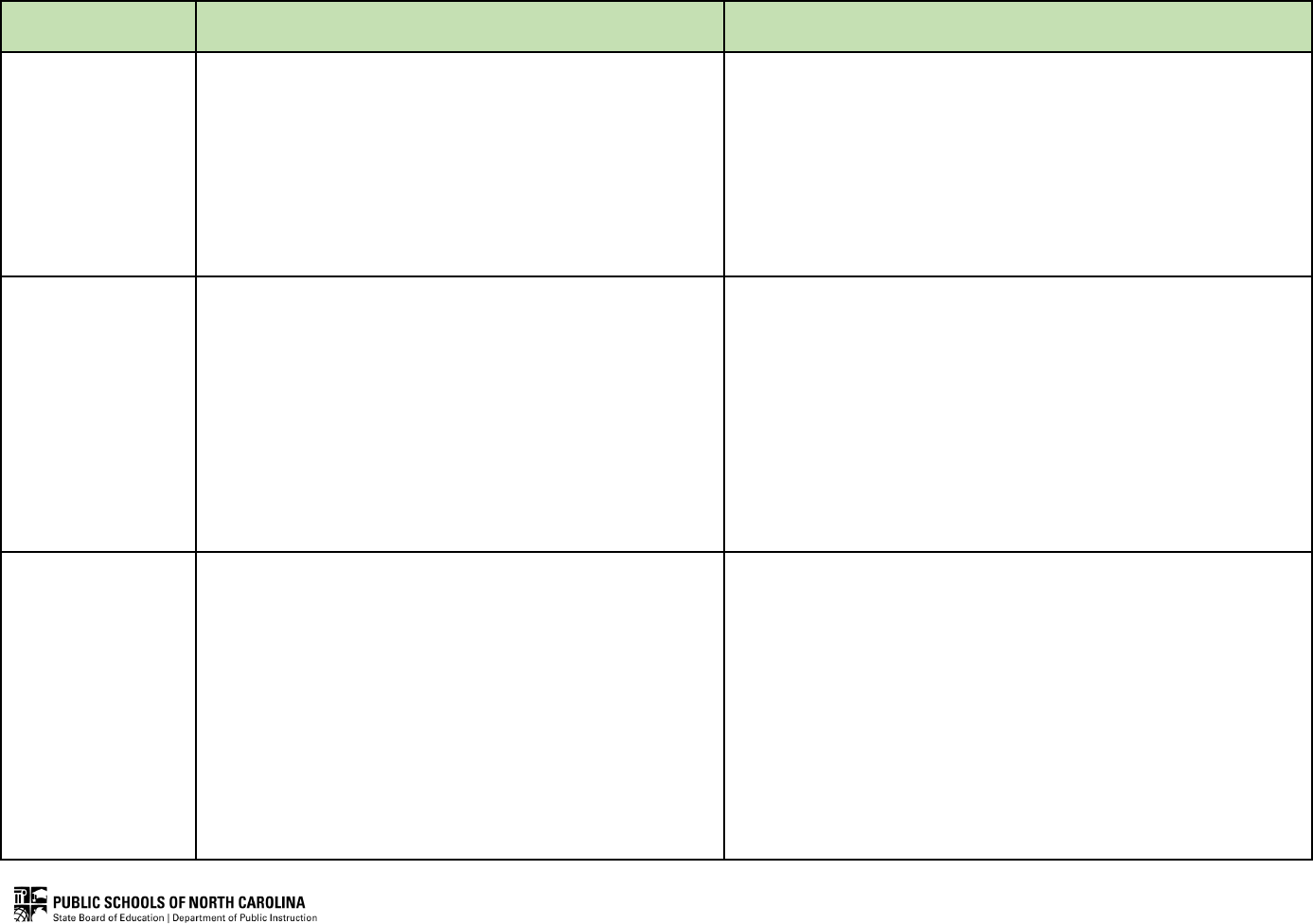
Grade 5 ELA Standards, Clarifications and Glossary
58
4-5 Skill
How to Introduce and Model
How to Build
Use a comma to
set off the words
yes and no
The teacher introduces how a comma is used to set off the words
yes and no from the rest of a sentence.
Model by providing a list of yes or no questions and answering
them in complete sentences that begin with yes or no.
Example:
Question: Did you finish your homework?
Answer: Yes, I did finish my homework.
The teacher helps students build this skill by using text dependent
questions that require yes/no responses followed by an explanation.
Students give their questions to other students to answer using yes or no
and using commas to punctuate the sentence correctly.
Use a comma to set
off a tag question
from the rest of the
sentence
The teacher introduces tag questions by explaining that a tag
question is a short question added to the end of a sentence
following a statement. It usually asks for clarification. A comma is
placed between the statement and the question, which is
followed by a question mark.
Model by providing examples of an affirmative statement and
negative tag. “He is going, isn't he?”
Model by providing examples of a negative statement and
affirmative tag. “She’s not staying, is she?”
The teacher helps students build their understanding of when to use a
comma with a tag question by giving students sentence starters and
allowing them to complete the sentence with a tag question.
Students will provide a sentence starter. “Sam is attending the party…”
The next student will complete the sentence with a comma and a
tag question. “Sam is attending the party, isn’t he?”
Use a comma to
indicate a direct
address
The teacher reviews how to use a comma to set off a name or
pronoun, whether it comes at the beginning, middle, or end of
the sentence, when a sentence directly addresses the readers.
The teacher presents a piece of text that includes dialogue.
Together, the teacher and students underline any instance
where a direct address is used, and then they circle the
comma placement.
Model writing a sentence with a direct address. First, have the
students write a question for a famous individual. Take their
questions and rewrite them using a direct address.
Build this skill by instructing students to write a set of questions or
directions for their classmates in order to accomplish a task.
For example, the task might be writing the date on the board. Instead of
telling their classmates what steps to take, they will need to write them
and include a direct address.
Example:
Billy, pick up the pen off the teacher’s desk.
Sadie, take the pencil from Billy and hand it to Sam.
Sam, write the date on the whiteboard.
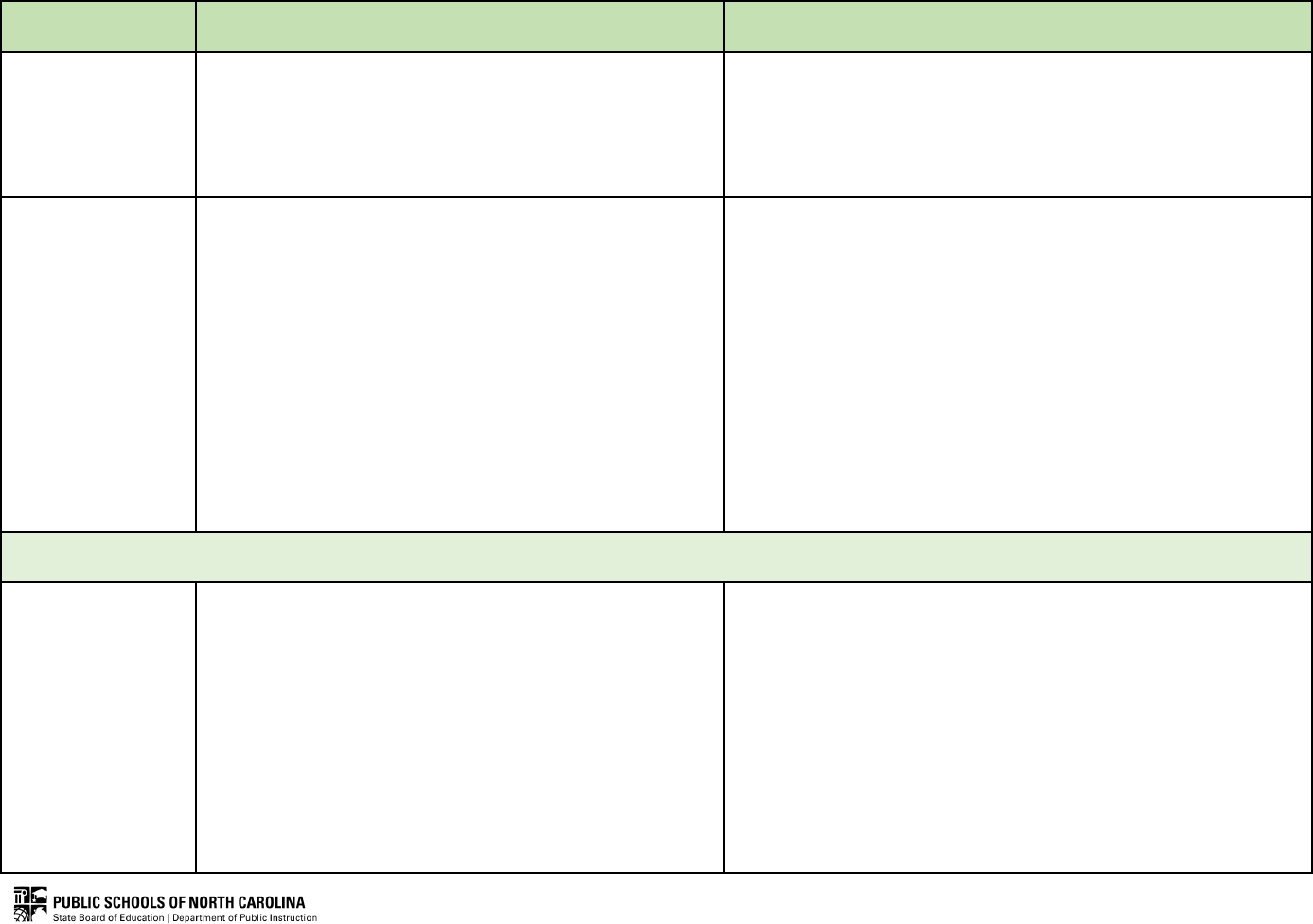
Grade 5 ELA Standards, Clarifications and Glossary
59
4-5 Skill
How to Introduce and Model
How to Build
Example:
Student Question: What was it like being president during the
Civil War?
Rewritten with a direct address: President Lincoln, what was it
like being president during the Civil War?
Use underlining,
quotation marks, or
italics to indicate
titles of works
The teacher introduces how titles of works are identified in writing
by explaining that when referencing titles in writing, students use
quotation marks to identify titles that represent only a portion of
a completed work (newspaper article, magazine article). Italics
and underlining are used to identify the title of a complete work
(book, magazine, newspaper, movie). It is generally accepted that
if the writing is in a digital format, the title will be italicized, and if
it is handwritten, the title will be underlined.
Students list examples of titles. Use examples to create an anchor
chart in a tree map. Title the tree map “Titles” and together
create a list of the types of titles that need to be put in quotations
and the ones that are italicized or underlined.
The teacher helps students build this skill by giving students a list of
titles. Students sort titles into “Needs Quotation Marks” and “Needs
Italics/Underlining.”
Spelling
Continue to use
conventional spelling
for high frequency
words and other
studied words
The teacher reviews high frequency words and how to use
words with similar patterns, word families, spelling patterns, and
syllable patterns to identify and spell the high frequency words.
Use a word wall or anchor charts to provide a reference for
students.
Allow students to identify high frequency words in their texts
(informational and literature). Allow students to revise and
correct spelling in their writing.
Review spelling rules that apply to specific words.
The teacher helps students build the ability to spell high frequency
words by continuous review of spelling patterns, word families, and
syllable patterns.
Use a spelling journal throughout the year to categorize words in
different ways: alphabetical, spelling rules, etc. Include vocabulary,
spelling words, “Words Like This One.”
Have students create spelling rule anchor charts.

Grade 5 ELA Standards, Clarifications and Glossary
60
4-5 Skill
How to Introduce and Model
How to Build
Continue to use
conventional spelling
for adding suffixes to
base words
The teacher reviews suffixes including: -ing, -y, -ed, -s, and -es.
Identify words using suffixes in reading and point out how the
words end and how that affects the ending.
• If the word ends in silent -e and the suffix begins with a vowel,
drop the -e.
• If the word ends with a consonant + y, change the -y to -i,
except for suffixes that begin with -i.
• If a word ends with -s, -x, -z, -ch, or -sh, add -es to make
them plural.
Provide examples and deconstruct them into base word and
suffix. Students use these examples to write their own rules for
adding suffixes.
The teacher helps students build their ability to use suffixes correctly by
having students write their own rules for adding suffixes. The teacher
provides examples using “word equations” for each rule.
base word + suffix = new word
Examples:
teach + ing = teaching
study + ing = studying
Continue to use
spelling patterns and
generalizations when
writing words
The teacher reviews word families, spelling patterns, and syllable
patterns. Model how to spell unknown words.
The teacher helps students build the ability to spell high frequency words
by giving students the opportunity to categorize words in different ways:
alphabetical, spelling rules, etc. Include vocabulary, spelling words,
“Words Like This One.”
Students create spelling rules anchor charts.
Spell grade-
appropriate words
correctly
The teacher introduces grade-appropriate words in their texts
and explains word families, spelling patterns, and syllable
patterns to spell unfamiliar words.
The teacher helps students build their ability to spell high frequency
words by providing them with opportunities to learn new words and use
them in writing assignments.
Reference
Continue to consult
reference materials as
needed to check and
correct spellings
The teacher reviews use of the dictionary and digital resources to
discover and correct spelling of grade-appropriate words and high
frequency words.
The teacher models how to use a dictionary or other online
resources, as well as spell check, to correct a paragraph with
intentionally misspelled words.
The teacher builds this skill by providing students with a paragraph with
intentionally misspelled terms. Students locate the misspelled terms and
correct them using reference materials. Students list the reference
materials used.

Grade 5 ELA Standards, Clarifications and Glossary
61
Language Standards
STANDARD
CLARIFICATION
GLOSSARY
Cluster: Conventions of Standard English
L.5.1
Demonstrate command of the
conventions of standard
English grammar and usage
when writing or speaking;
demonstrate proficiency within
the 4-5 grammar continuum.
See Language Grammar Continuum
conventions of spoken and written standard
English – the generally accepted rules and
practices for speaking and writing in the
English language
grammar – the set of rules and conventions that
govern the way a particular language functions,
including how words and sentences are formed,
how punctuation is used, etc.
proficient/proficiently – competent, skilled,
and/or showing knowledge and aptitude in doing
something; the level at which one is able to
complete a particular skill, such as reading
complex texts, with success
usage – the manner in which language is used,
closely related to style and tone; the way in which
a word or phrase is used according to standard
English conventions
L.5.2
Demonstrate command of the
conventions of standard English
capitalization, punctuation, and
spelling when writing;
demonstrate proficiency within
the 4-5 conventions continuum.
See Conventions Continuum
conventions of spoken and written standard
English – the generally accepted rules and
practices for speaking and writing in the
English language
proficient/proficiently – competent, skilled,
and/or showing knowledge and aptitude in doing
something; the level at which one is able to
complete a particular skill, such as reading
complex texts, with success
punctuation – marks (often small) that are used
to separate written elements, clarify meaning,
guide pacing, and indicate inflection (e.g., period,
comma, parentheses, question mark, etc.)

Grade 5 ELA Standards, Clarifications and Glossary
62
STANDARD
CLARIFICATION
GLOSSARY
Cluster: Knowledge of Language
L.5.3
Use knowledge of language and its
conventions when writing,
speaking, reading, or listening.
a. Expand, combine, and reduce
sentences for meaning,
reader/listener interest,
and style.
b. Compare and contrast the
varieties of English used in
stories, dramas, or poems.
Students use what they know about language and its
grammar and usage to make effective choices in their
writing or speaking or to aid their comprehension when
reading or listening
• Students use a variety of sentences to affect meaning
and style and maintain the interest of the reader.
• Students differentiate between the various forms of
English, such as dialects and registers, used in stories,
dramas, or poems.
In the Classroom:
The teacher explains that sentence length is a writer’s
choice. Using a mentor text, the teacher and students
find simple, compound, and complex sentences and
determine the reasoning for the author’s use of each.
Students examine their own writing for sentence
variety. They expand, combine, and reduce sentences
to create a style or particular effect.
The teacher provides examples of long or run-on
sentences and shows students how to reduce them.
Students choose a draft of their writing, find one or two
run-on sentences, and practice reducing them.
Students work in pairs and read excerpts from several
stories the teacher has chosen that contain different
dialects. Using graphic organizers, students record the
similarities and differences in the dialects that are used
and what this says about the characters.
compare – In a general sense, this is to measure
or note the similarities and differences between
or among objects, people, etc.; however, when
used together with contrast, this refers to the
highlighting of the ways in which two or more
objects, people, etc. are alike or similar.
drama – a genre or category of literature generally
designed to be presented to an audience by actors
on stage that relies heavily on dialogue
poem – a literary work, generally composed
in verse and using figurative language,
typically composed using a set structure
(i.e., organizational rules)

Grade 5 ELA Standards, Clarifications and Glossary
63
STANDARD
CLARIFICATION
GLOSSARY
Cluster: Vocabulary Acquisition and Use
L.5.4
Determine and/or clarify the
meaning of unknown and multiple-
meaning words and phrases based
on grade 5 reading and content,
choosing flexibly from a range of
strategies: context clues, word
parts, word relationships, and
reference materials.
Students figure out and/or confirm the meaning of
grade 5 words/phrases that are unfamiliar or have
multiple meanings. When figuring out and/or confirming
the meaning of words/phrases, students choose from
several strategies:
• Context clues: Students use definitions, examples, or
restatements in the text to determine the meaning of
the word or phrase.
• Word parts: Students use common affixes and roots
as clues to the meaning of words. For example, the
root “photo” means “light” in the words photograph,
photosynthesis.
• Word relationships: Students use the relationship
between particular words (e.g. synonyms, antonyms,
homographs) to better understand each of the words.
• Reference materials: Students consult reference
materials such as dictionaries, glossaries, thesauruses,
in print and digital formats to verify how to
pronounce a word and to determine the exact
meaning of the words and phrases in context.
In the Classroom:
The teacher demonstrates the process of breaking
apart words into prefixes, roots, and suffixes to
determine their meanings using a three-column graphic
organizer. He/she provides students with examples of
sentences from grade 5 content that contain words with
prefixes, roots and suffixes, leaving out one part of the
word (for example: ____portation—the prefix trans is
missing). Using a provided word bank with the prefixes,
suffixes, or roots that fit into the blanks, students
identify the missing part, based on the context of the
sentence, and provide the meaning of the word, along
with the meaning of each part of the word (prefix, root,
and suffix).
context clues – refers to elements preceding and
following an unknown or ambiguous word,
phrase, or reference which can help define or
identify it
multiple-meaning words and phrases – words
and phrases that have more than one meaning
(e.g., elephant’s trunk / car trunk)
reference materials – sources that provide
information about a topic under investigation;
materials that a researcher consults for facts and
data, citing as necessary
word relationship – the manner in which words
relate to one another (e.g., synonyms, antonyms,
homophones, etc.)

Grade 5 ELA Standards, Clarifications and Glossary
64
STANDARD
CLARIFICATION
GLOSSARY
The teacher models for students how to figure out an
unknown word when they are reading grade 5 content
using reference materials. Students may refer to
dictionaries, thesauruses, or glossaries to decide which
definition best fits the meaning of the word within the
context of what is being read. The teacher uses a read
aloud/think aloud process to determine which meaning
best fits the unfamiliar word.
L.5.5
Demonstrate understanding of
figurative language and nuances in
word meanings.
a. Interpret figurative language,
including similes and
metaphors, in context.
b. Recognize and explain the
meaning of common idioms,
adages, and proverbs.
Students show they understand figurative language and
subtle differences in word meanings.
• Students decipher the meaning of figurative language,
such as metaphors and similes from context.
• Students identify and explain the meaning of familiar
idioms, adages, and proverbs.
In the Classroom:
Using the lyrics to a popular song, the teacher points
out similes and metaphors and underlines the words
and phrases that provide clues to the meaning of the
figurative language example. Students are given
additional song lyrics and highlight the similes and
metaphors they find. They underline any words in
the lyrics that helped them determine the meaning.
In pairs, students share their examples.
The teacher provides direct instruction to help students
identify idioms, adages, and proverbs by reading phrases
from the shared text to discuss how the meaning is
different from the literal meanings. (e.g. Dan decided to
hit the books (meaning- study). Students find examples
of idioms, adages, or proverbs from the text to
determine the meanings to share with the class.
Students determine what the relationship is, and how it
relates to and affects the meaning of the text.
adage – a traditional saying which expresses a
generally observable truth about life (e.g., The
early bird gets the worm.)
figurative language – language that uses words
and phrases to express a meaning that is different
from the literal meaning (e.g., metaphor,
allusion, etc.)
idiom – a phrase or clause whose meaning is
typically cultural and/or regional and cannot be
determined by the literal meaning of the
individual words used (e.g., on pins and needles –
to feel anxious or nervous about something)
nuance – a subtle difference or variation in a
shade of meaning, significance, or expression
(e.g., happy compared to giddy)
proverb – a short, pithy saying or expression
that states a general life truth or piece of advice
(e.g., Laughter is the best medicine.)
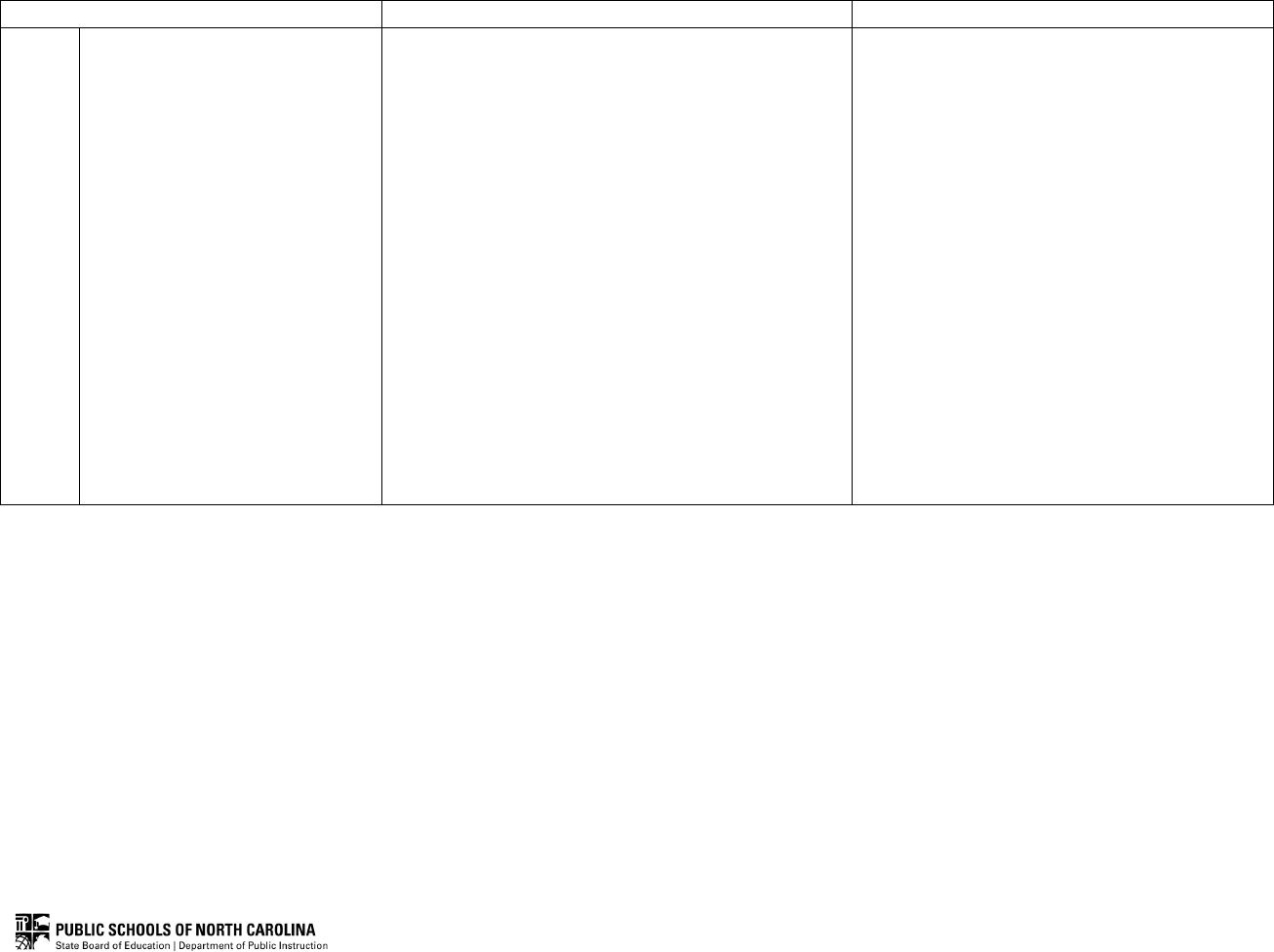
Grade 5 ELA Standards, Clarifications and Glossary
65
STANDARD
CLARIFICATION
GLOSSARY
L.5.6
Acquire and use accurately grade-
appropriate general academic and
domain-specific words and
phrases, including those that signal
contrast, addition, and other
logical relationships.
Students learn and correctly use Tier 2 and Tier 3 words
and phrases. They use words that indicate contrast,
addition, and other logical relationships (e.g., however,
although, nevertheless, similarly, moreover, in addition).
In the Classroom:
The teacher provides texts and exemplar pieces of
writing containing words and phrases that signal
contrast, addition and other logical relationships.
He/she highlights words and phrases and asks students
to identify the type and why they are used. Students
then work in pairs and use sticky notes to mark in the
text where they find these types of words and phrases
and how they are used. Students record their findings
on three-column organizers, labeled “Word or Phrase”,
“Addition, Contrast, or Other Logical Relationship”, and
“Meaning” (how they are used). The teacher compiles
students’ words and phrases on a chart for the
classroom. Students use a piece of their writing and
revise to include these types of words and phrases.
domain-specific vocabulary/words/phrases –
Tier 3 words and phrases that are considered
unique to a particular subject or discipline that are
not typically used during informal conversation
general academic – Tier 2 academic words and
phrases that students encounter across multiple
subjects and disciplines (e.g., analyze, evaluate,
compare and contrast, etc.)
